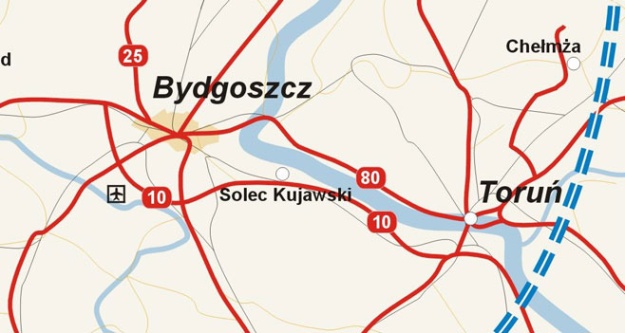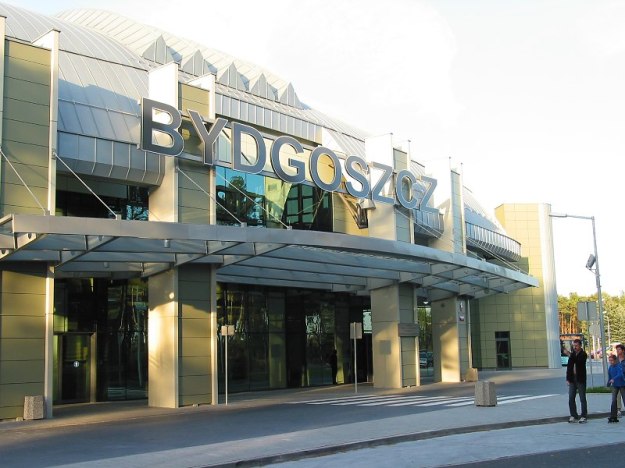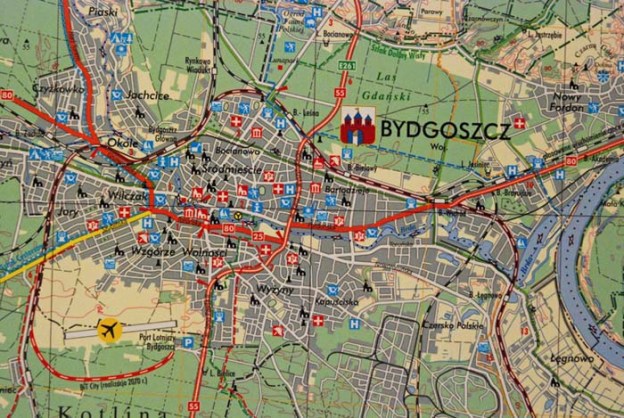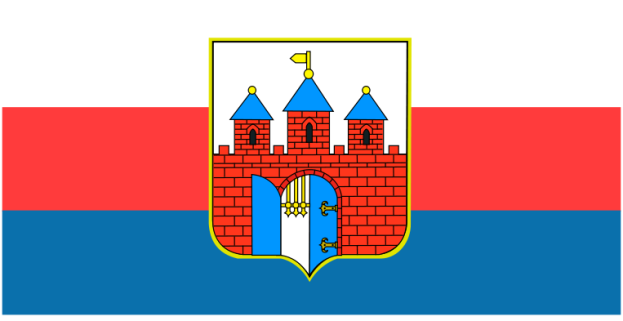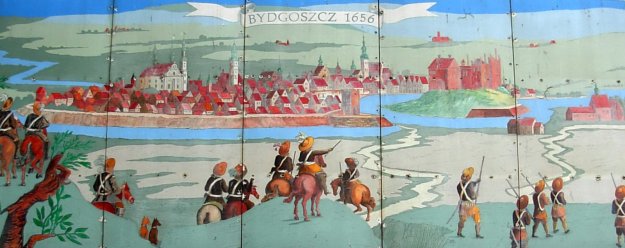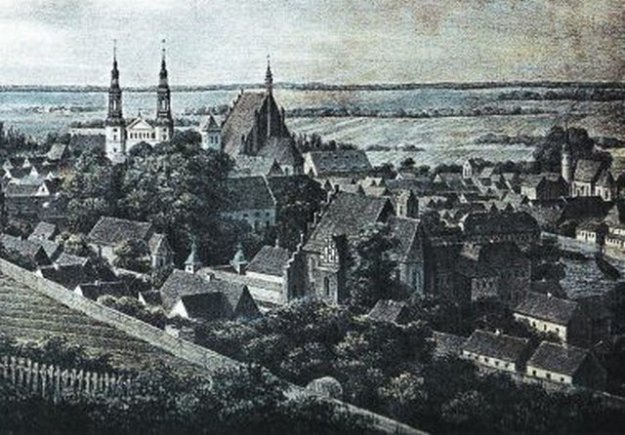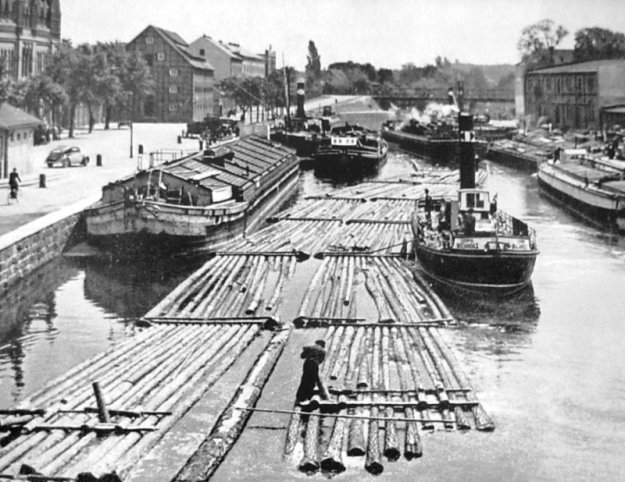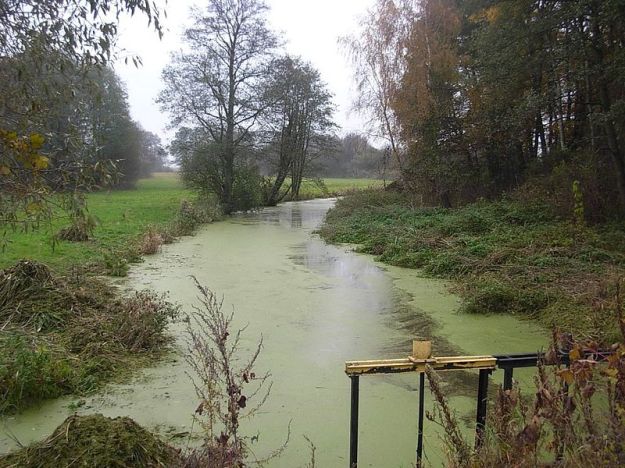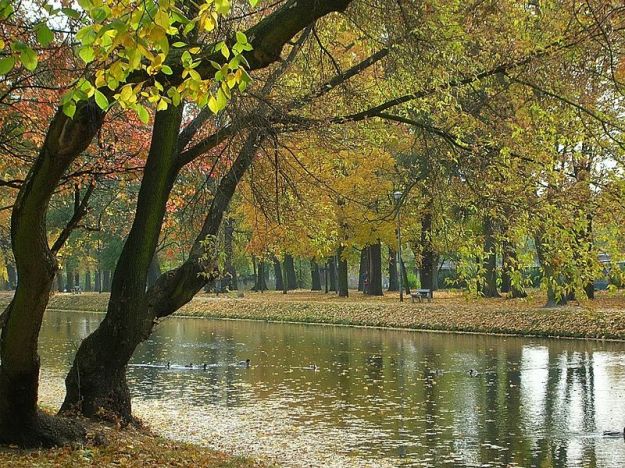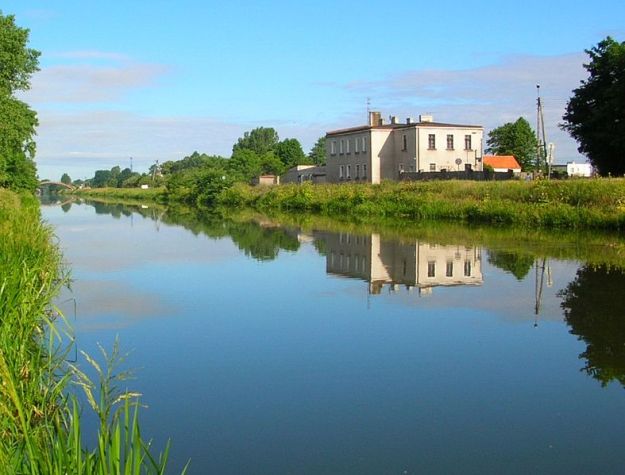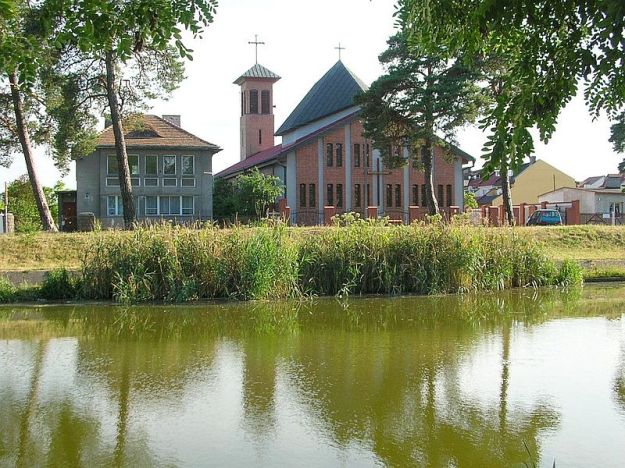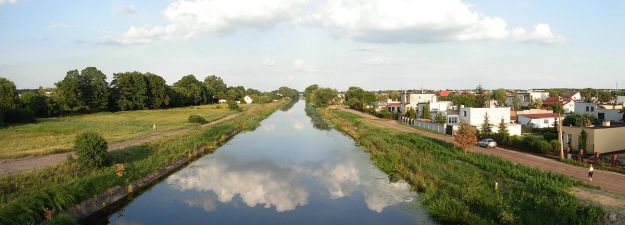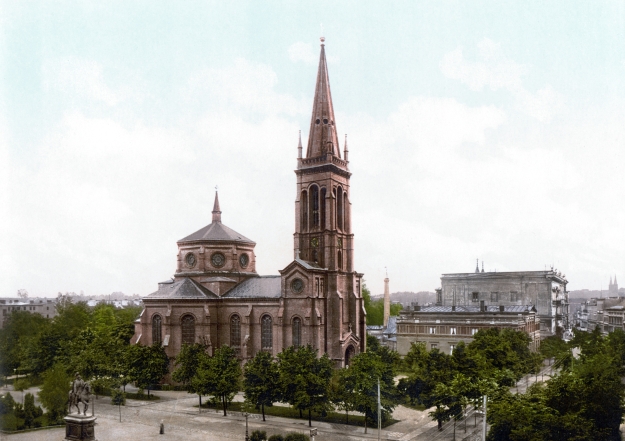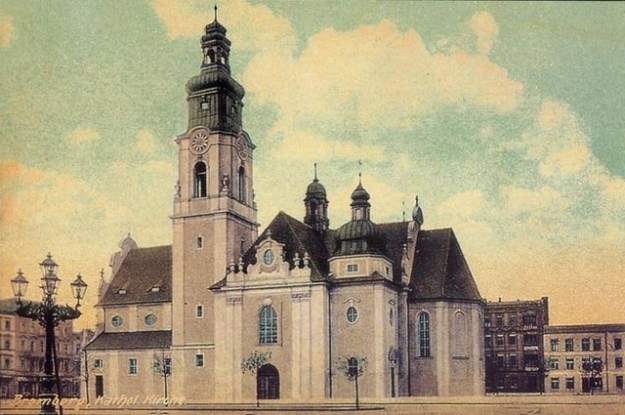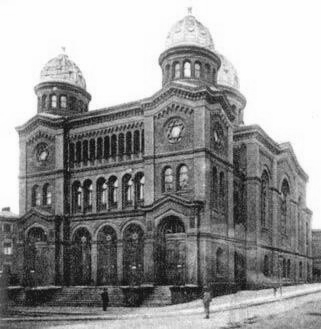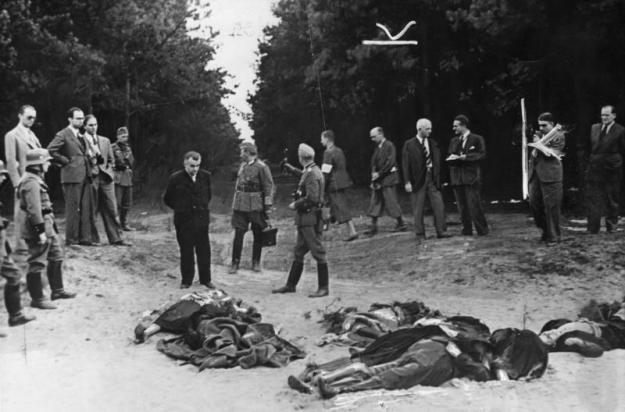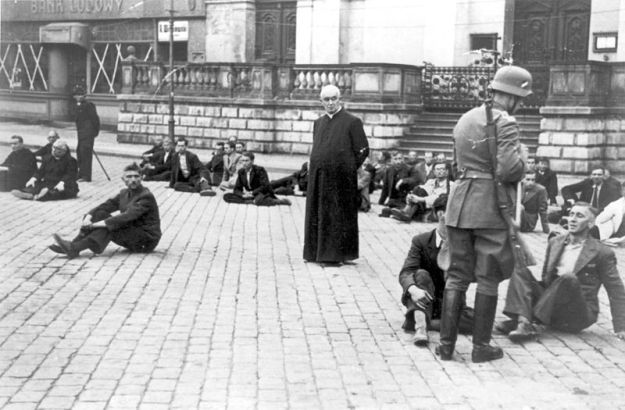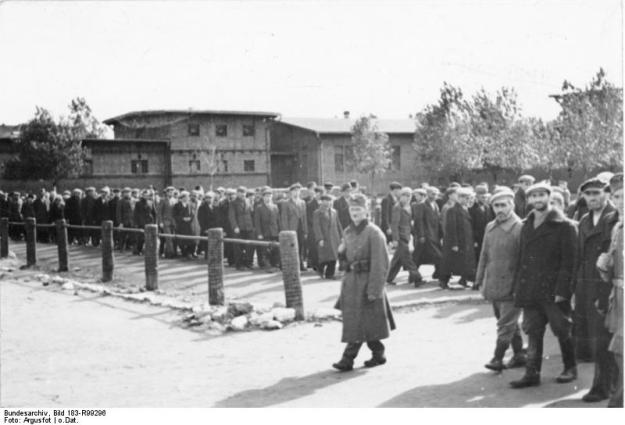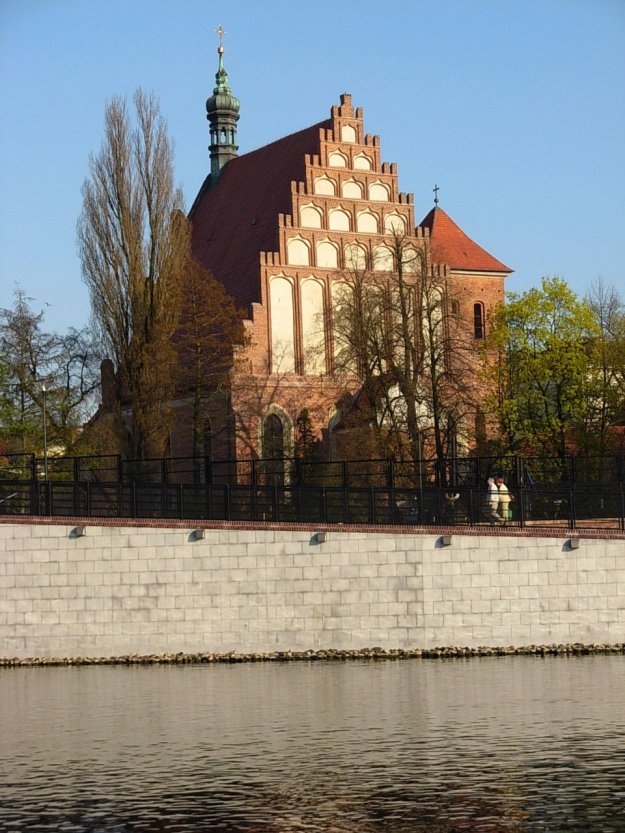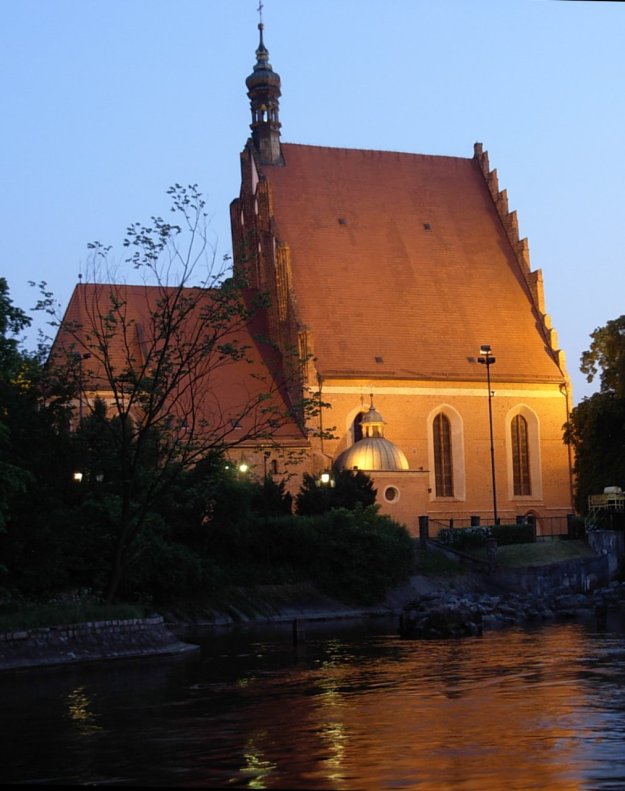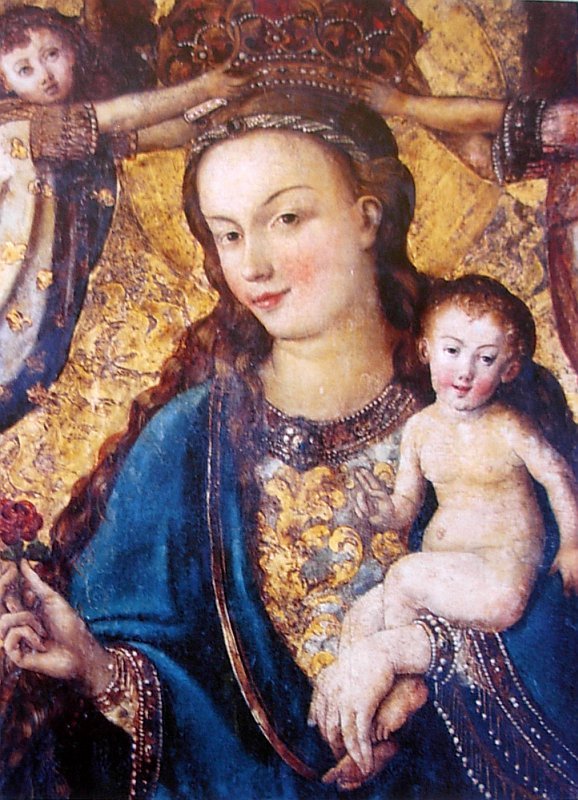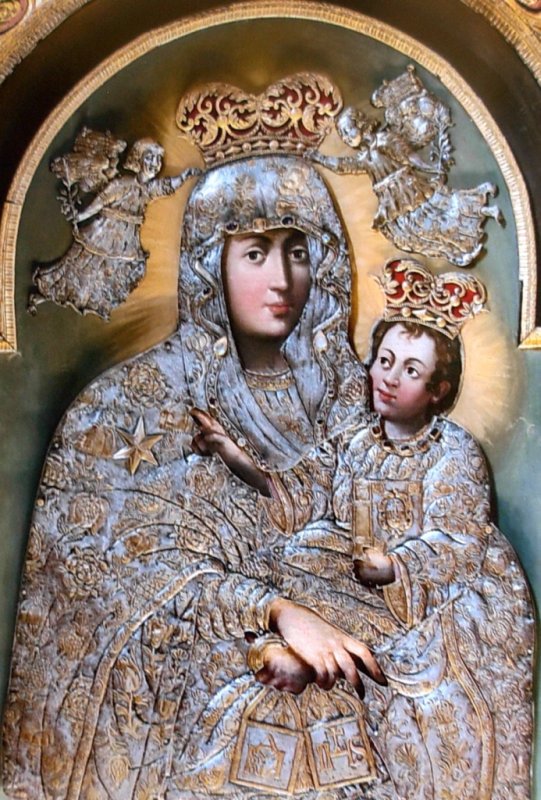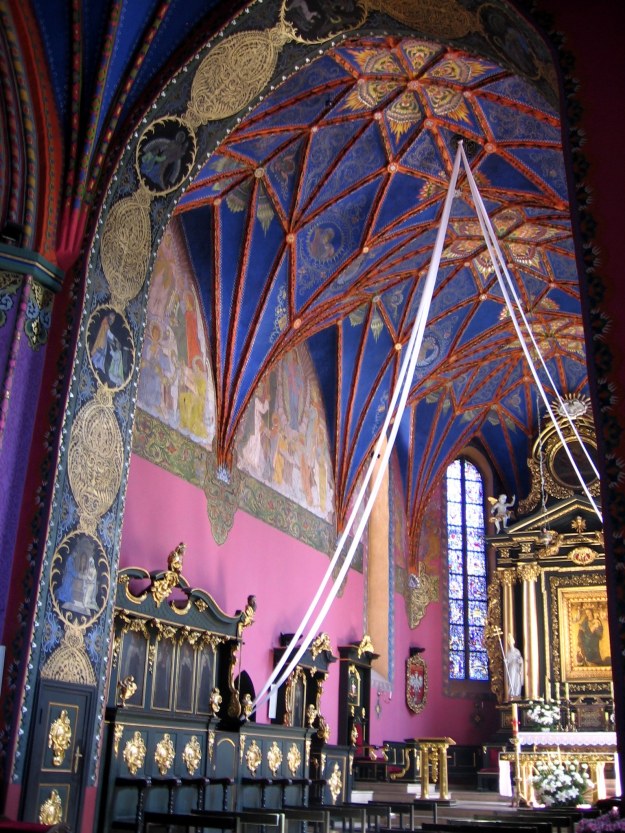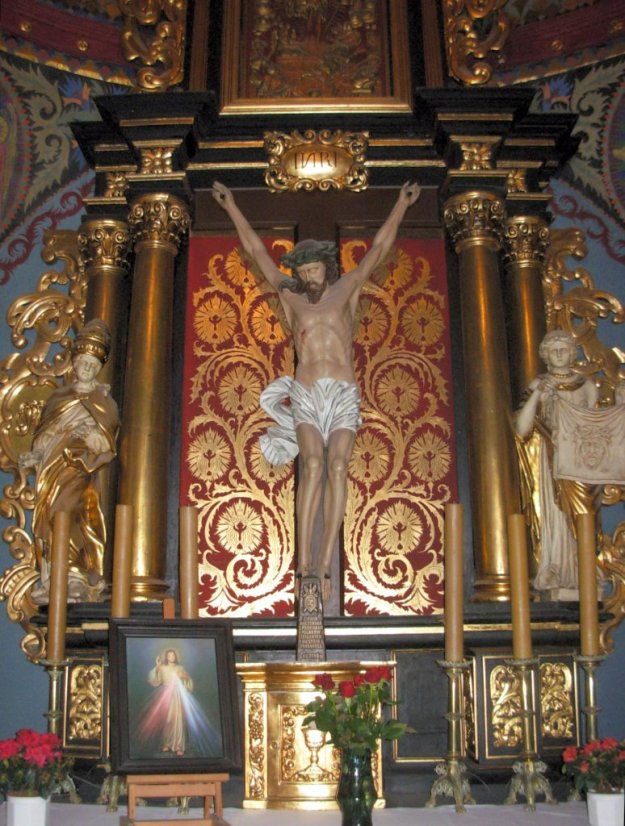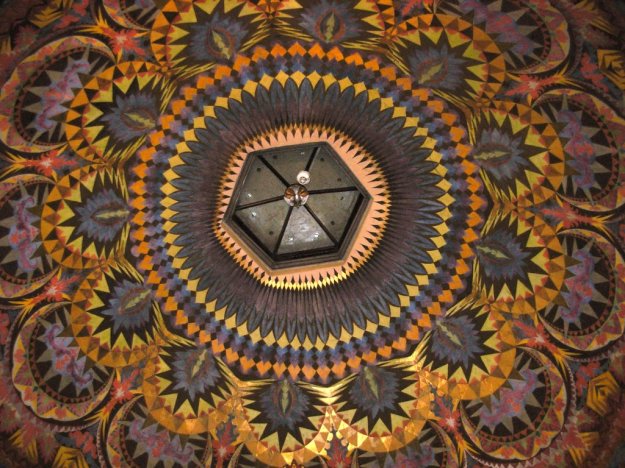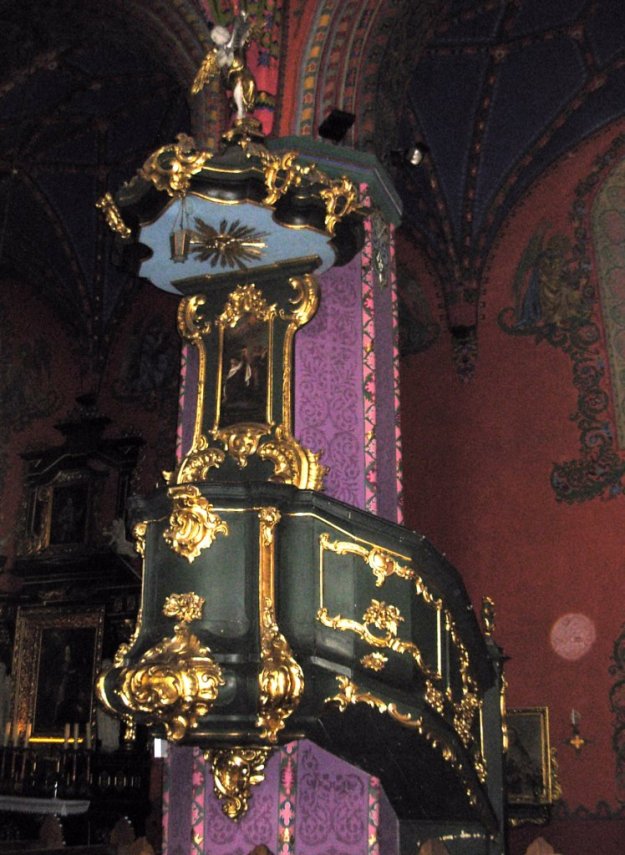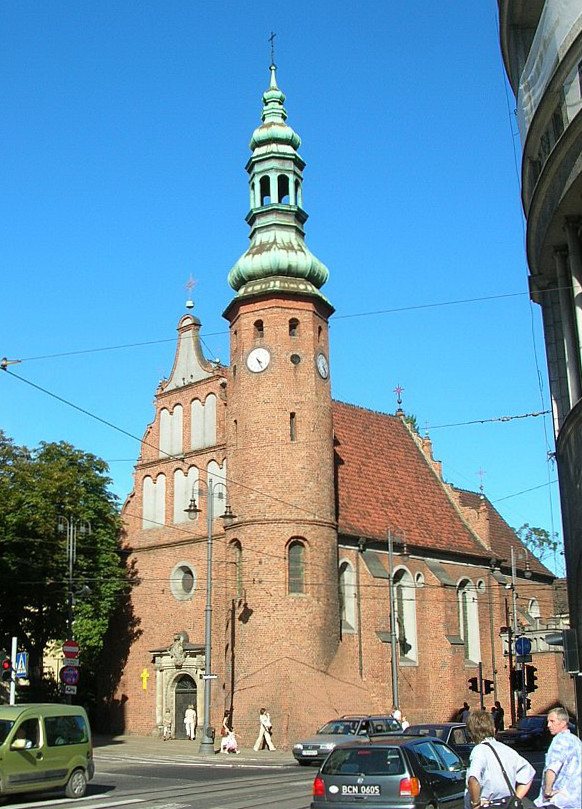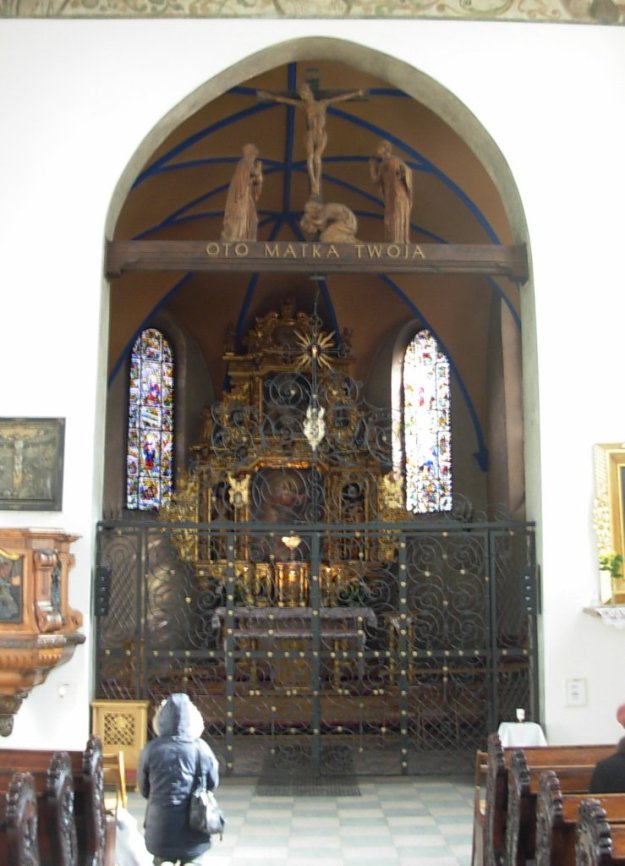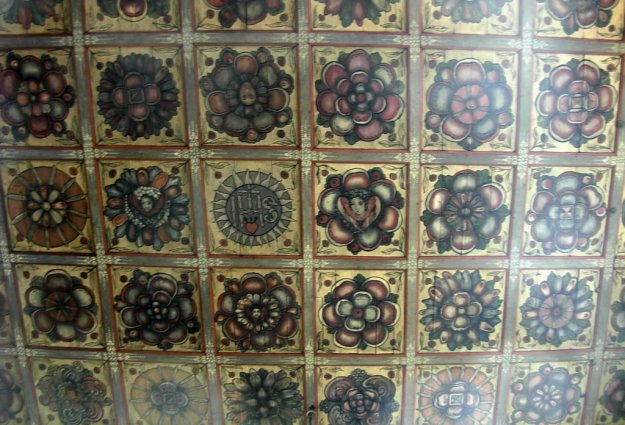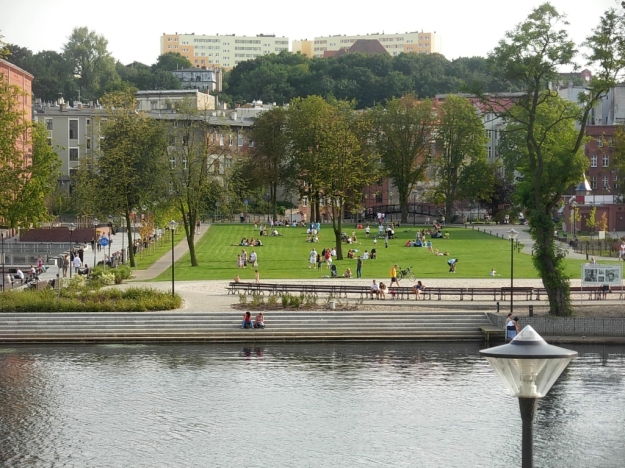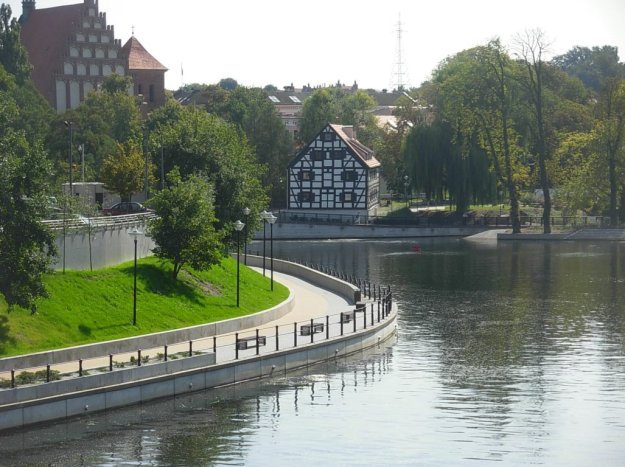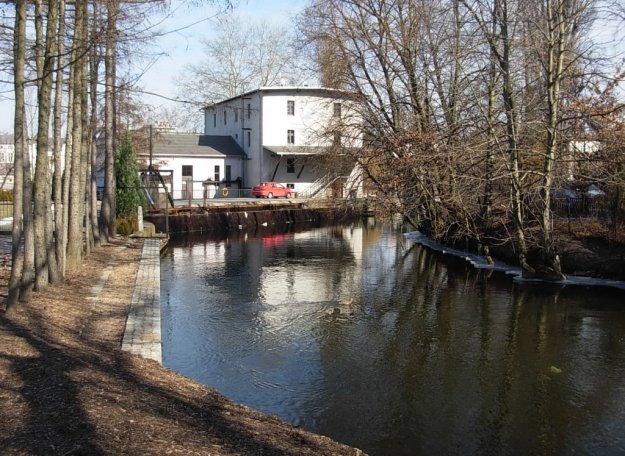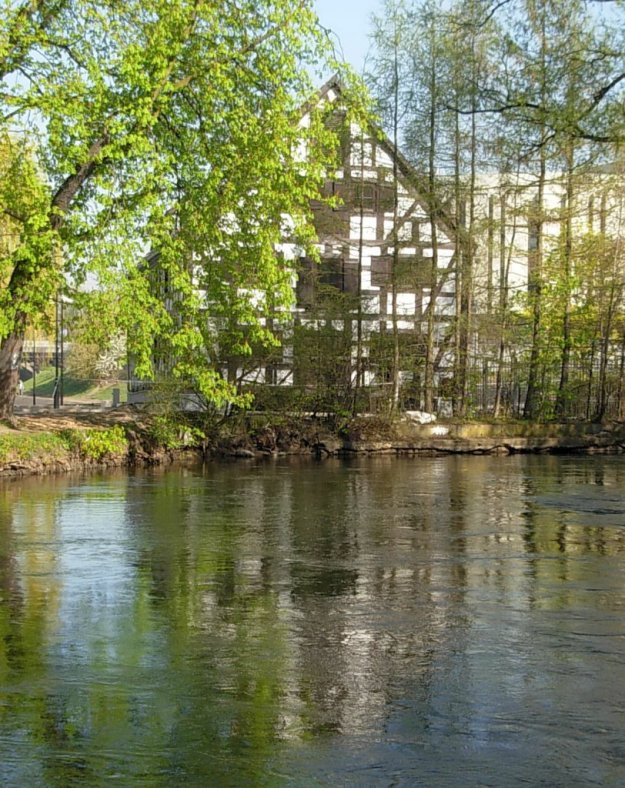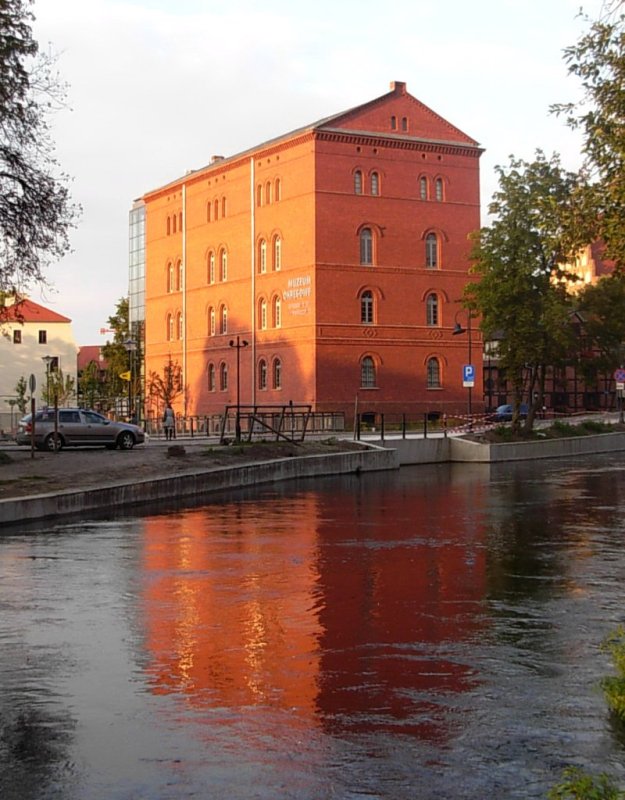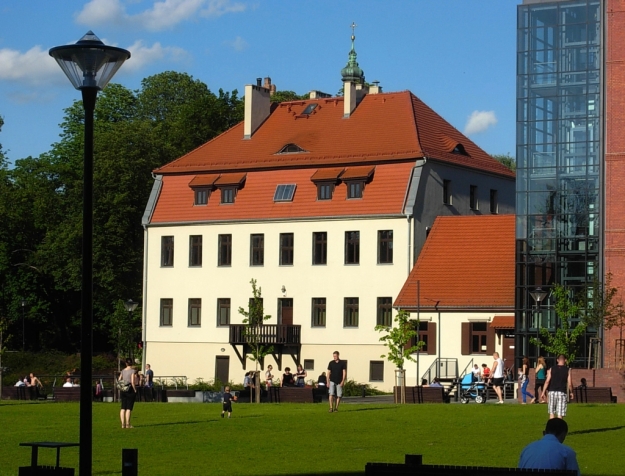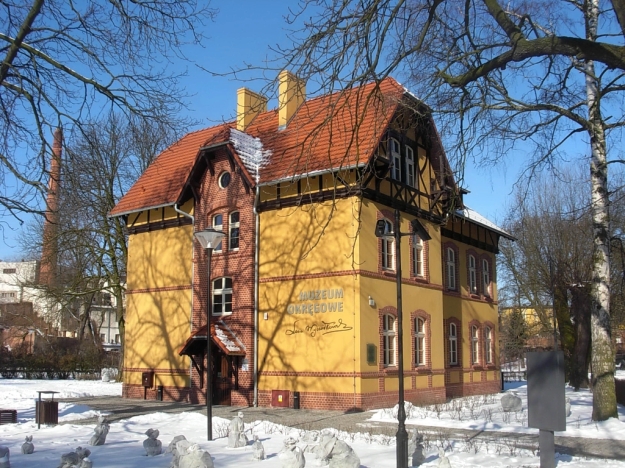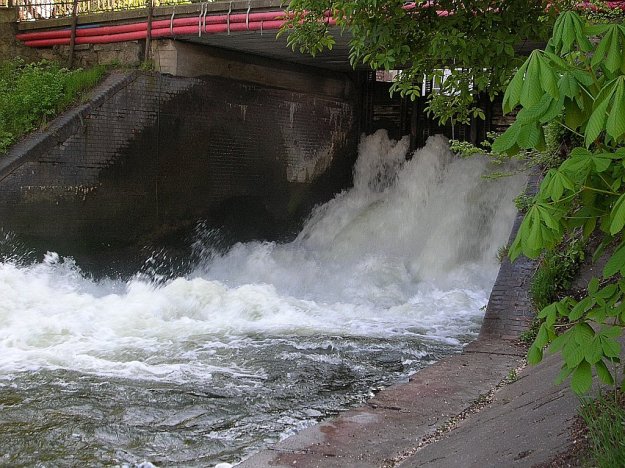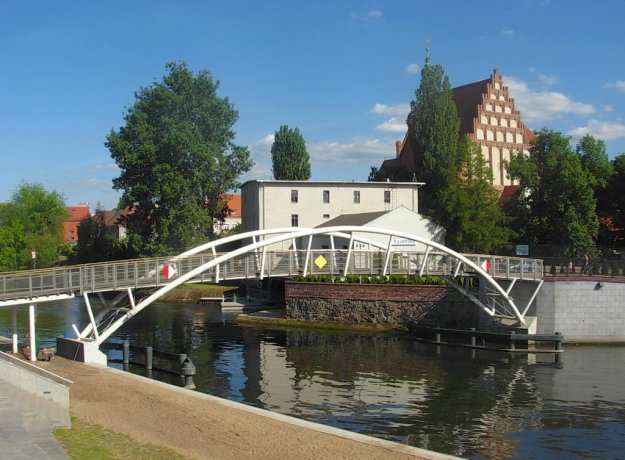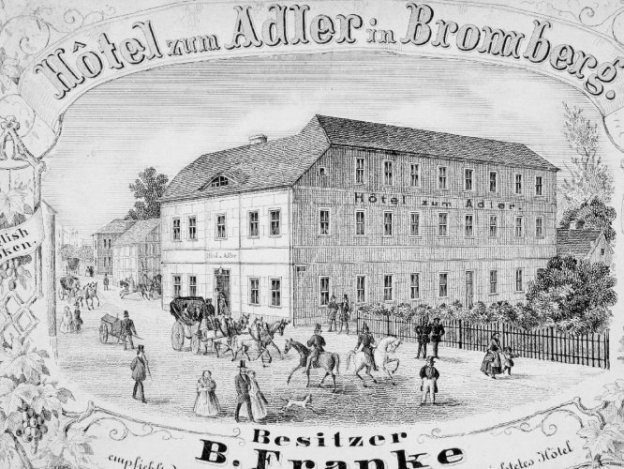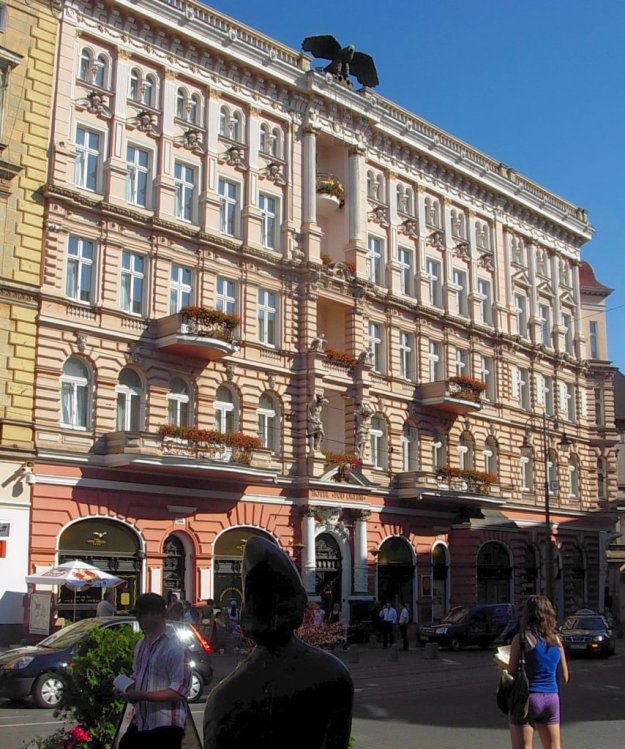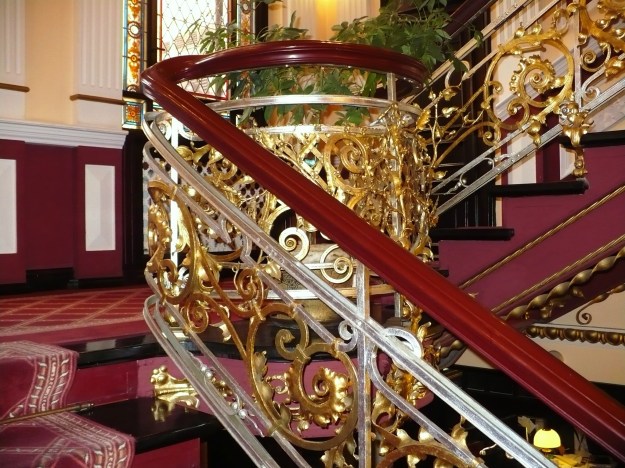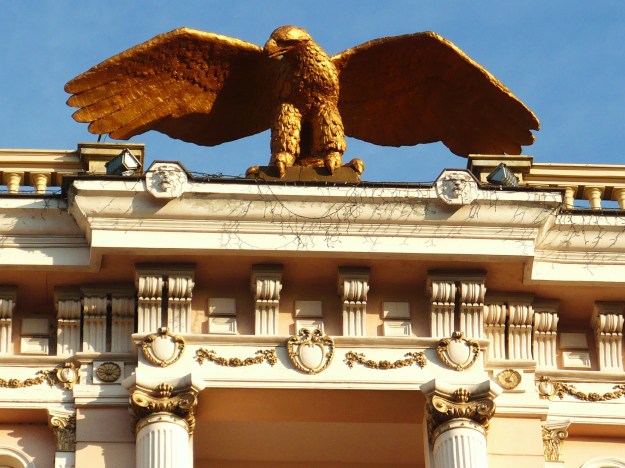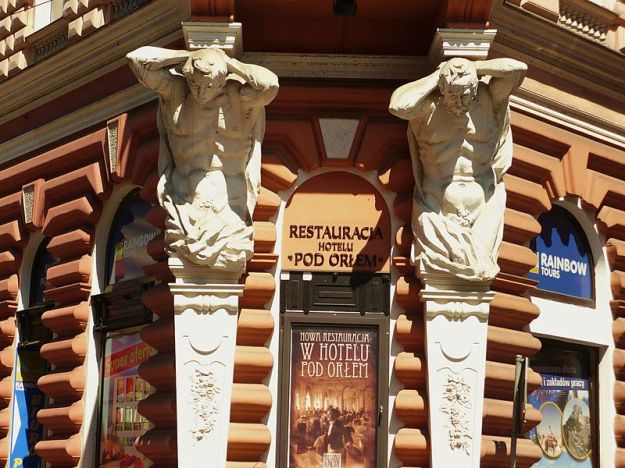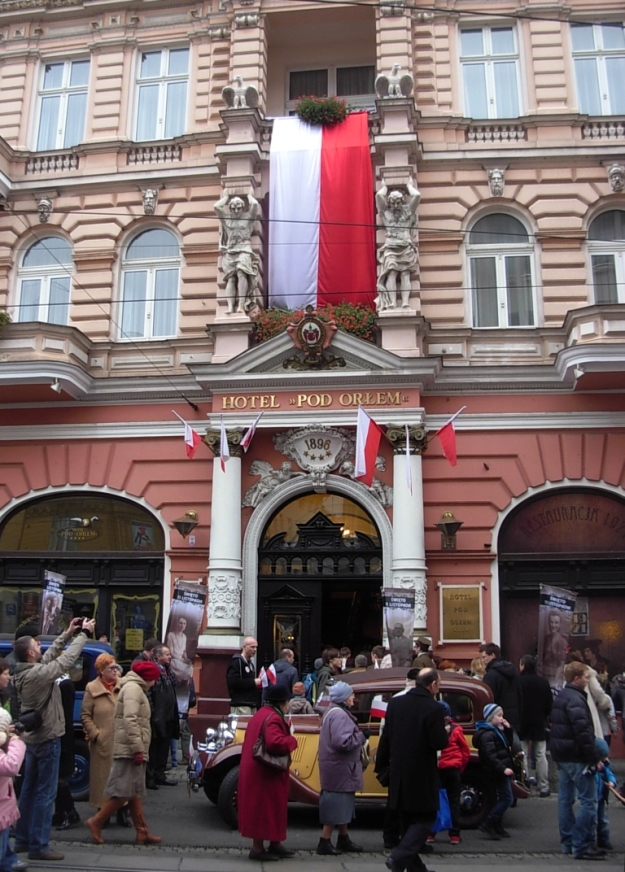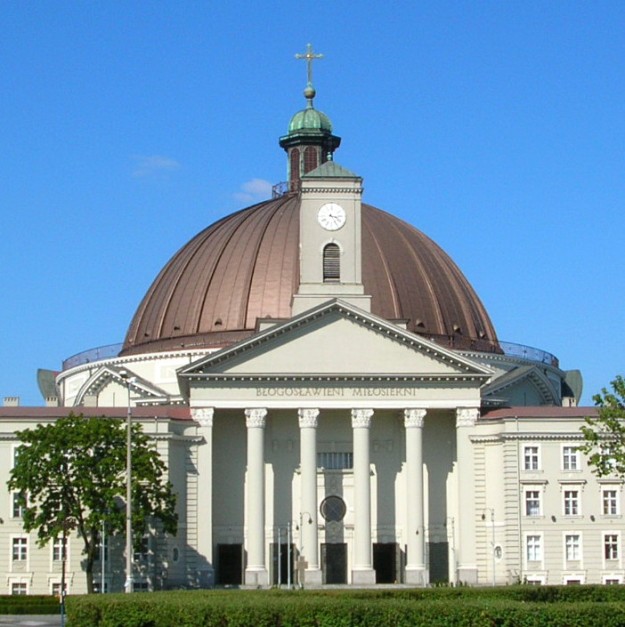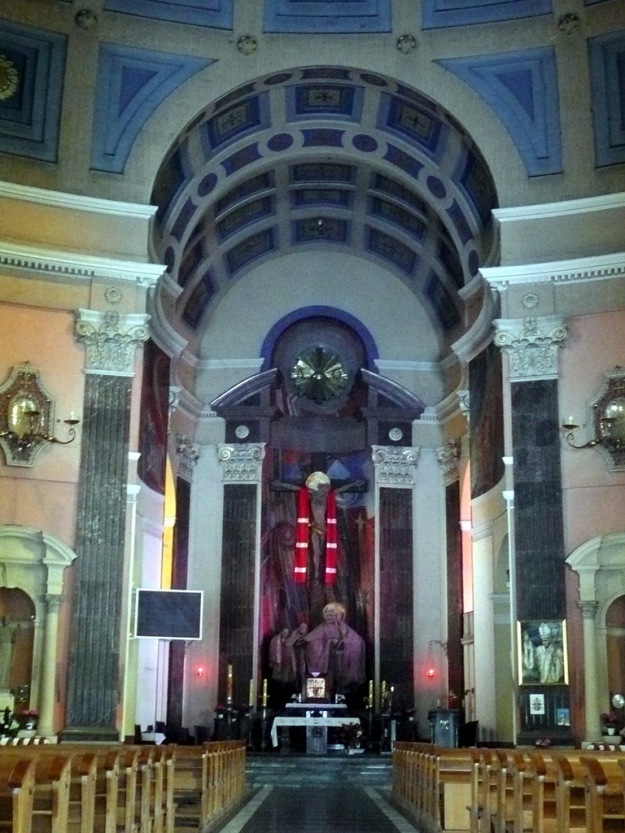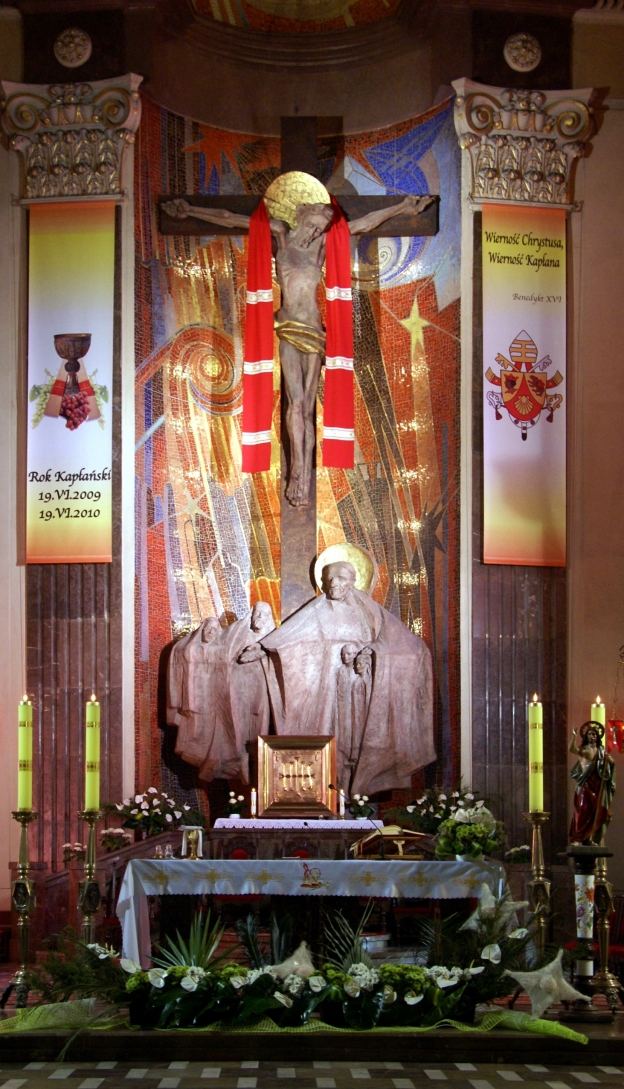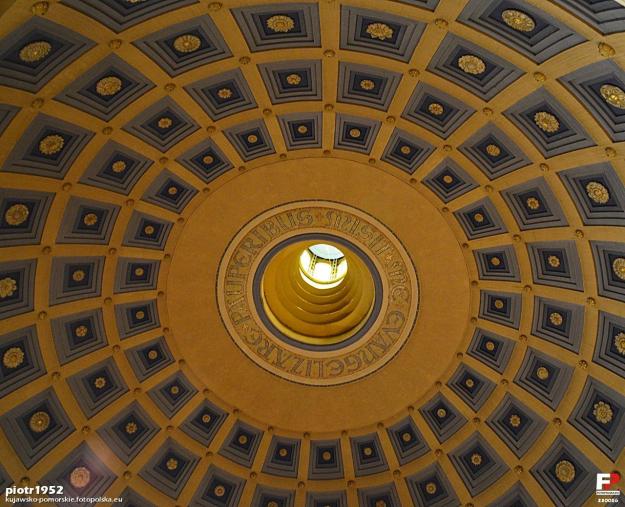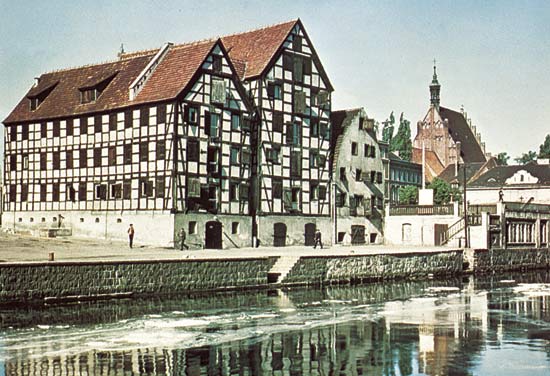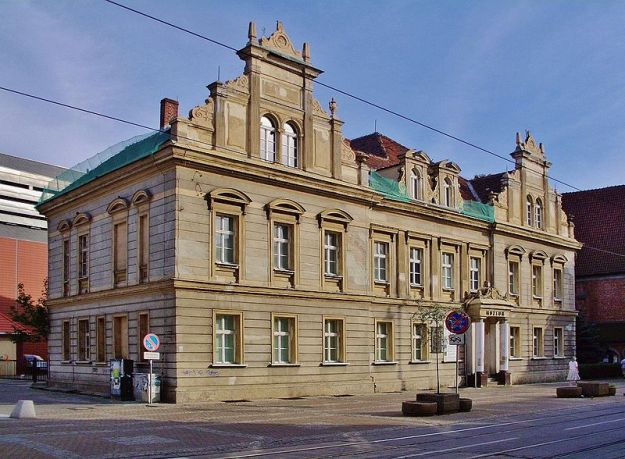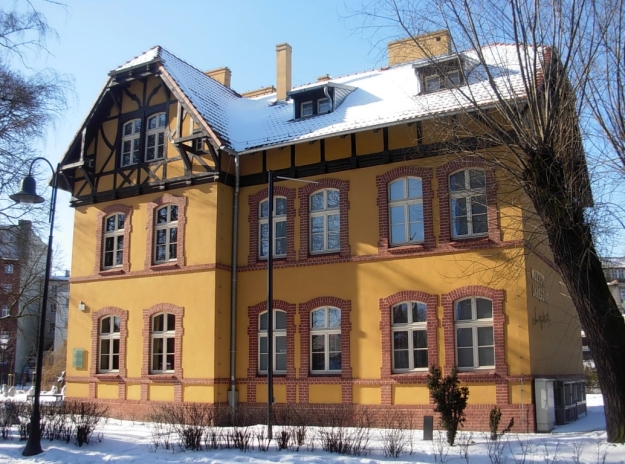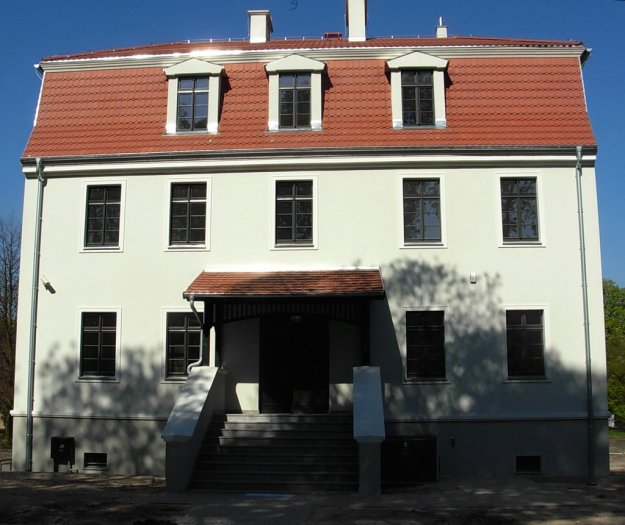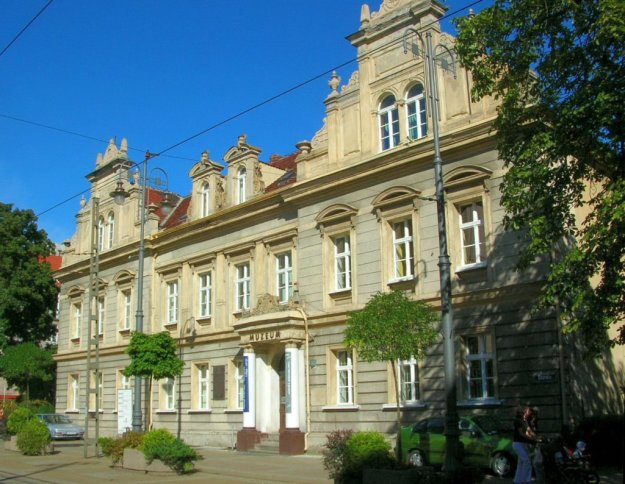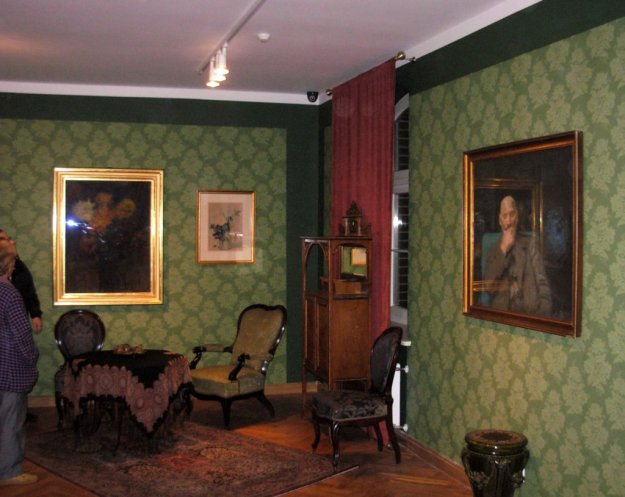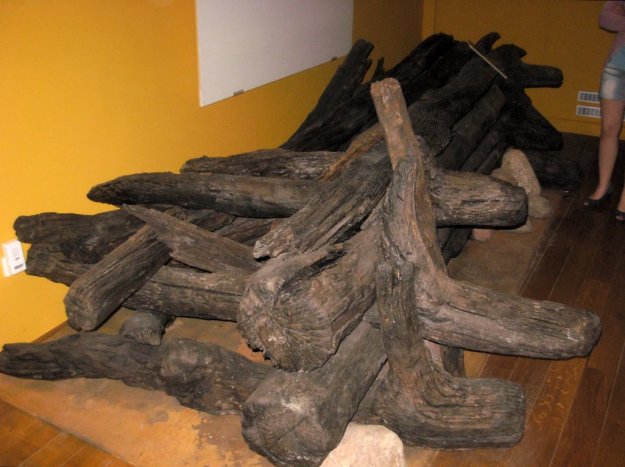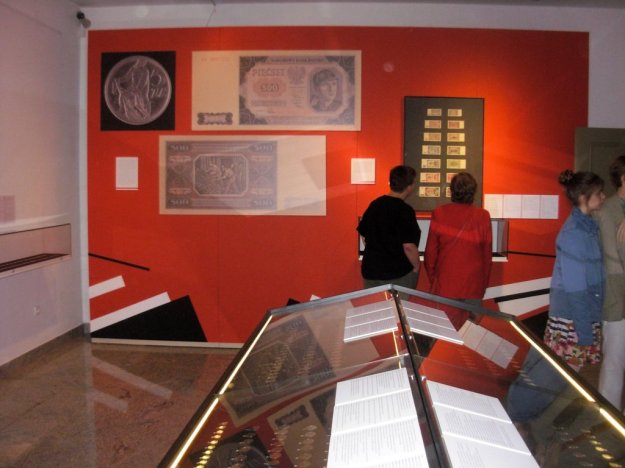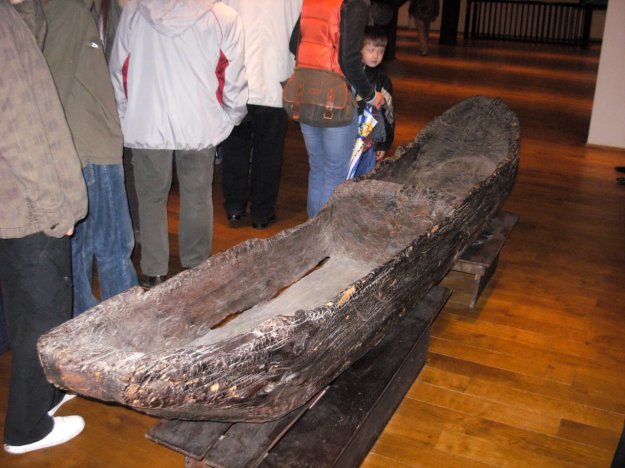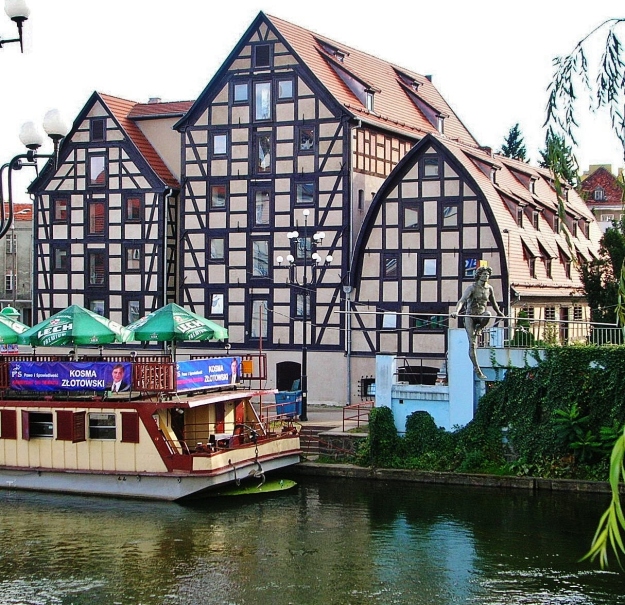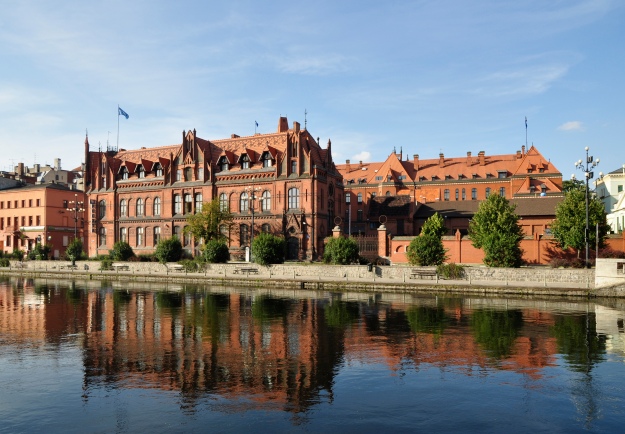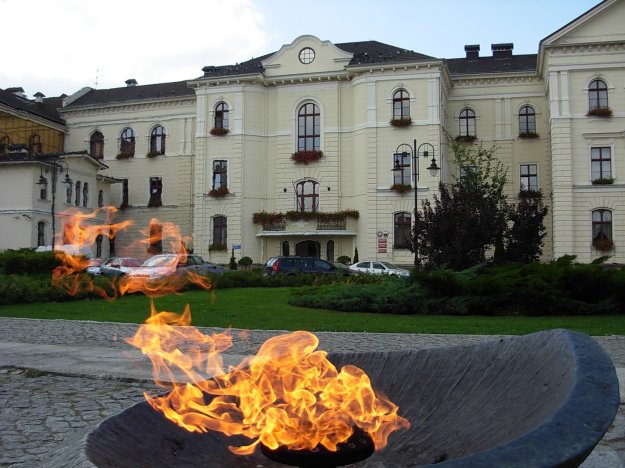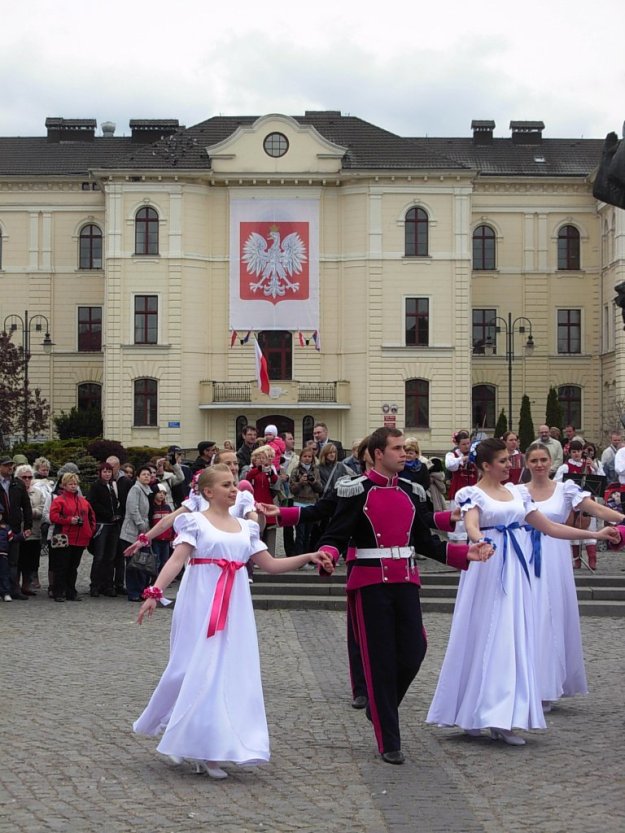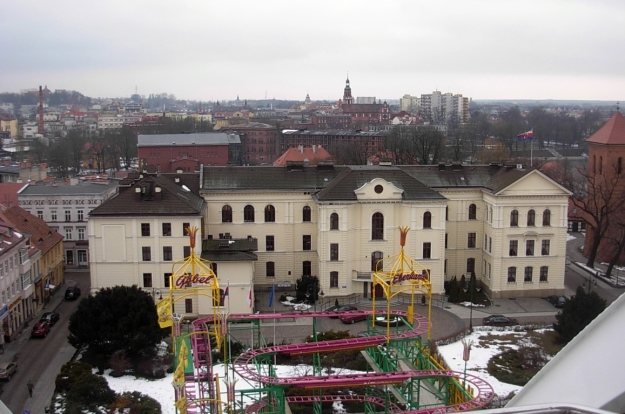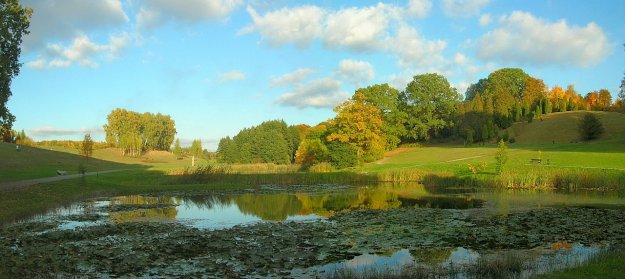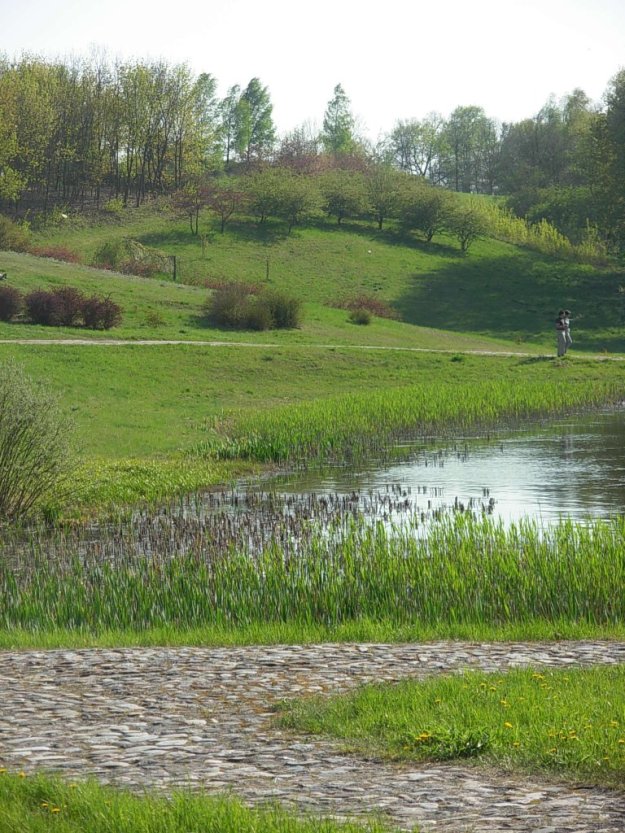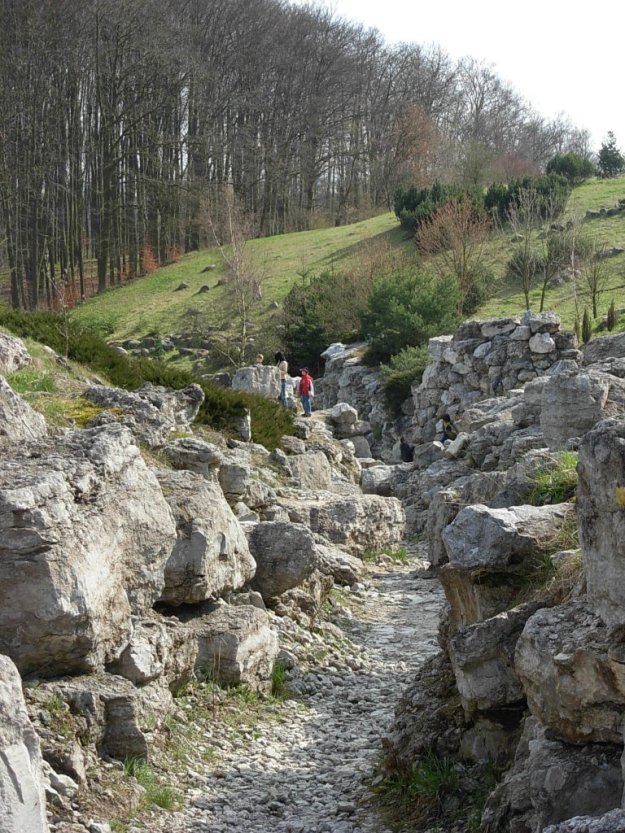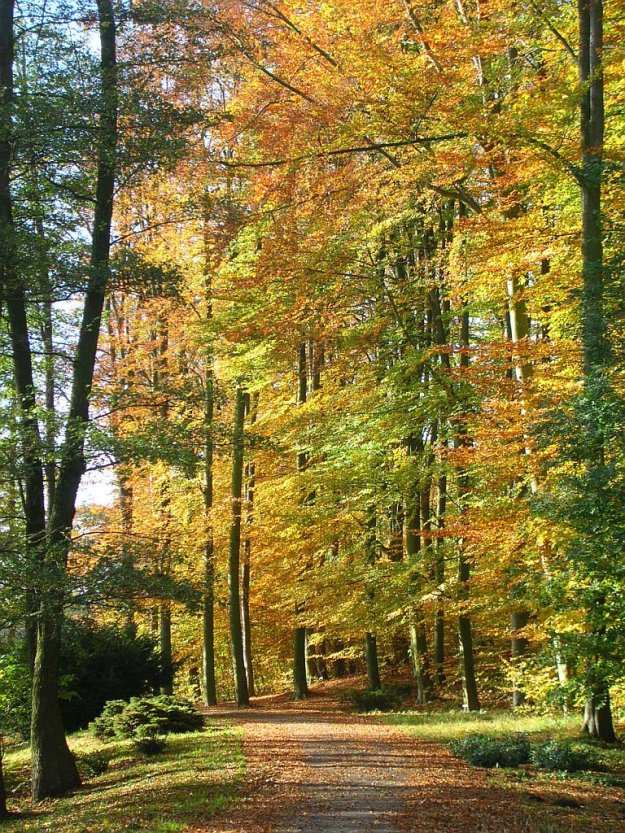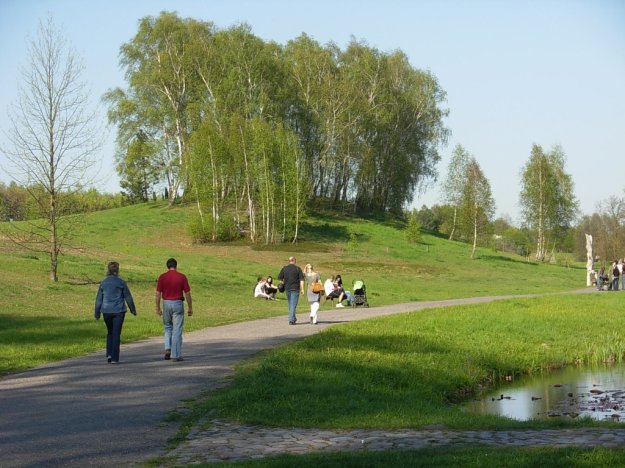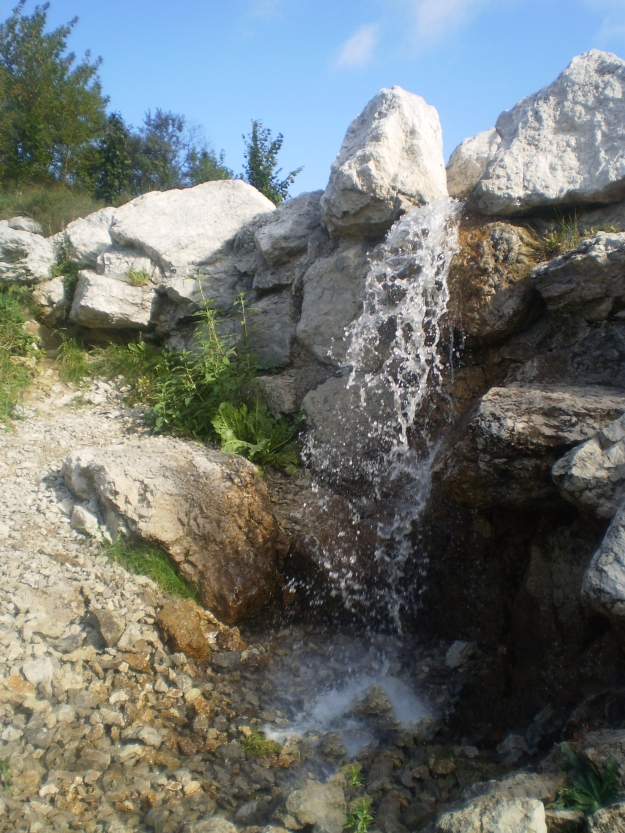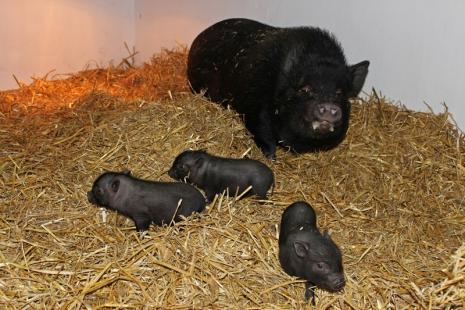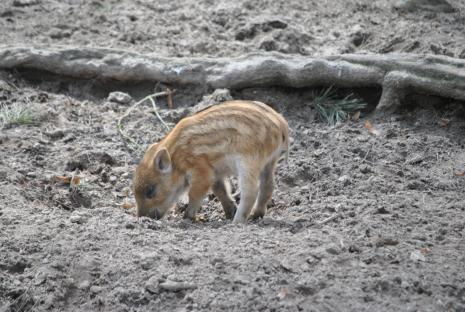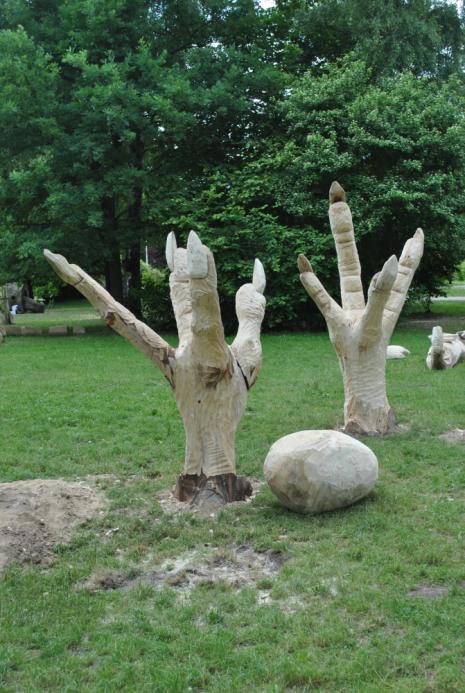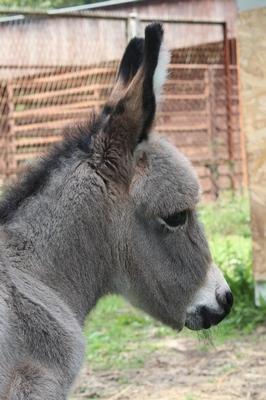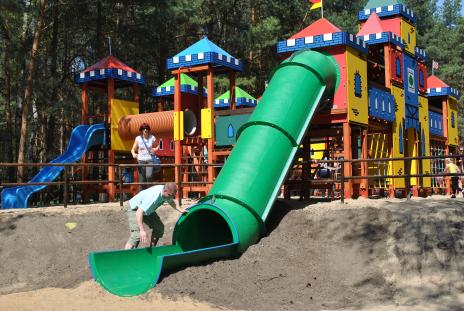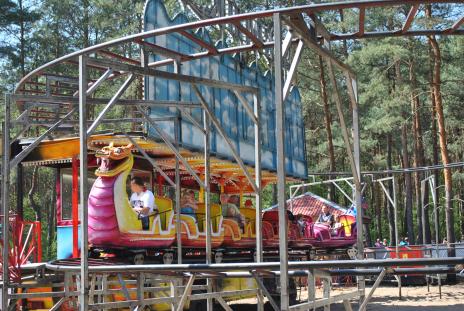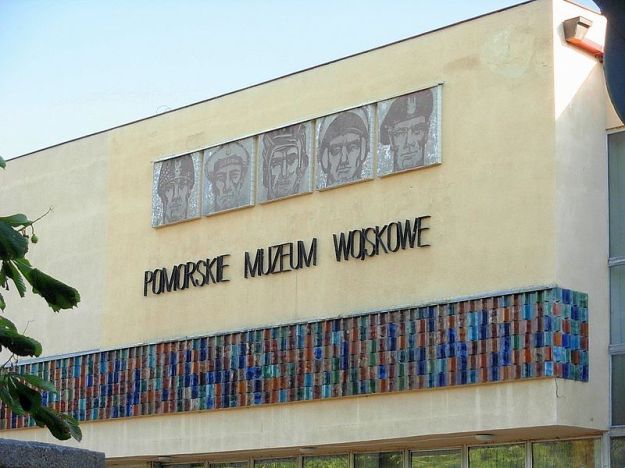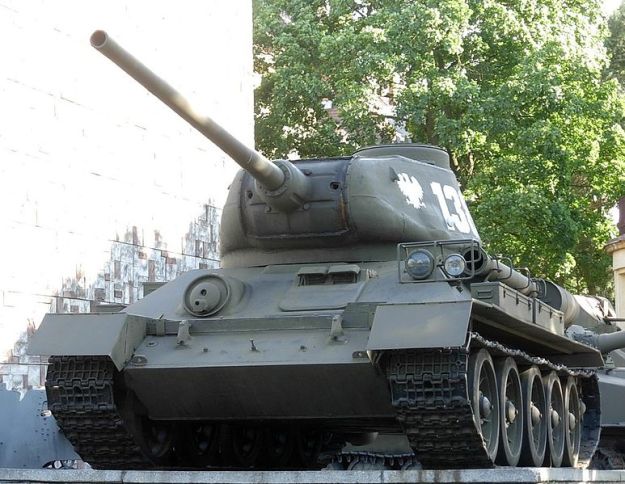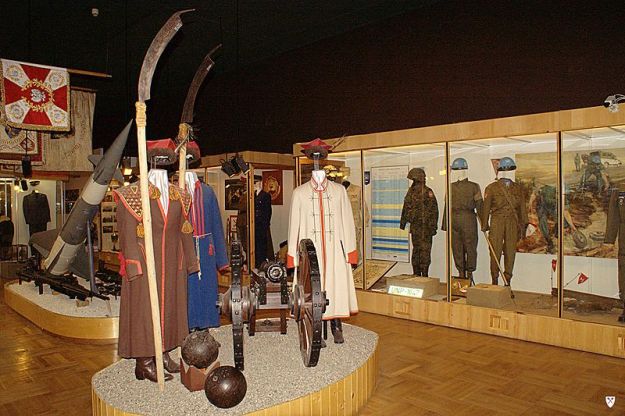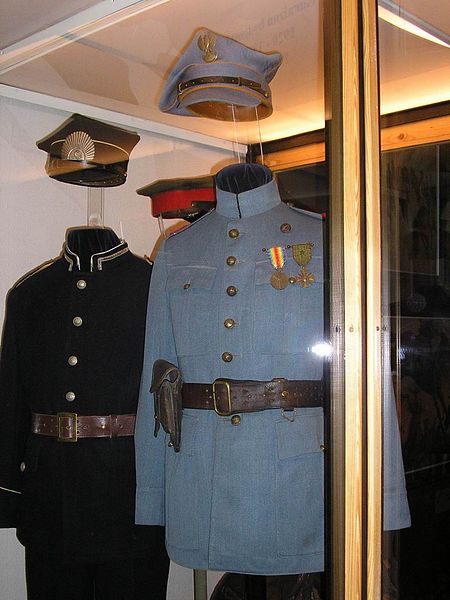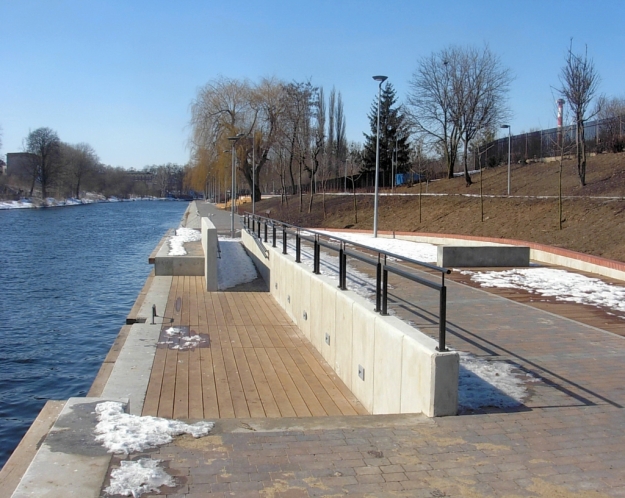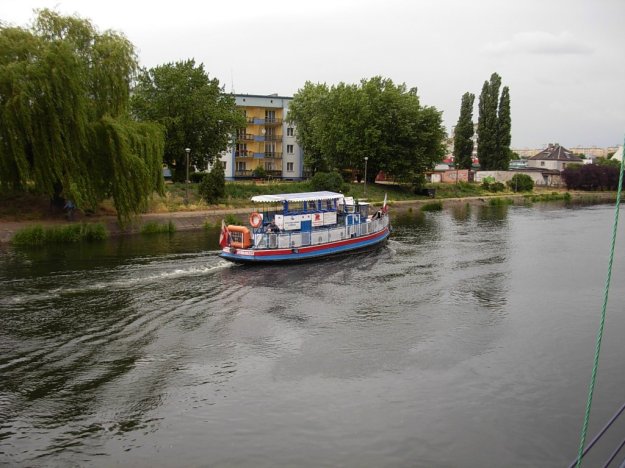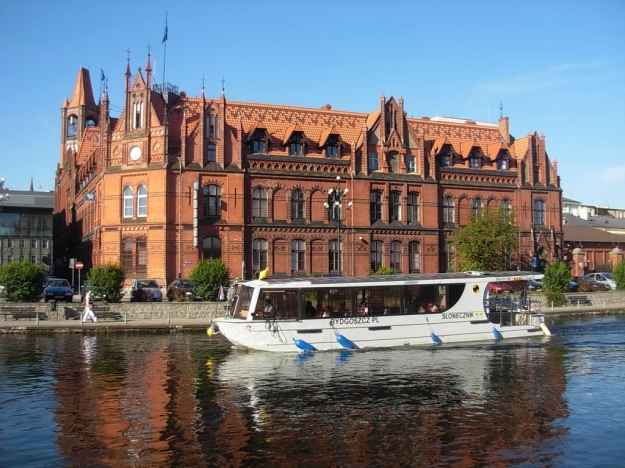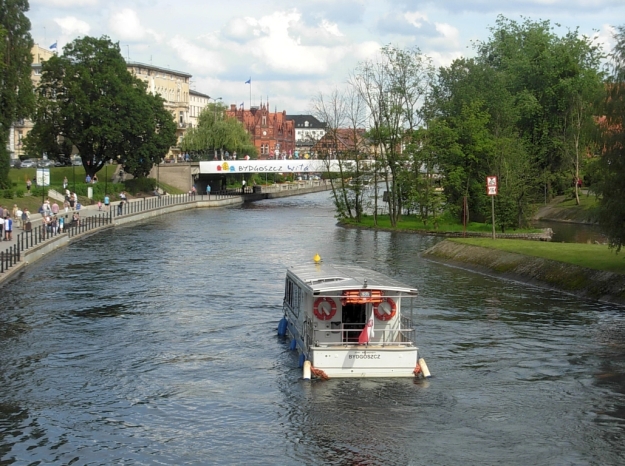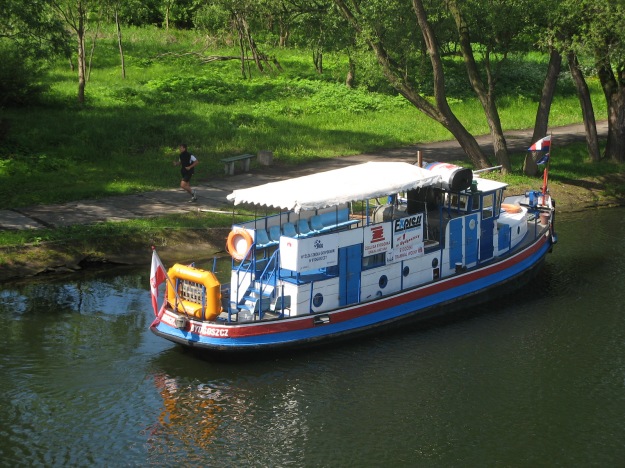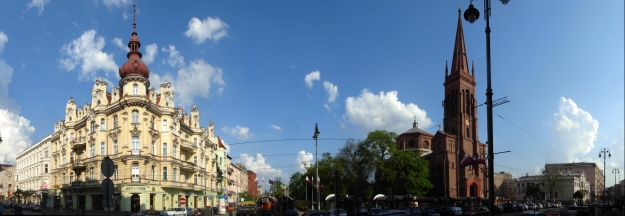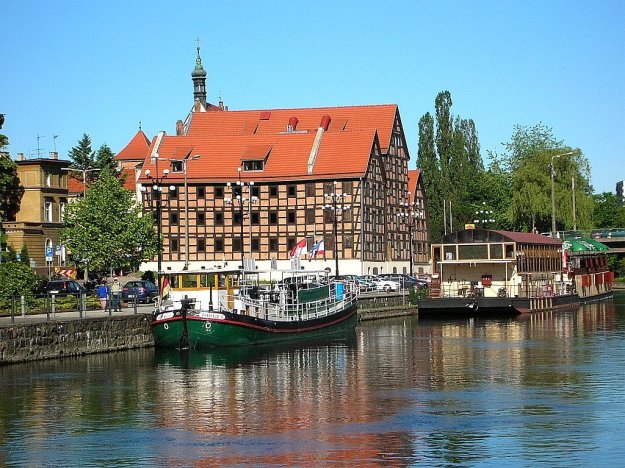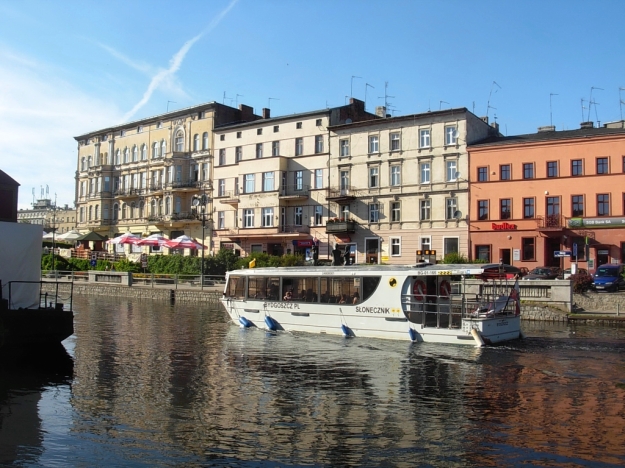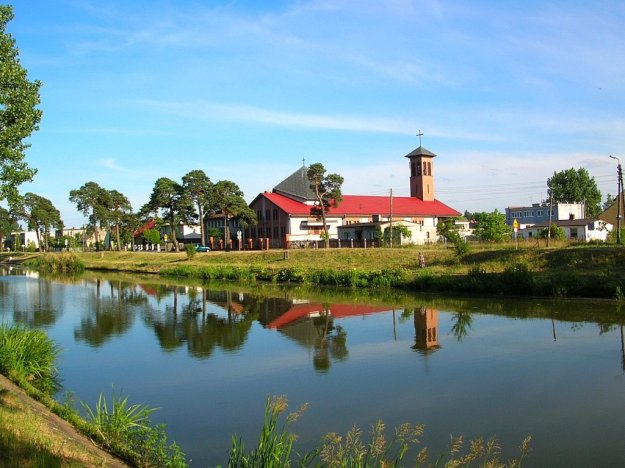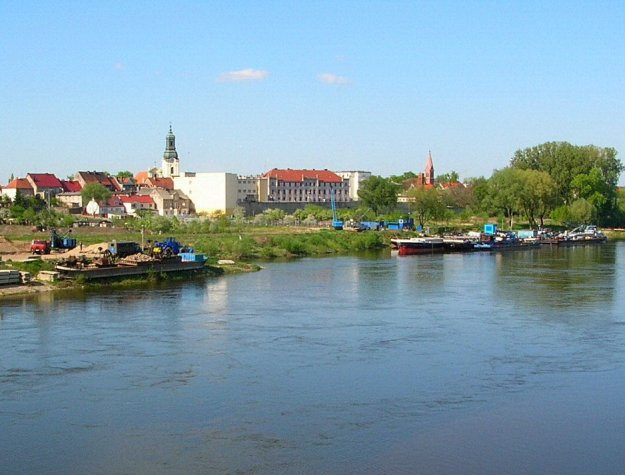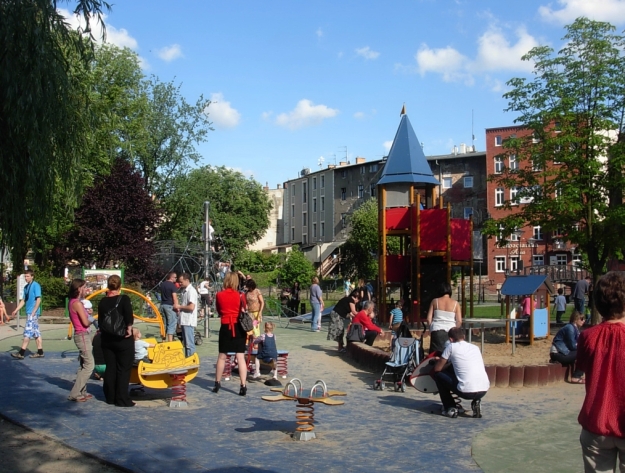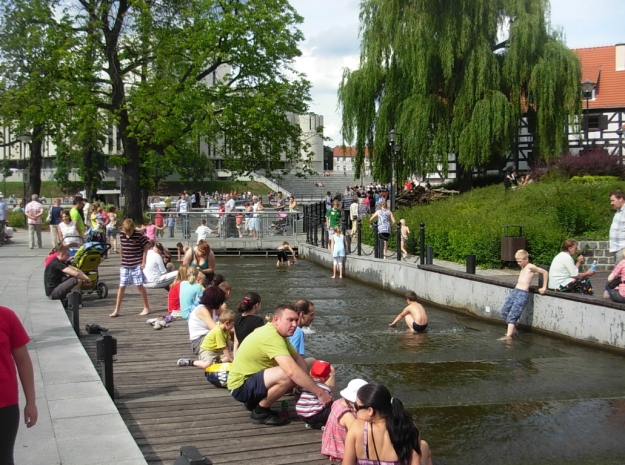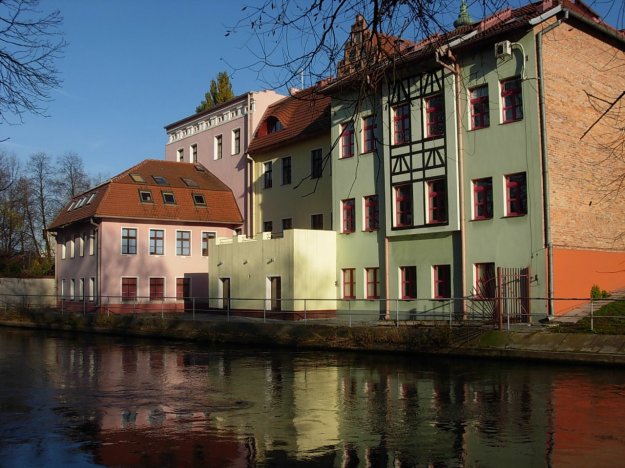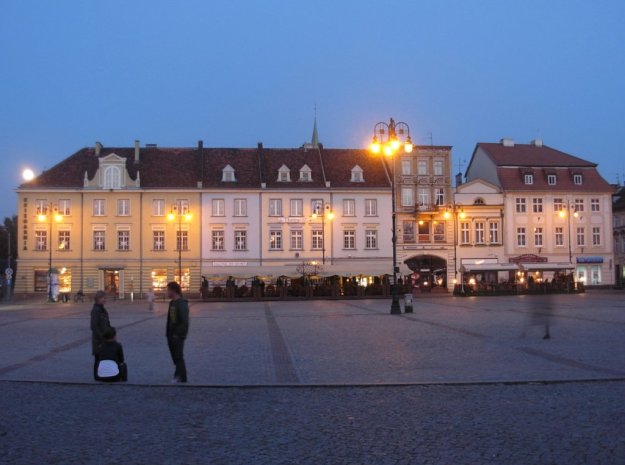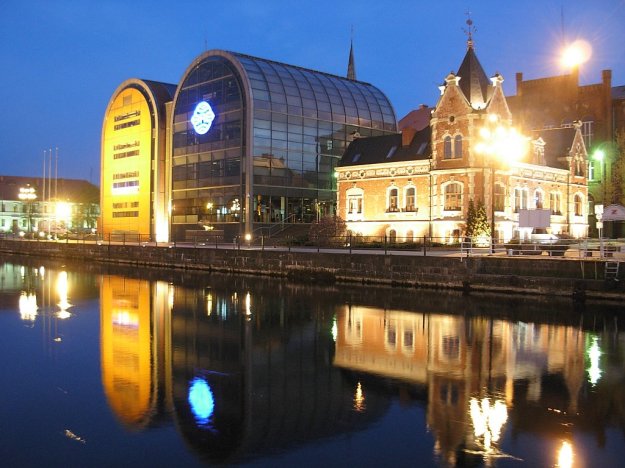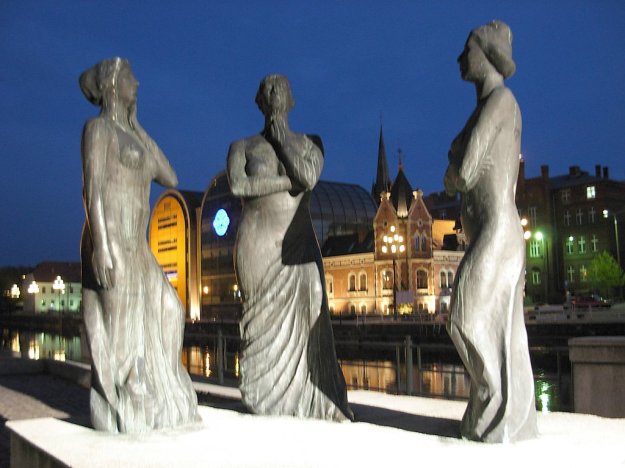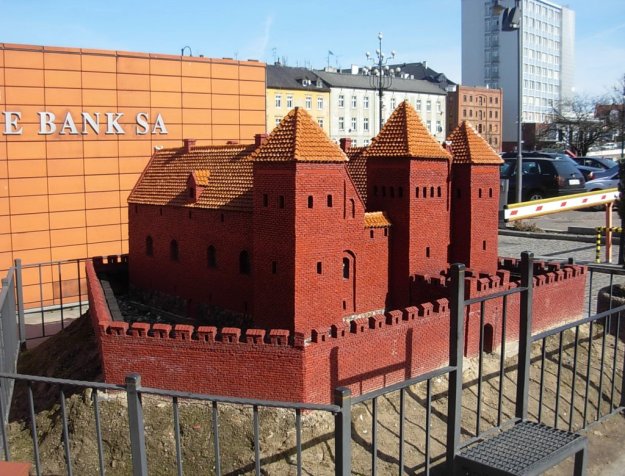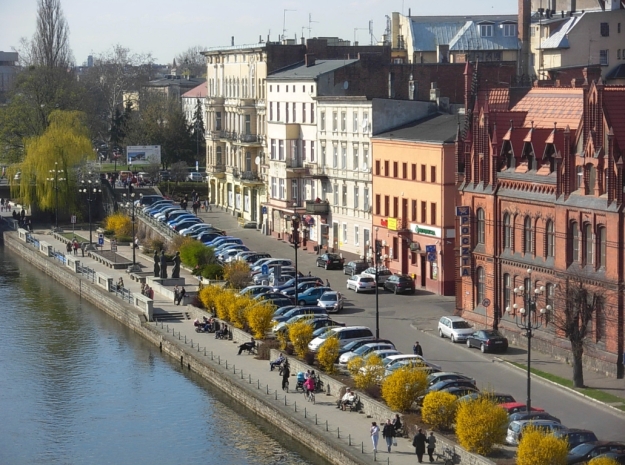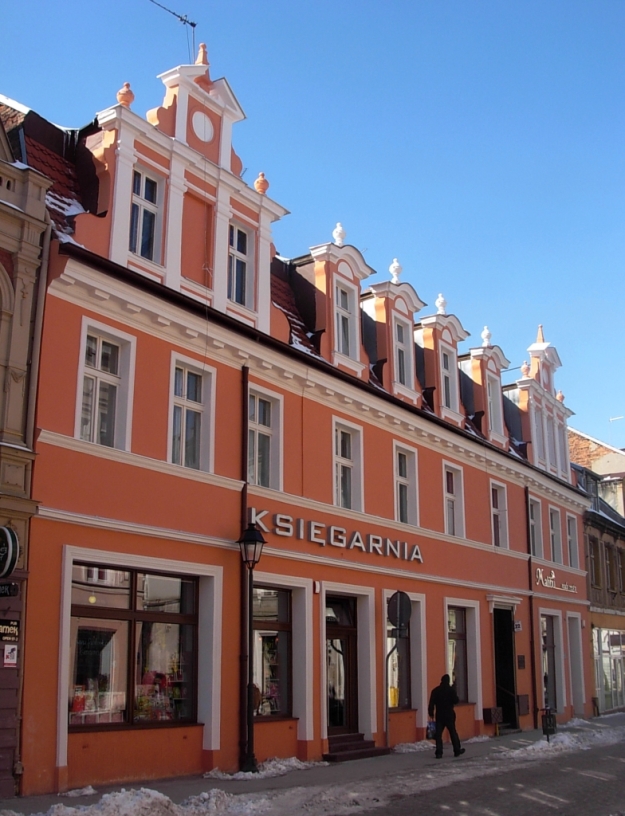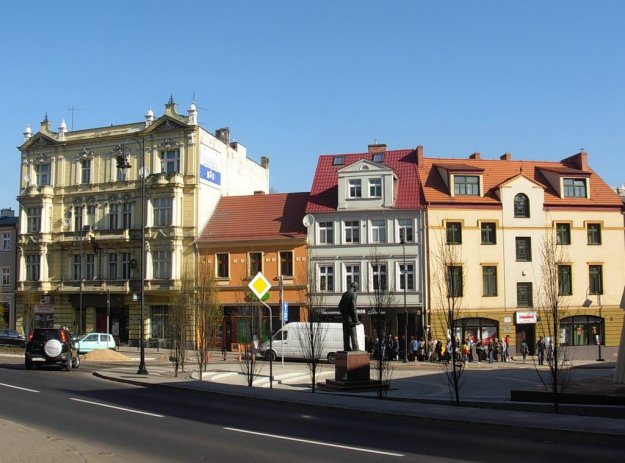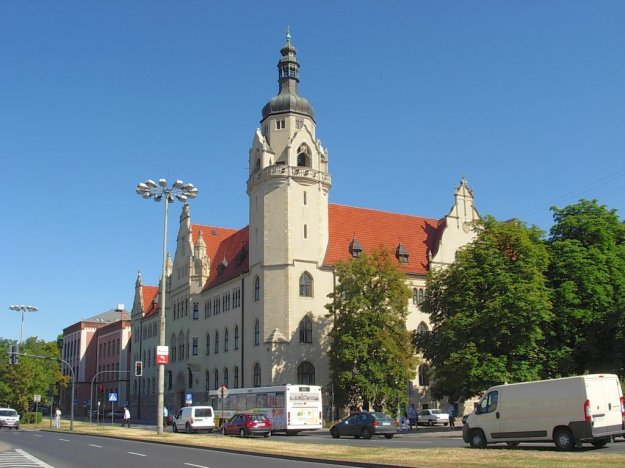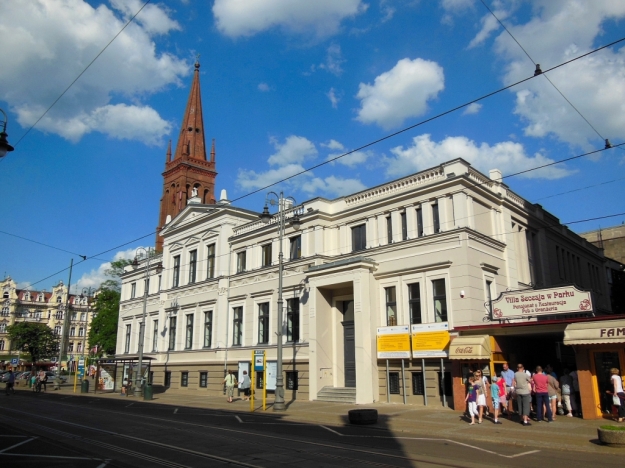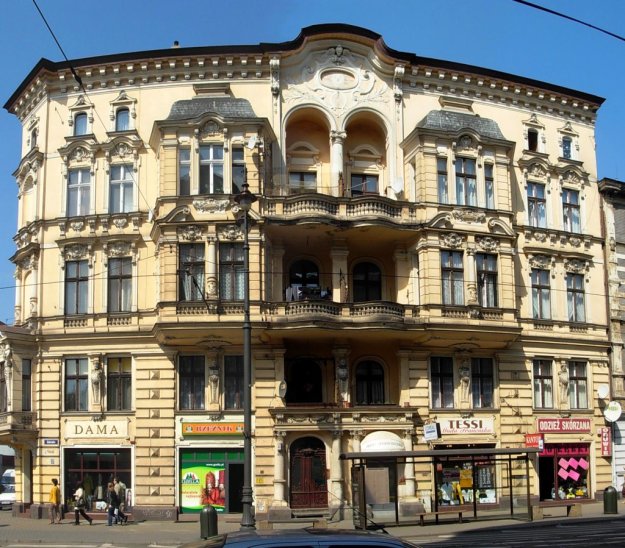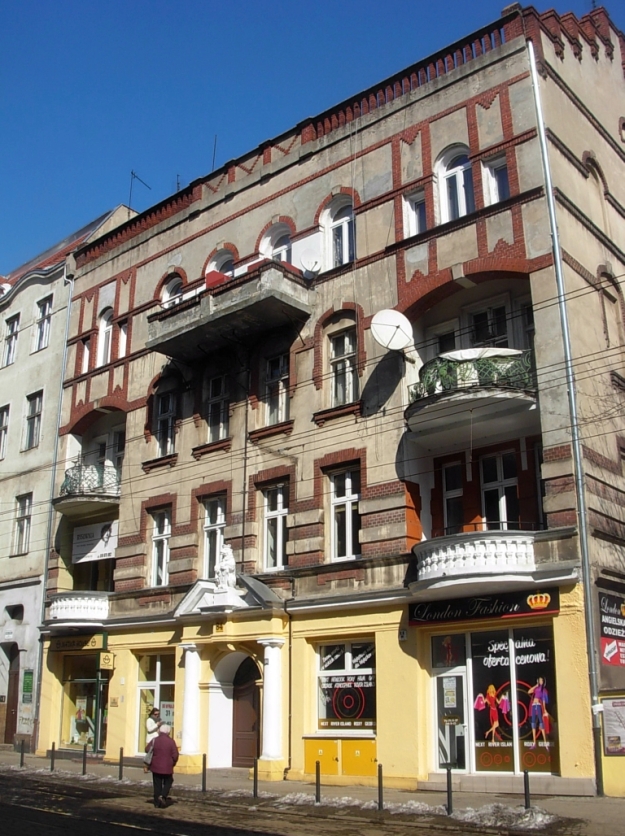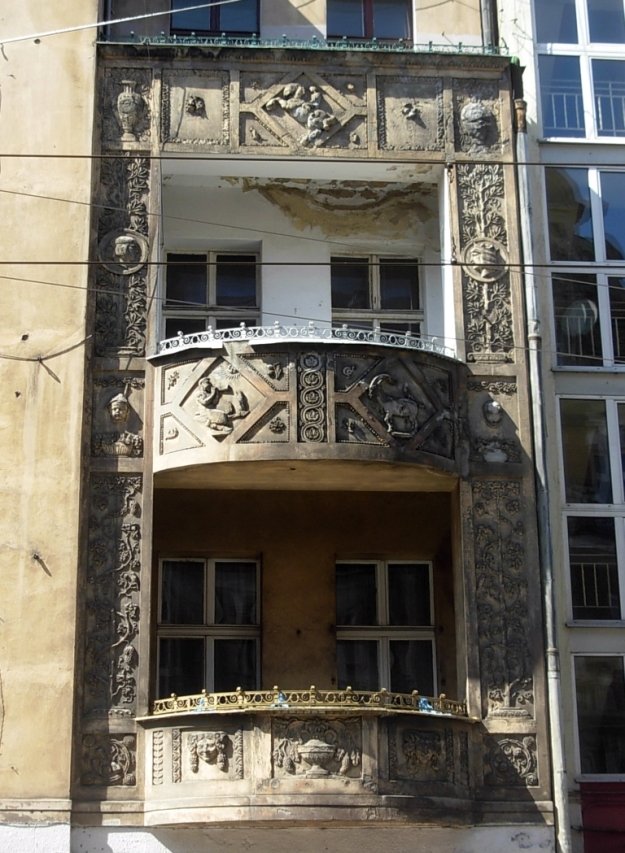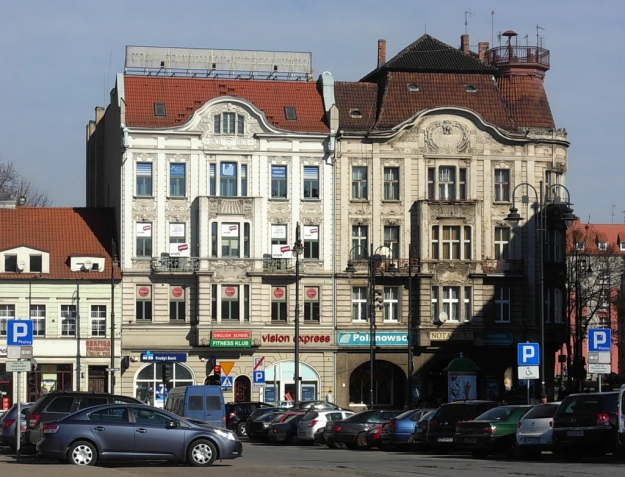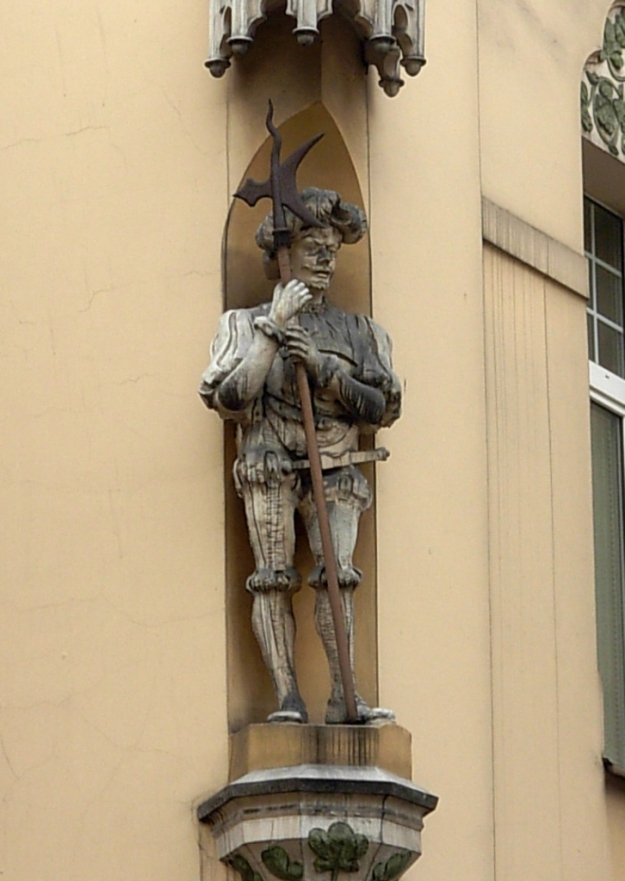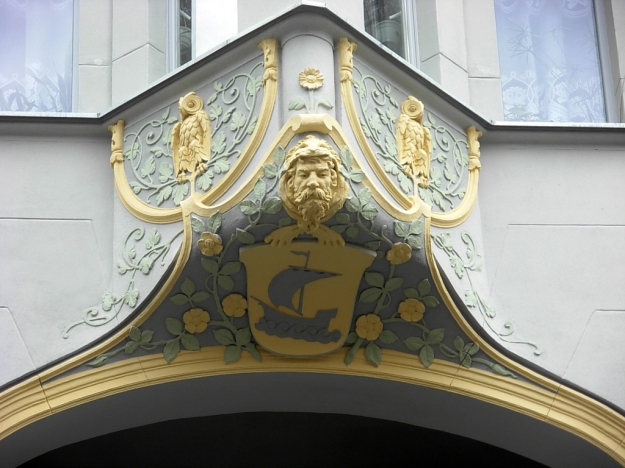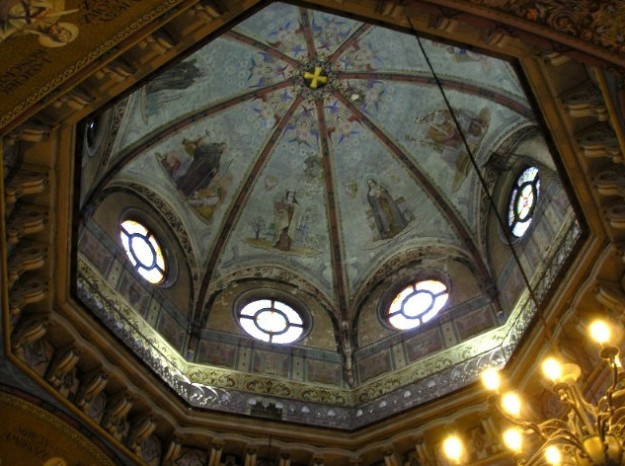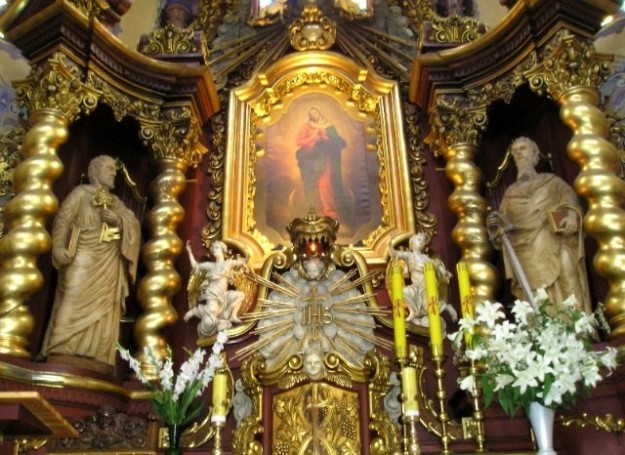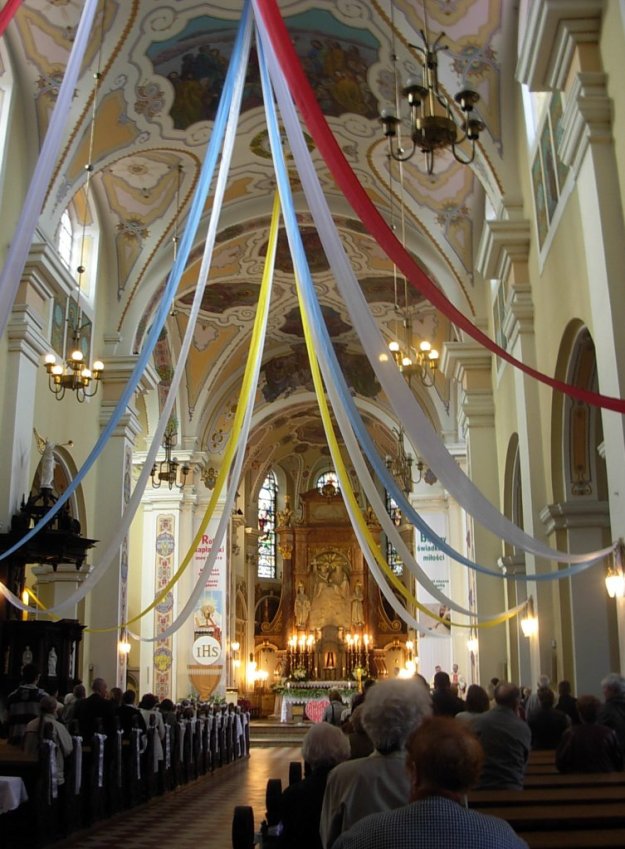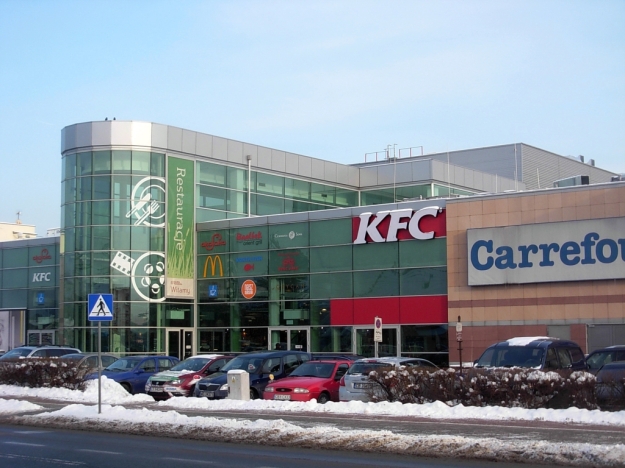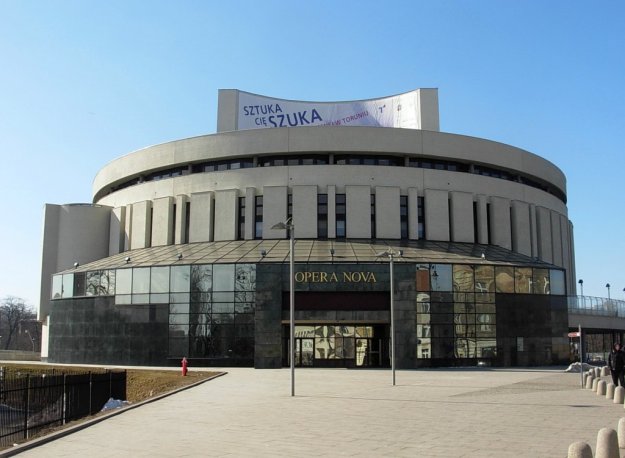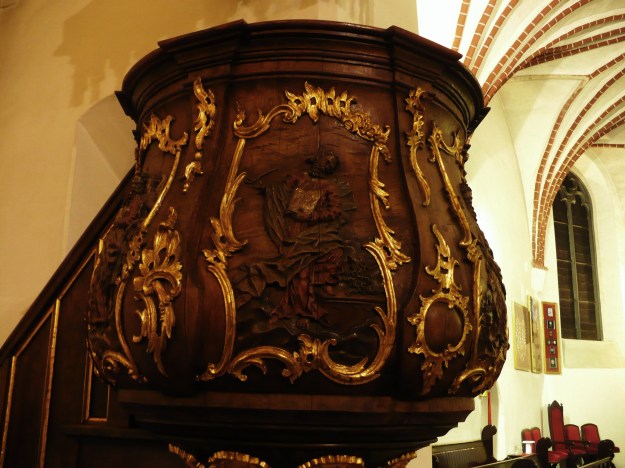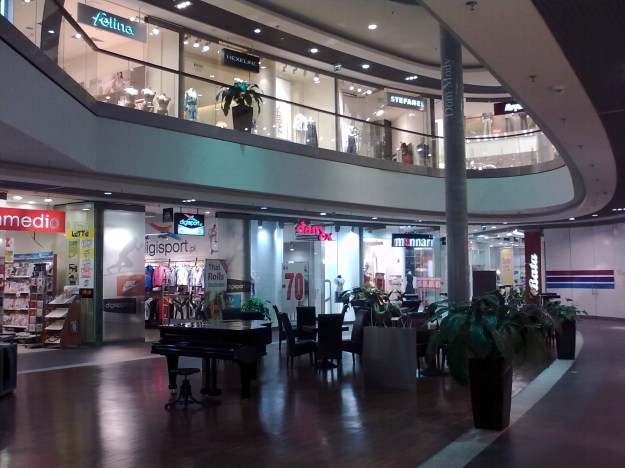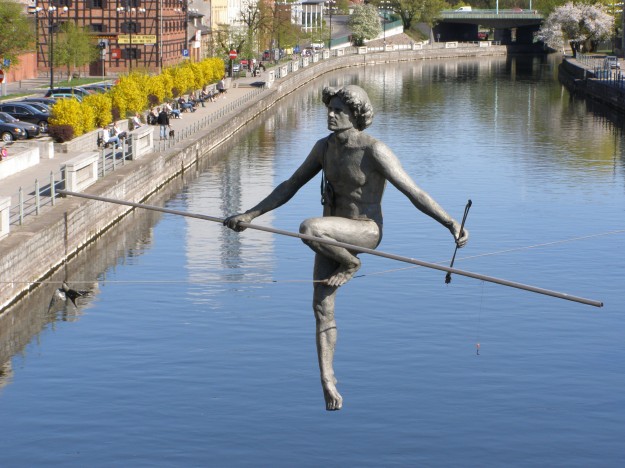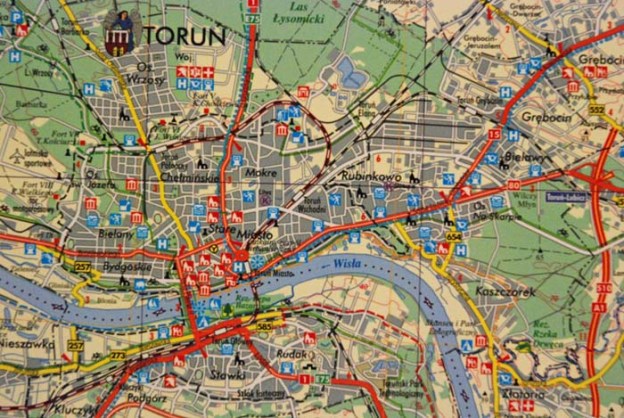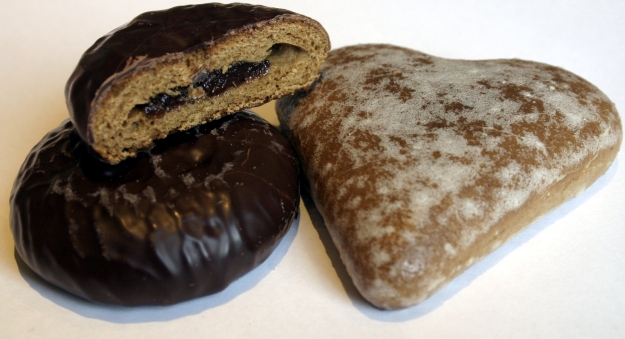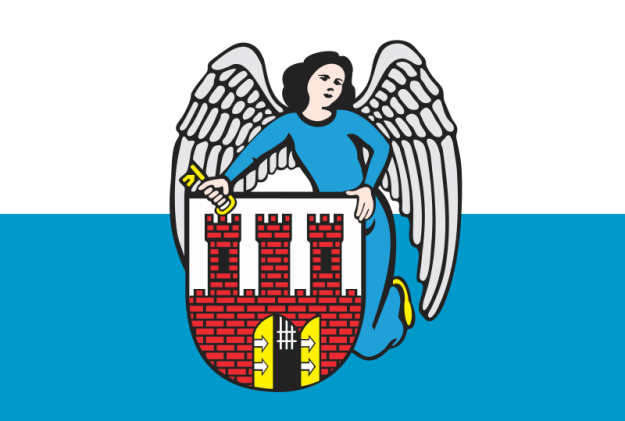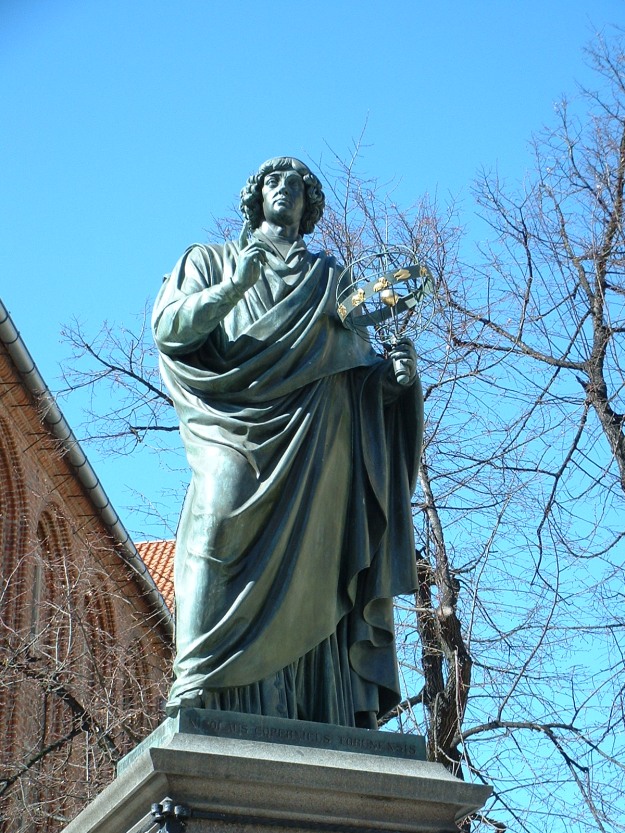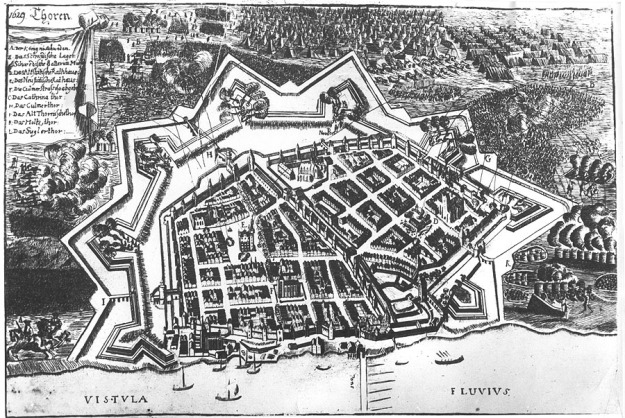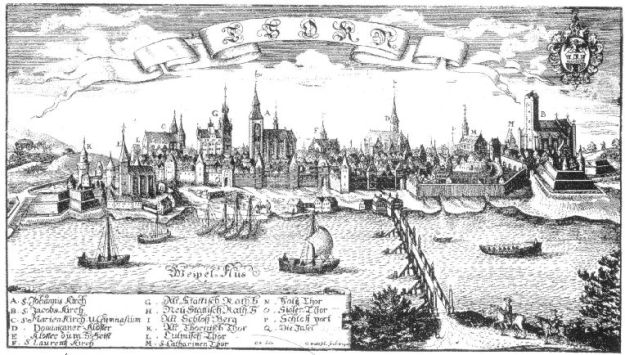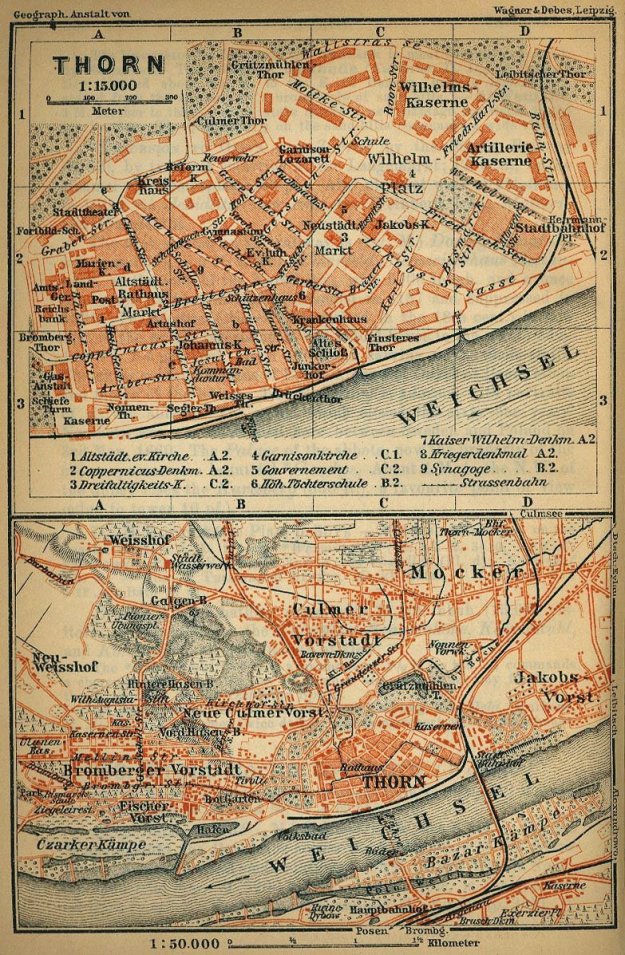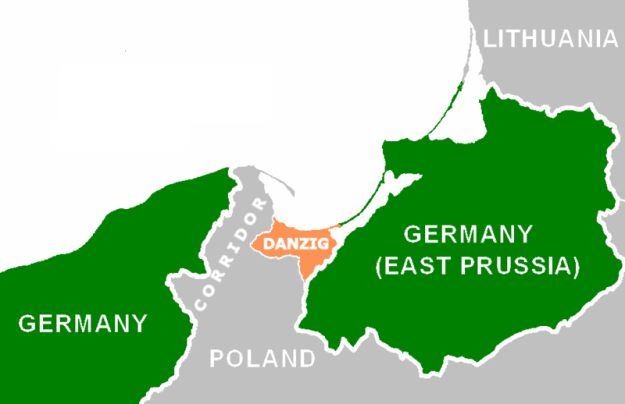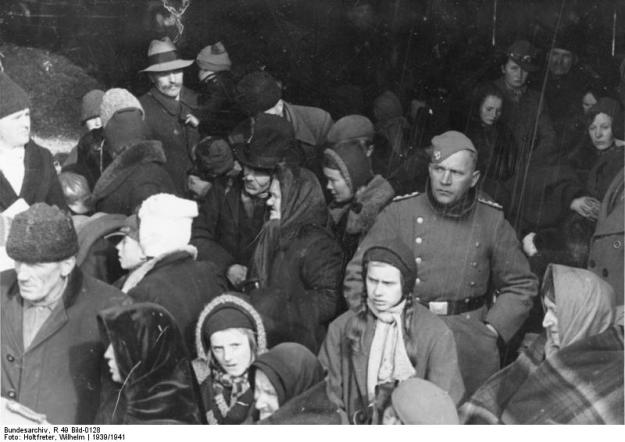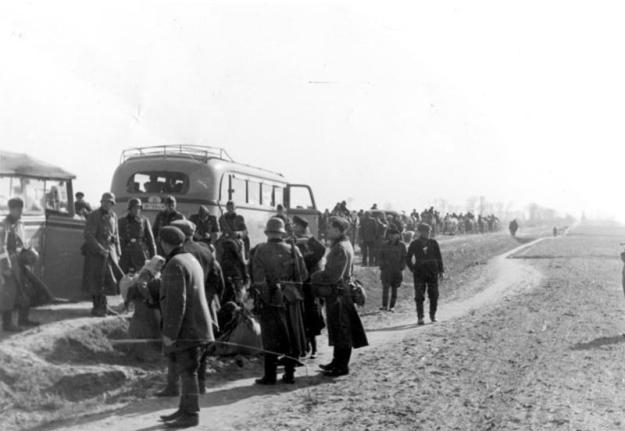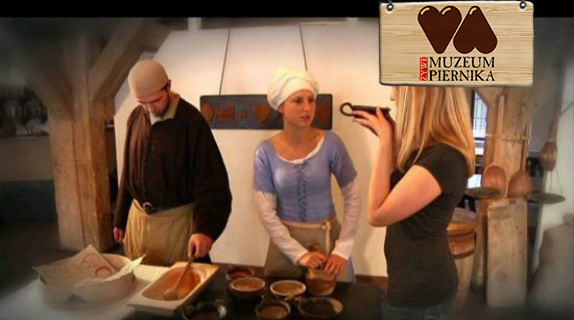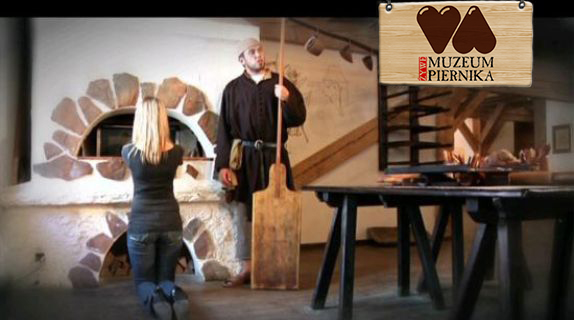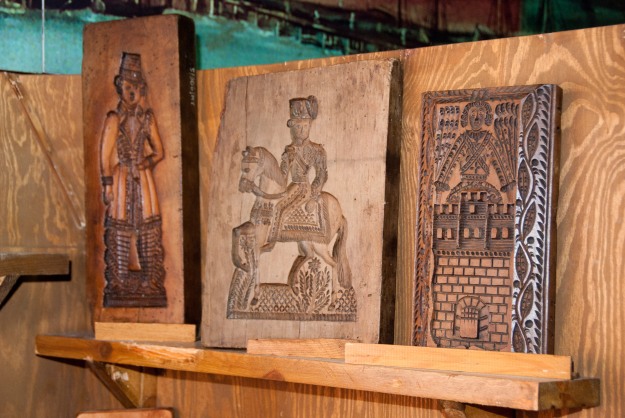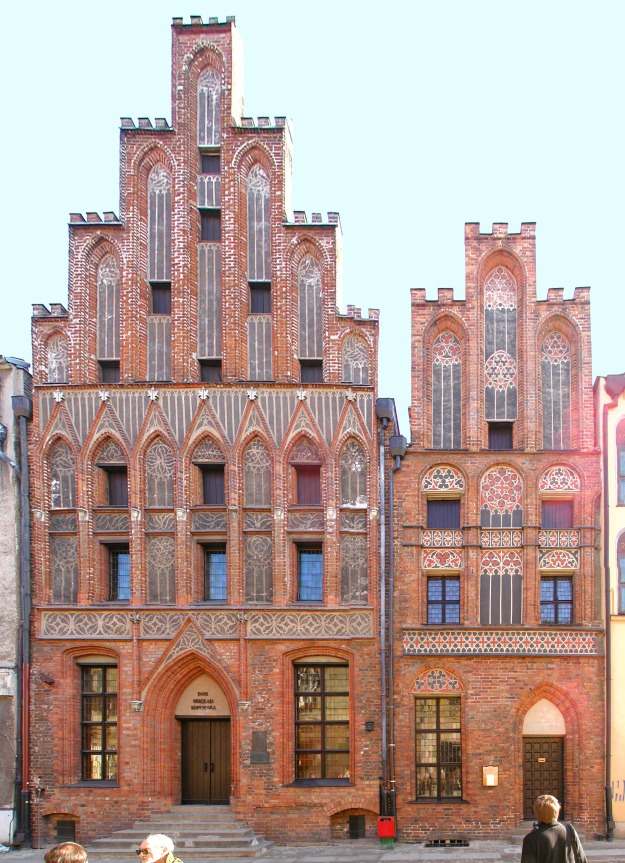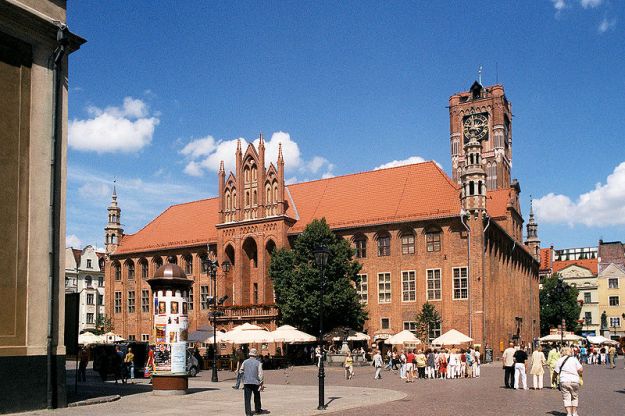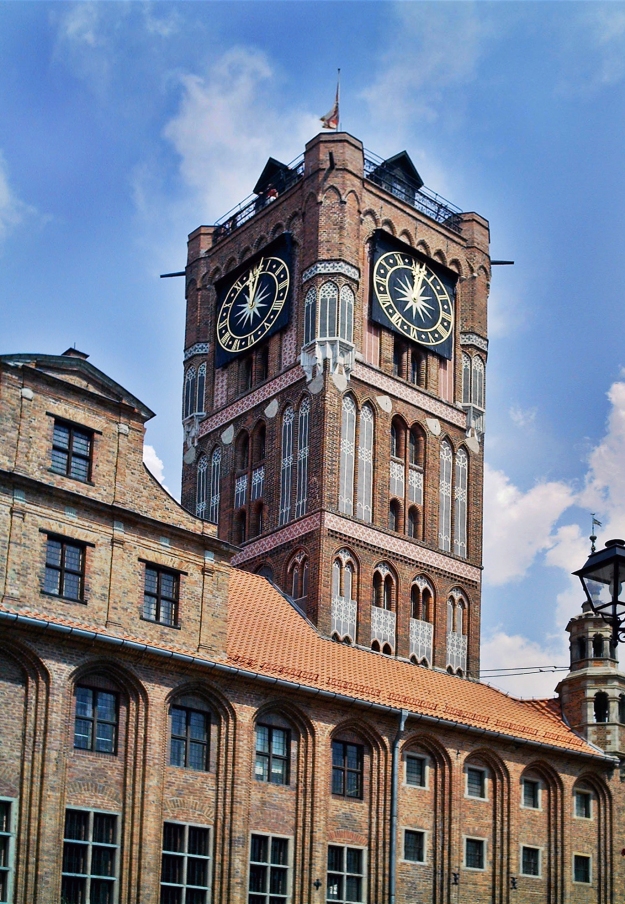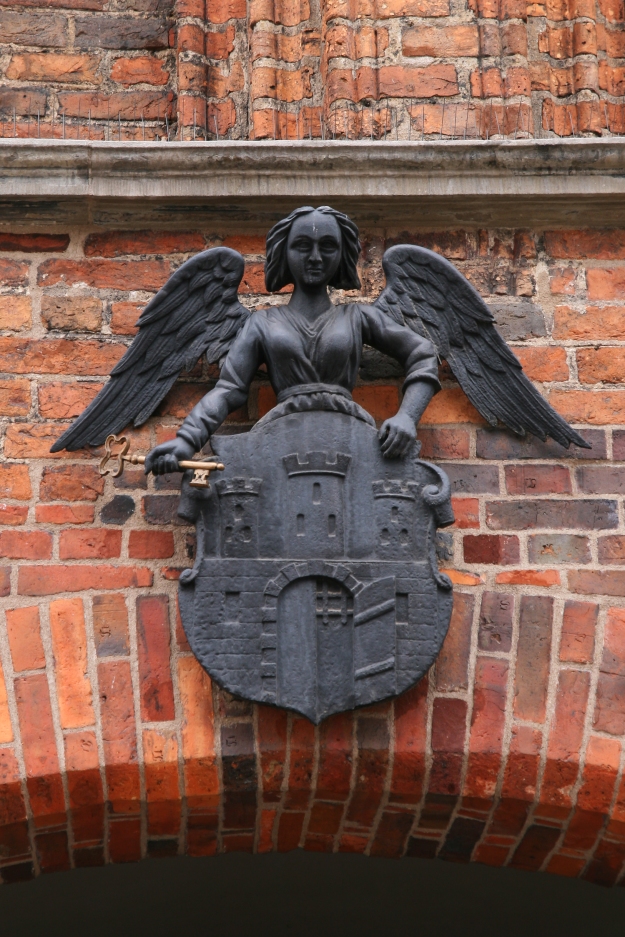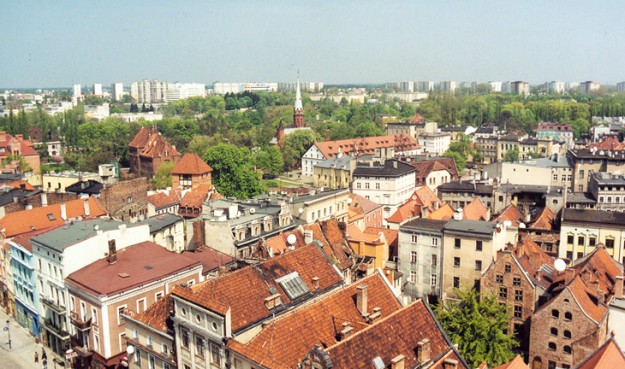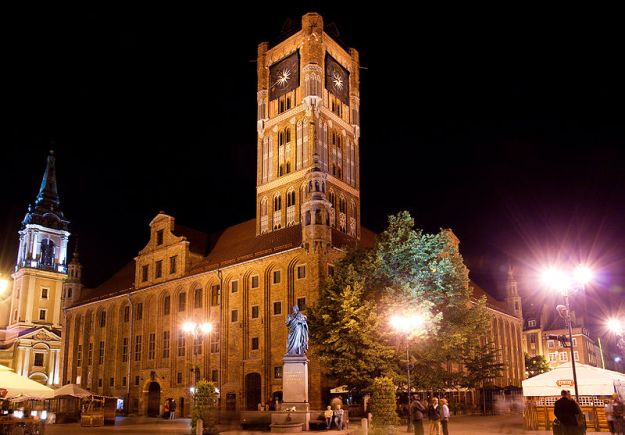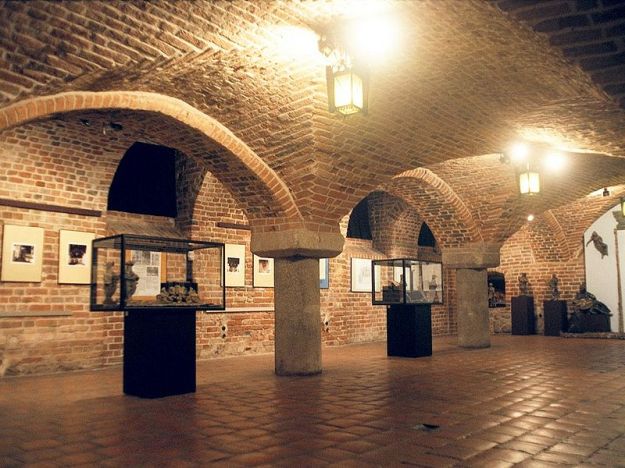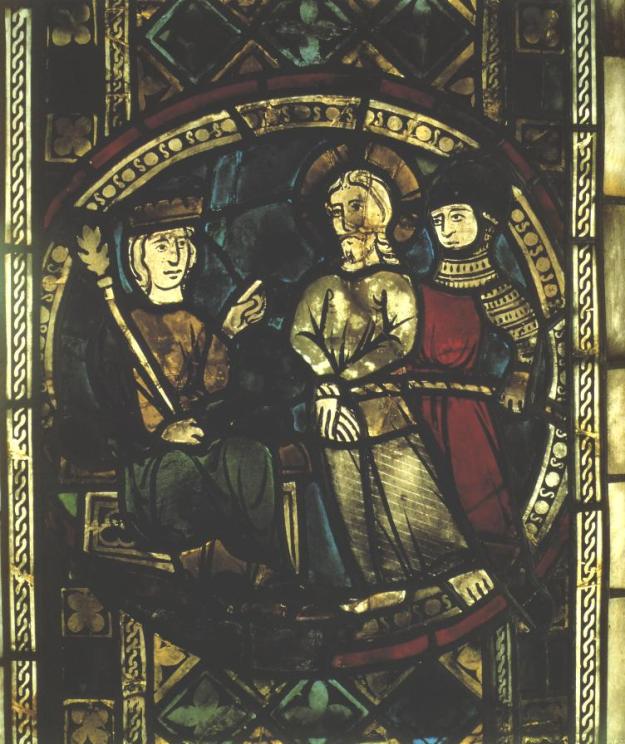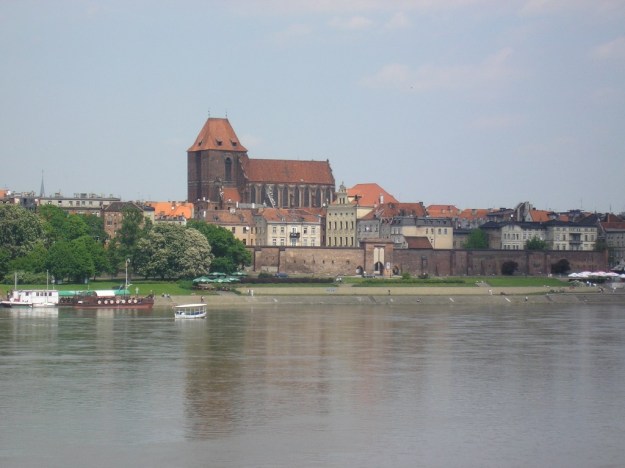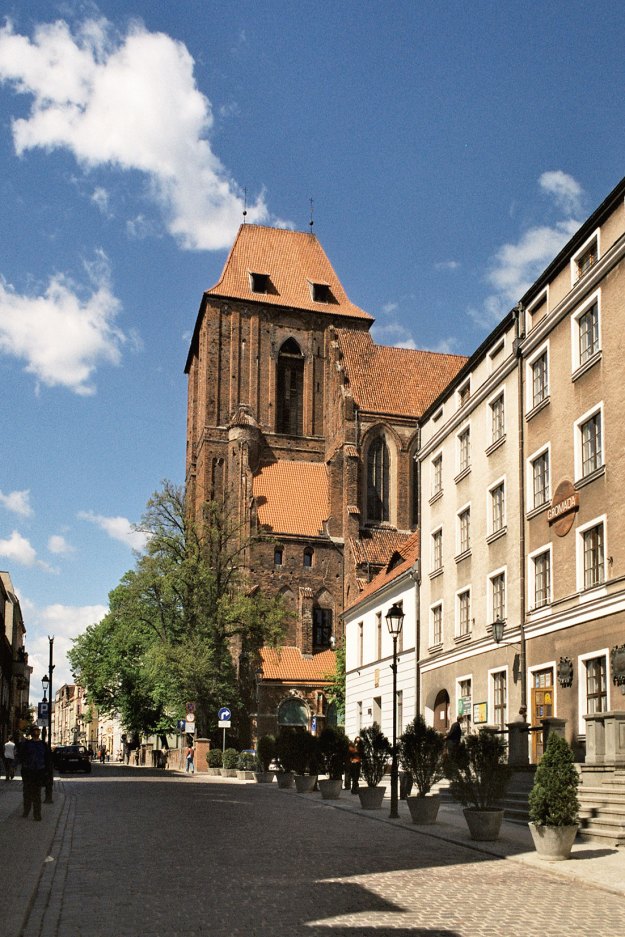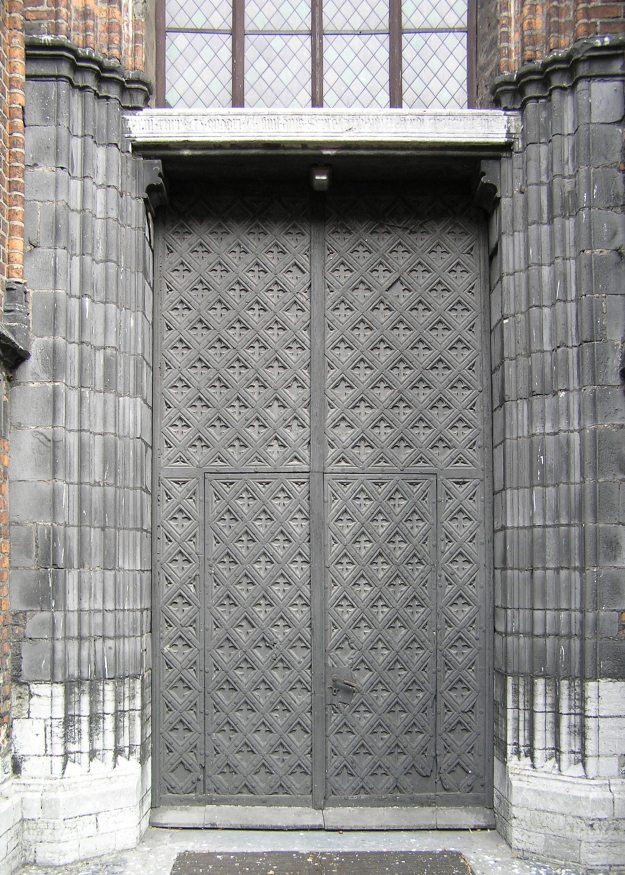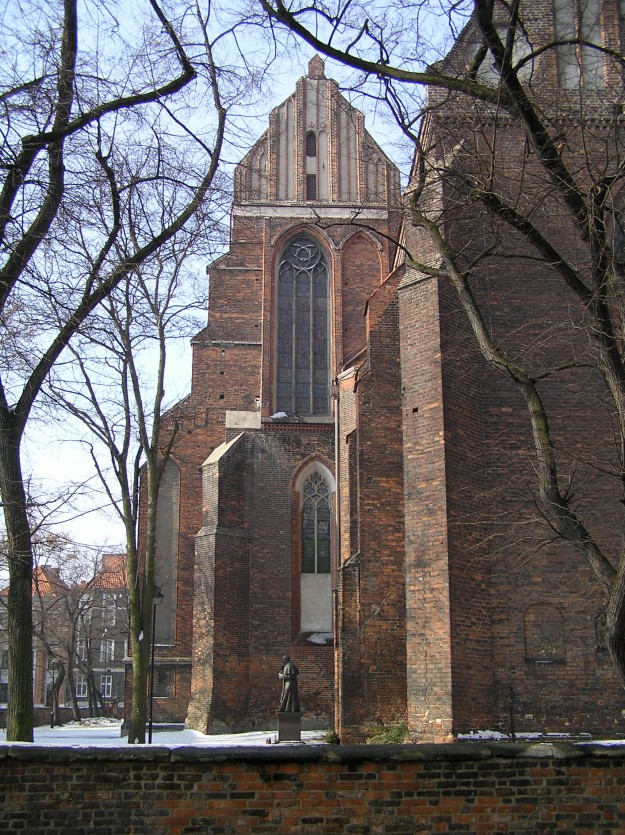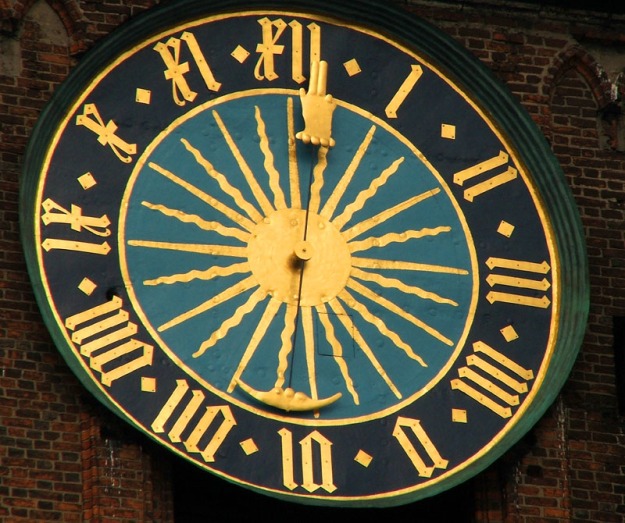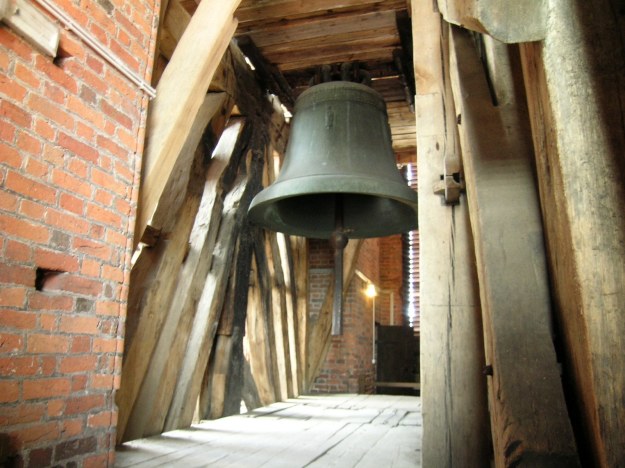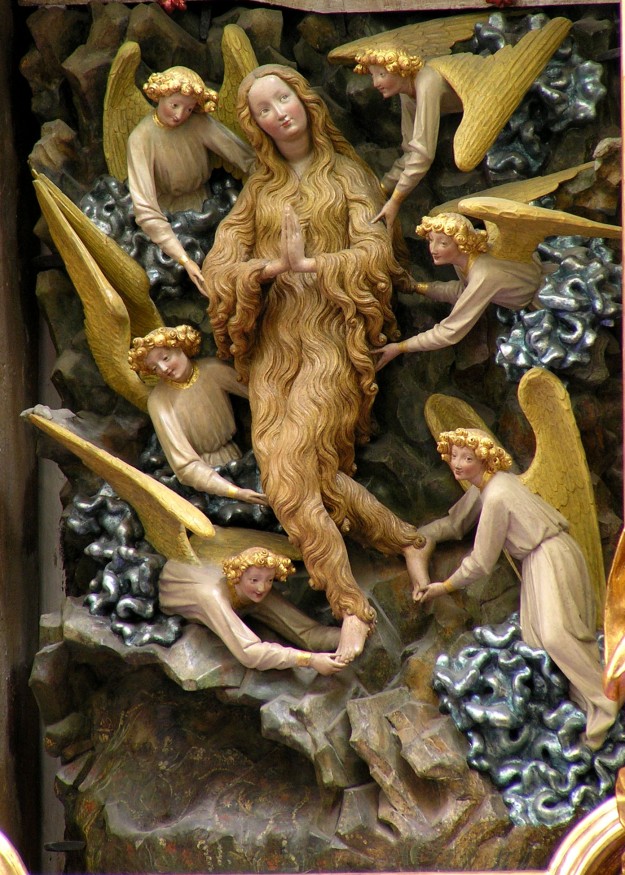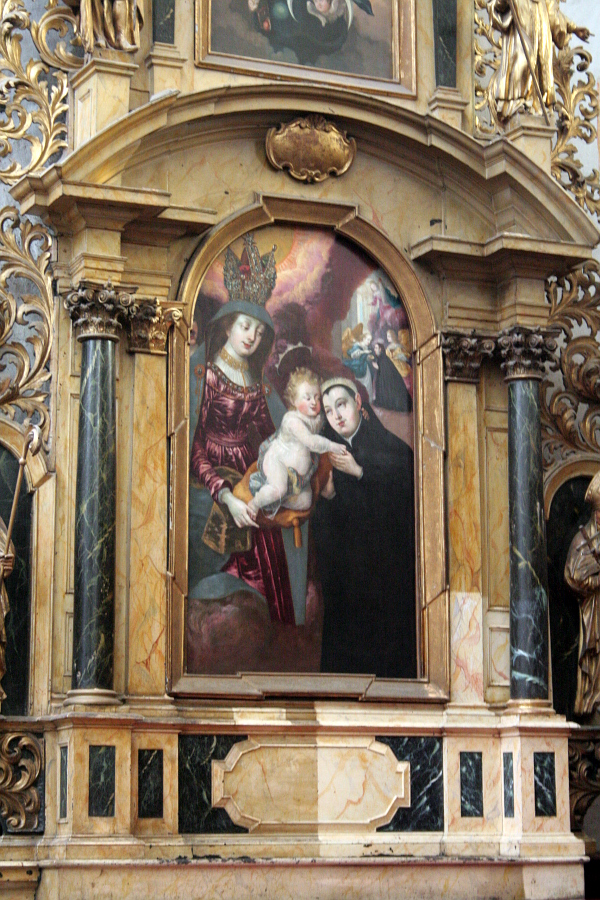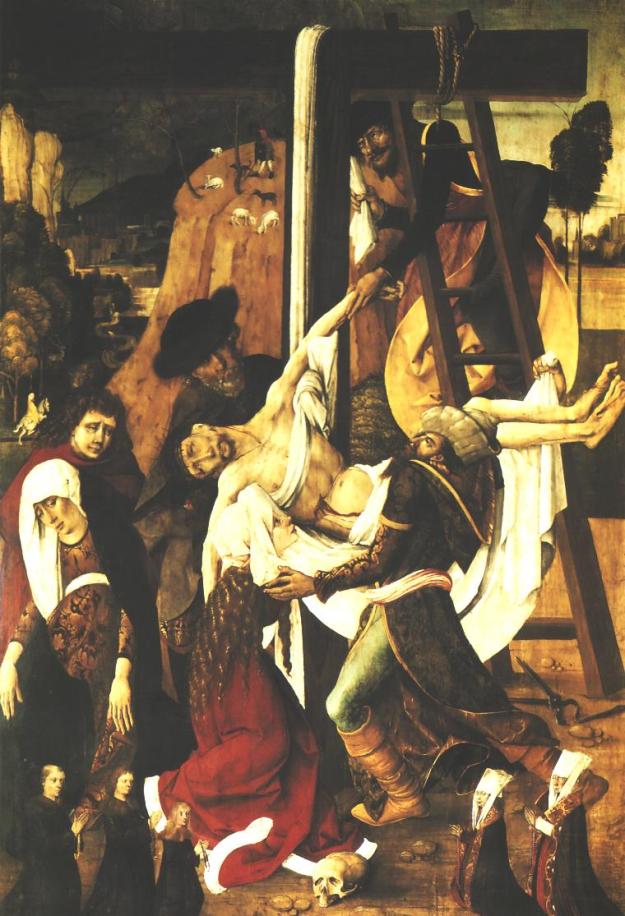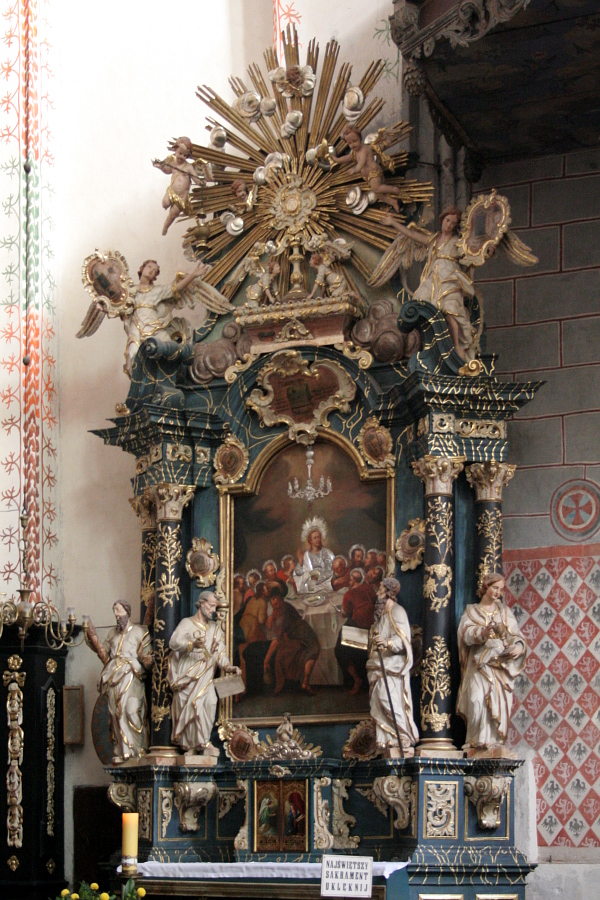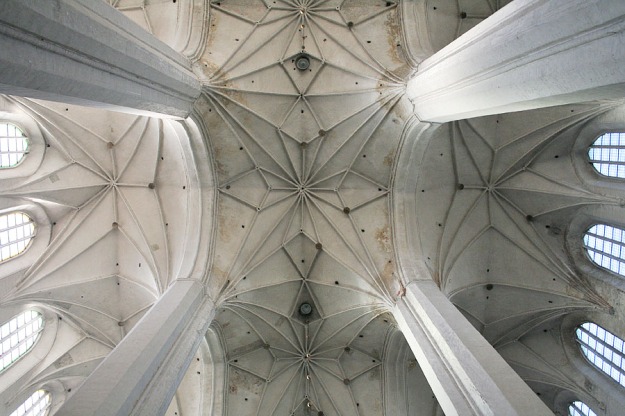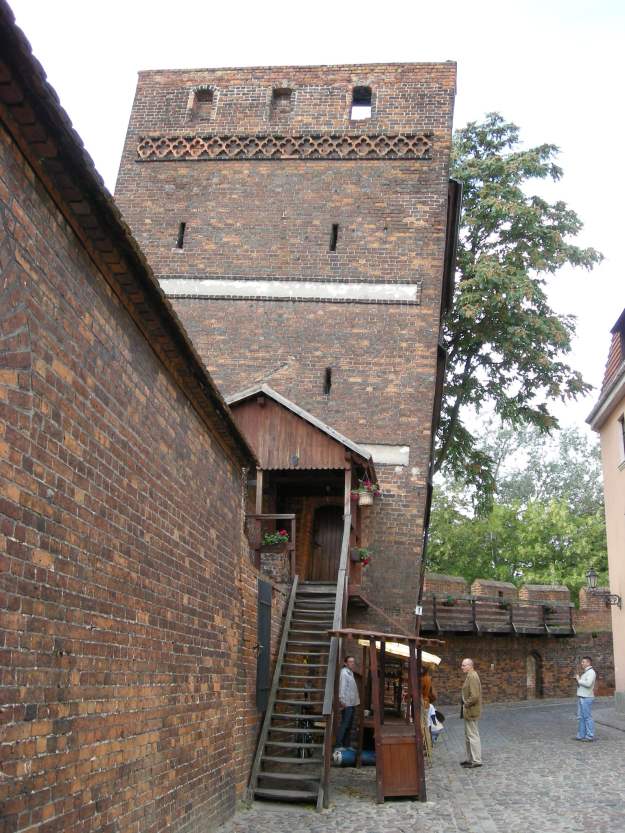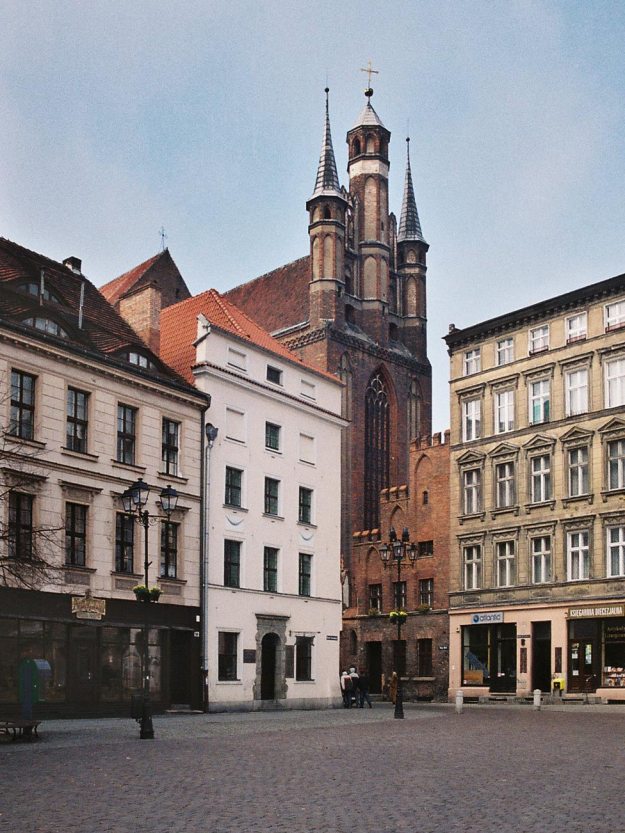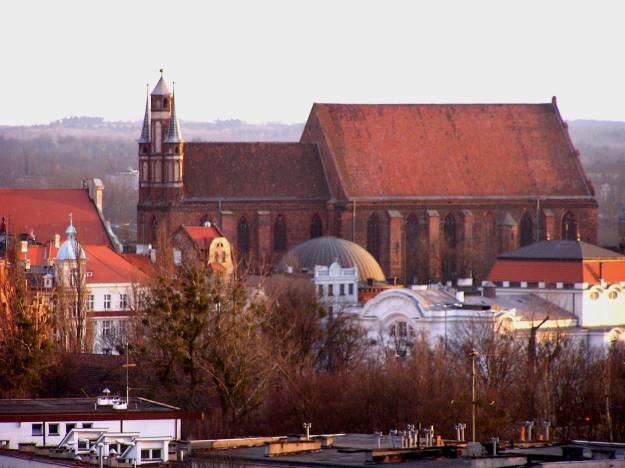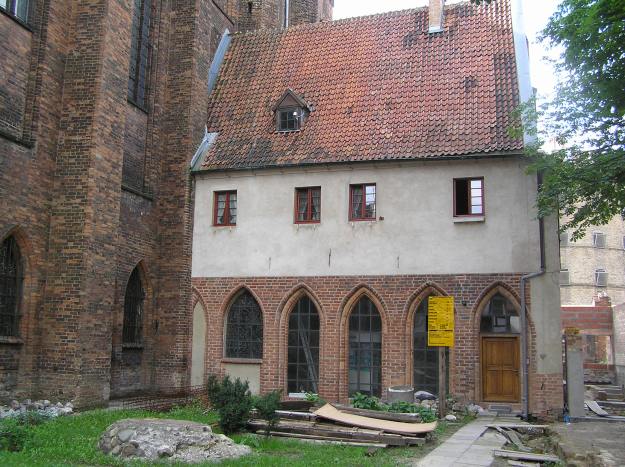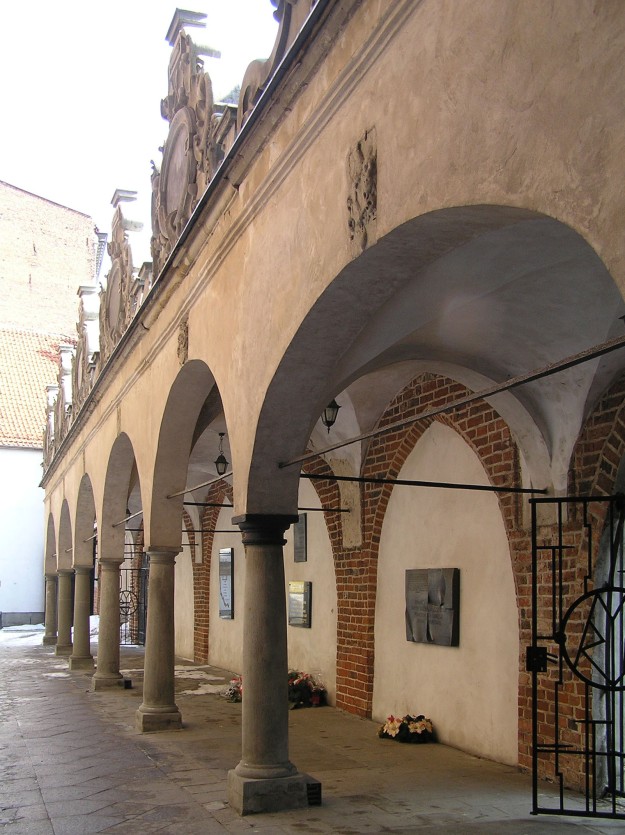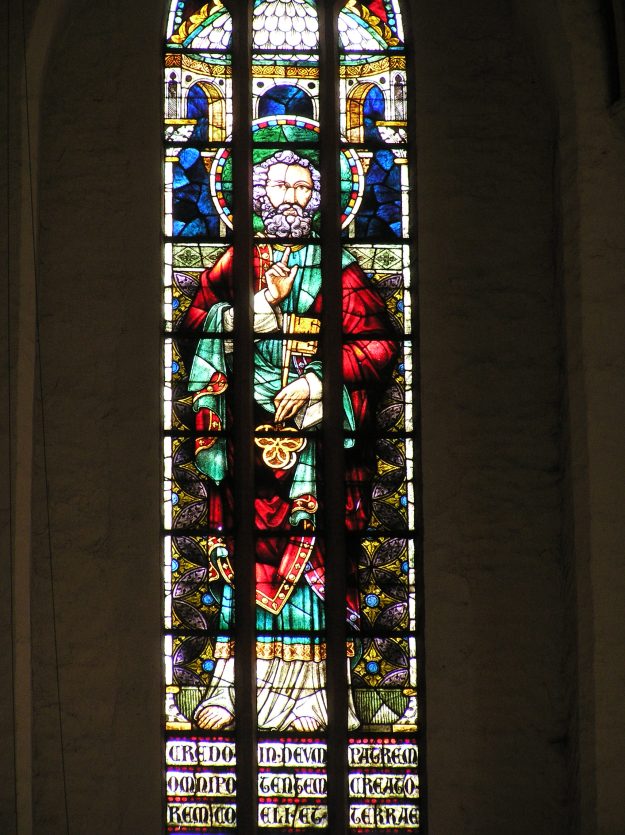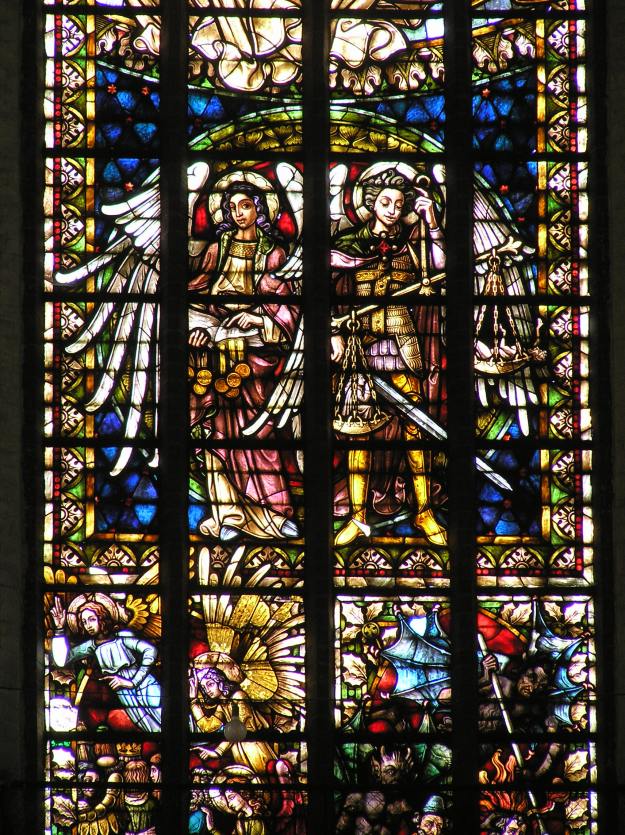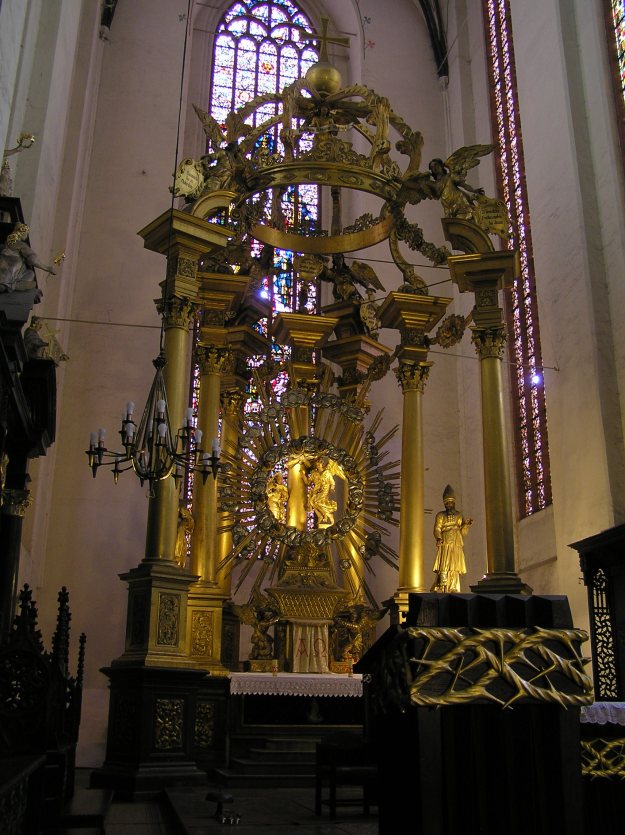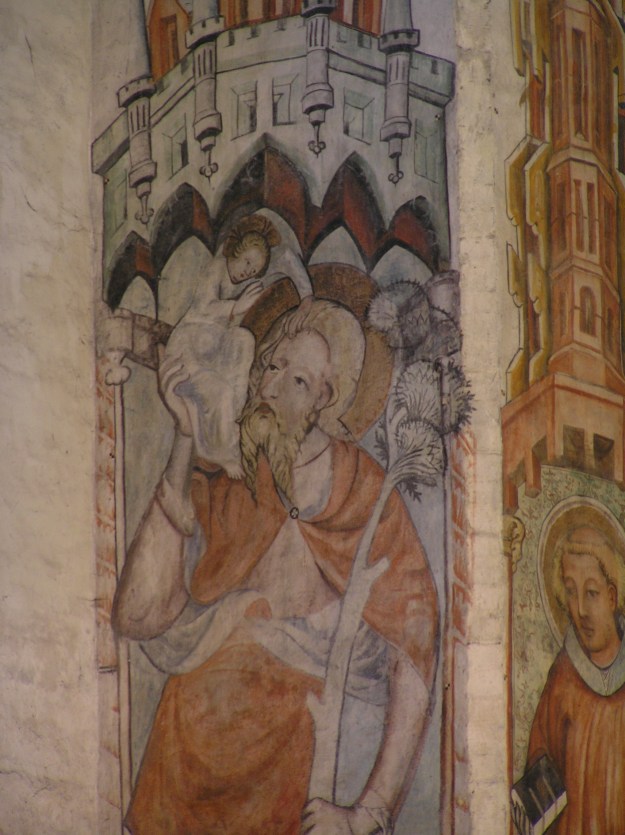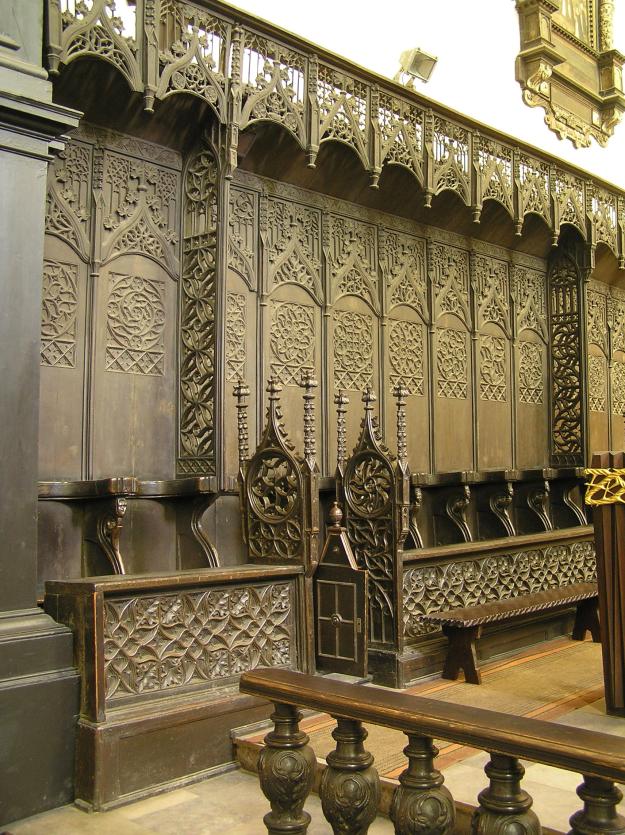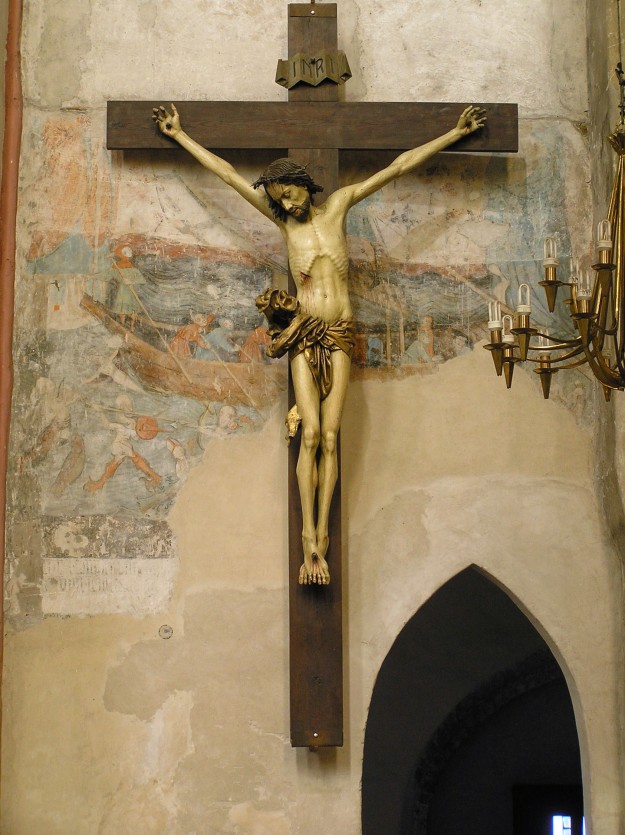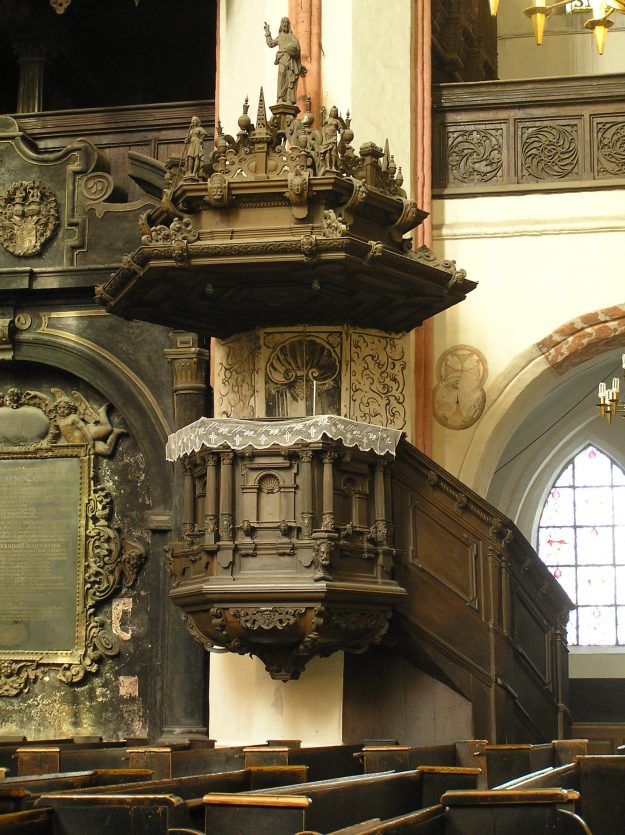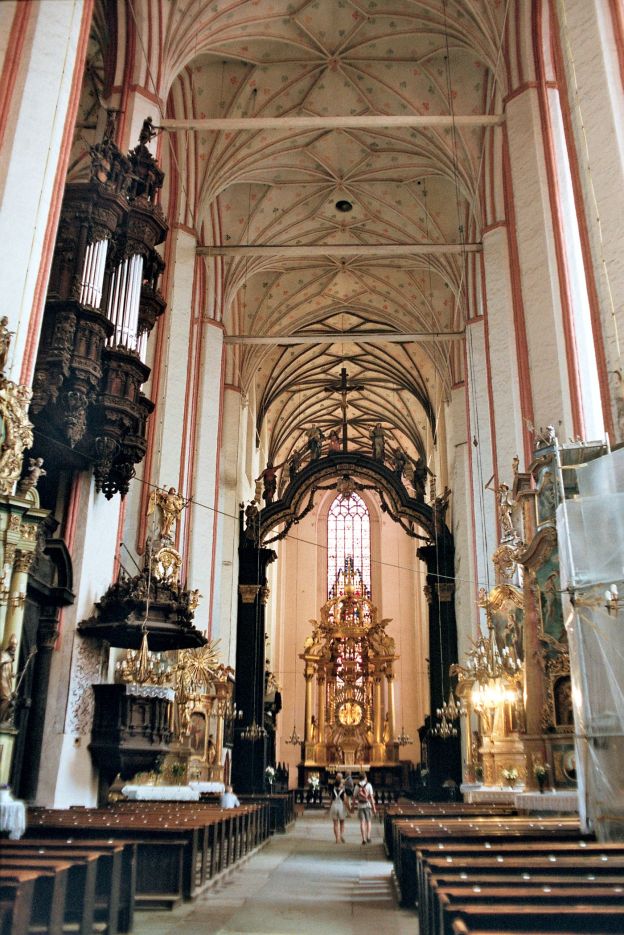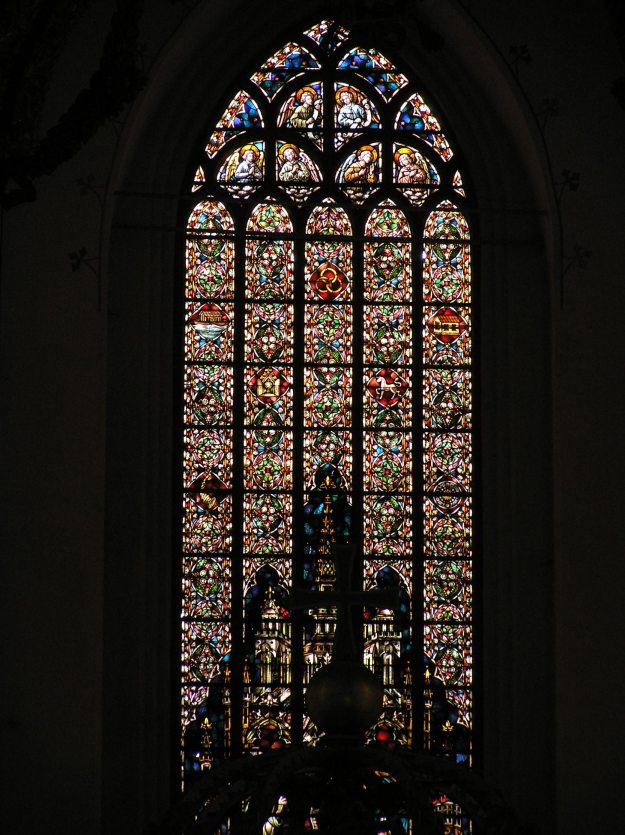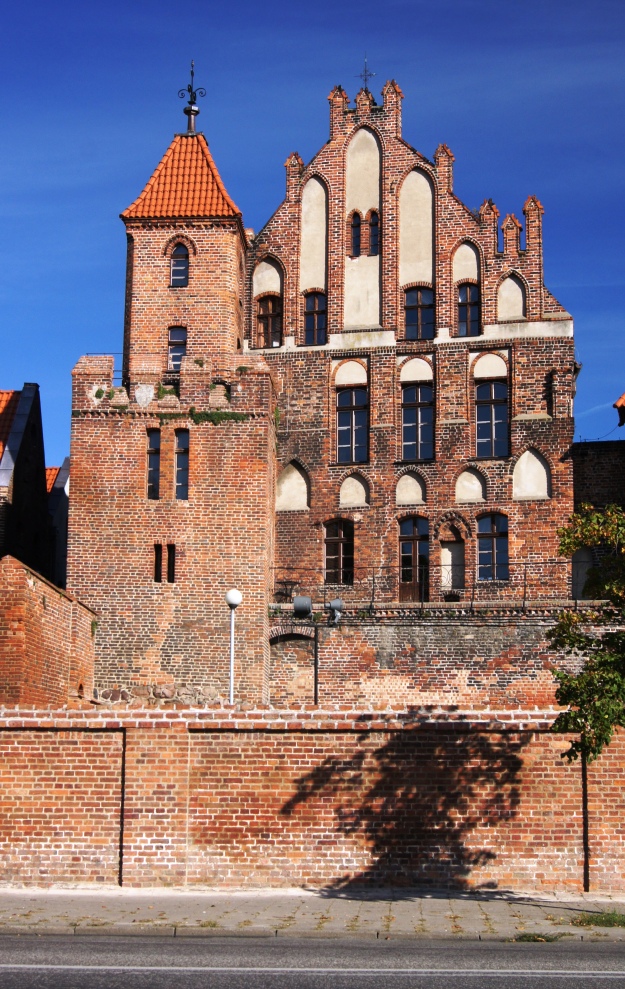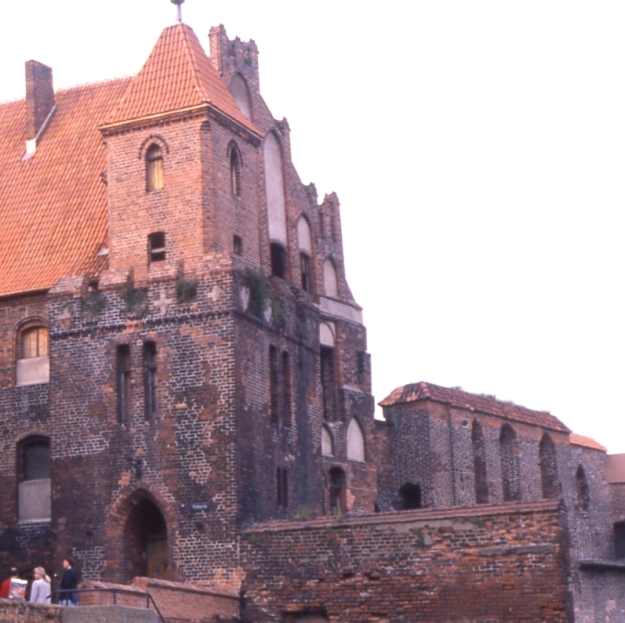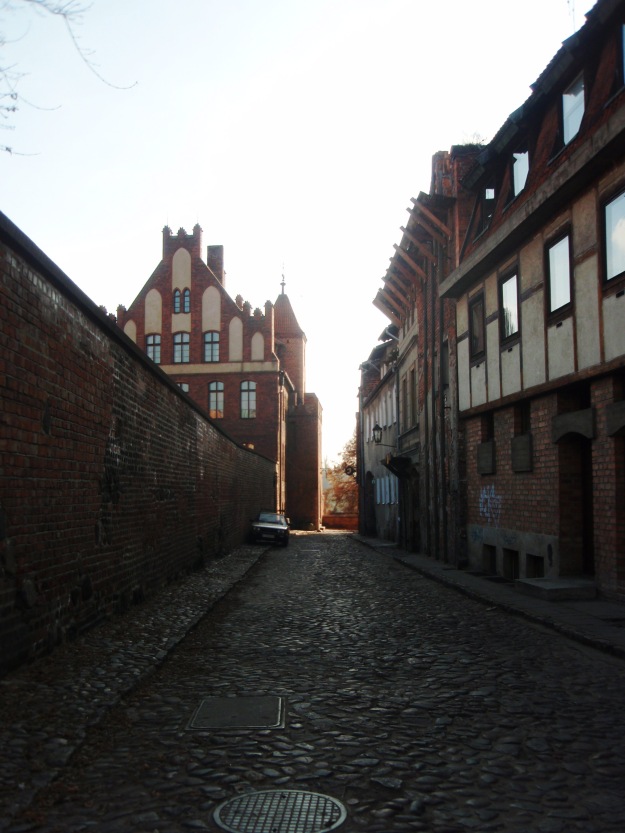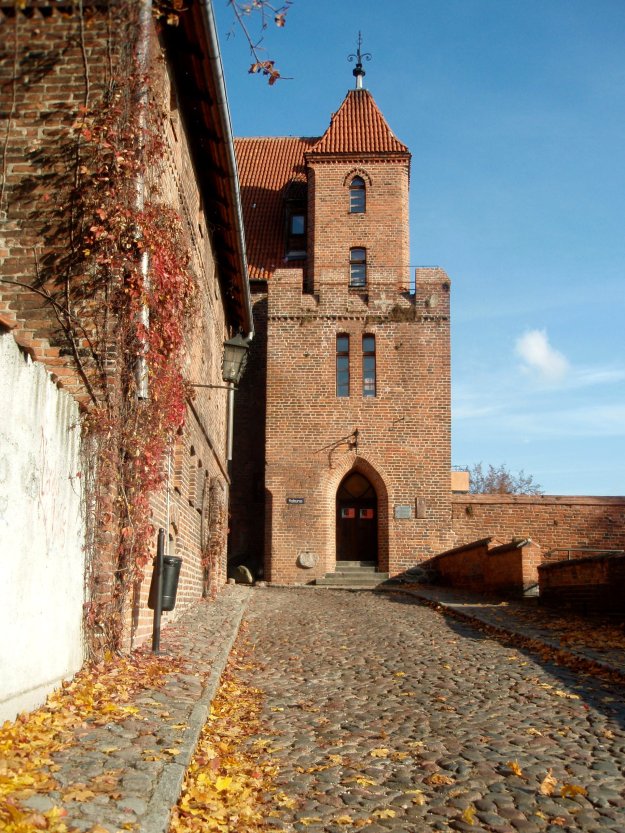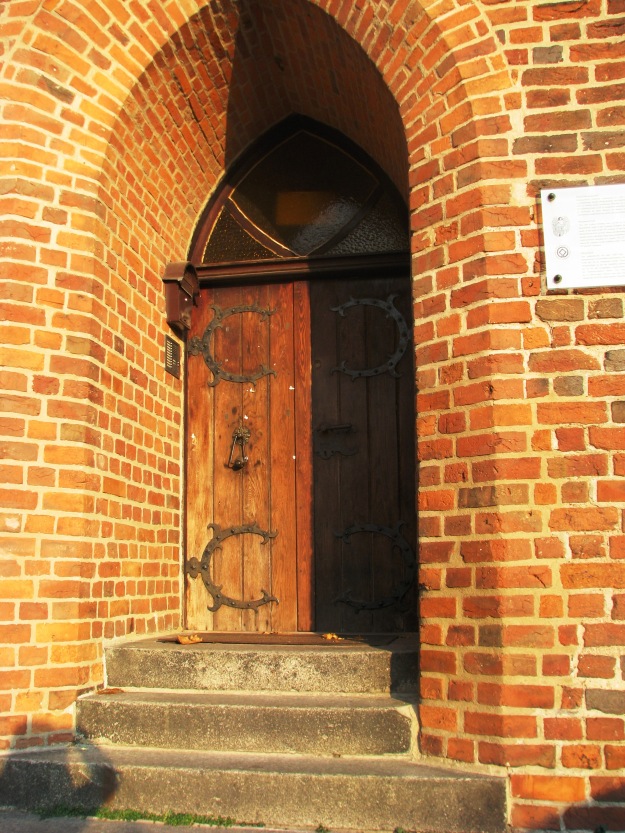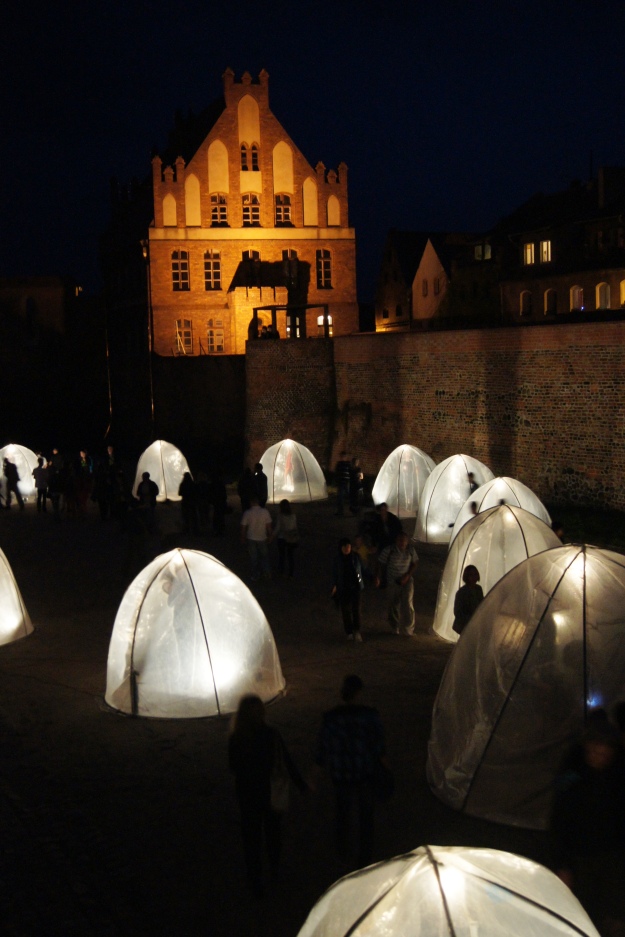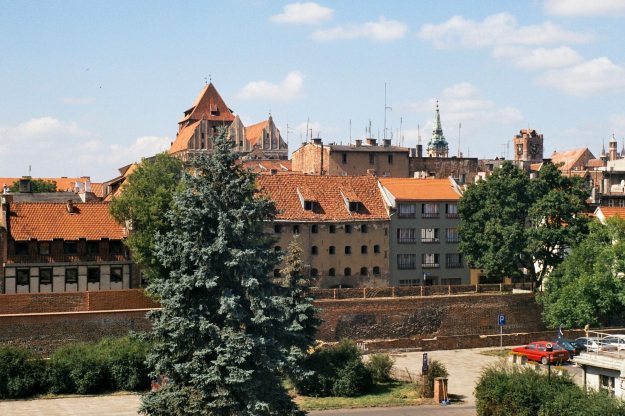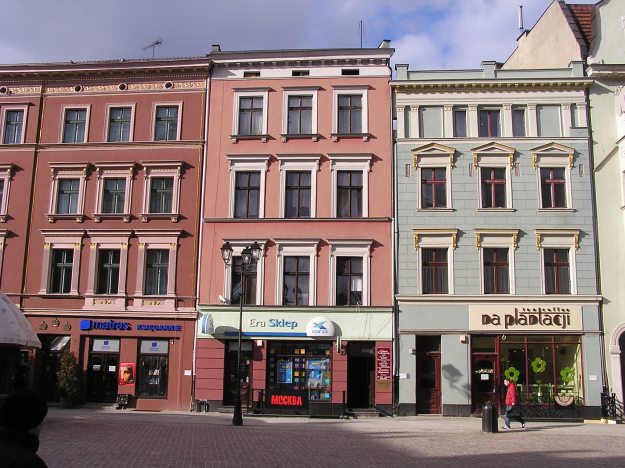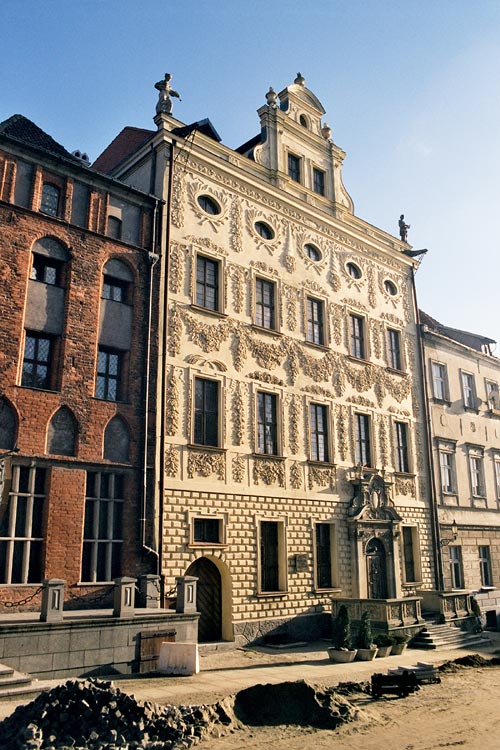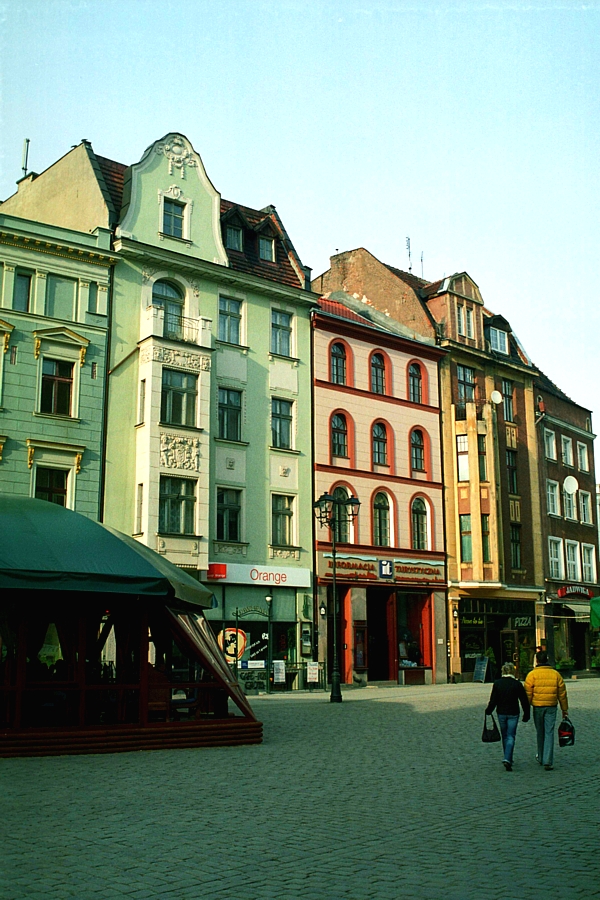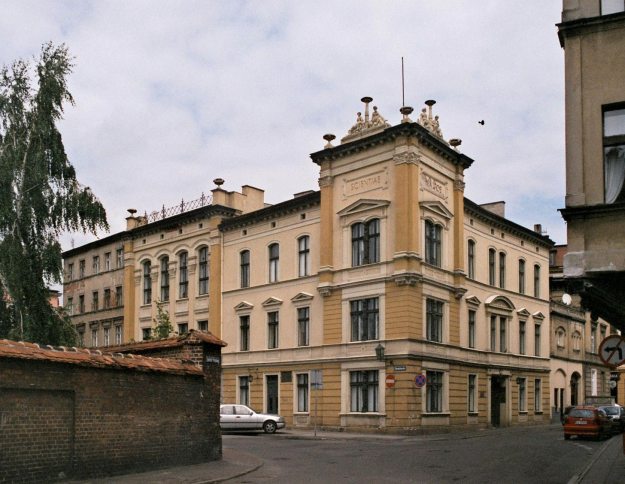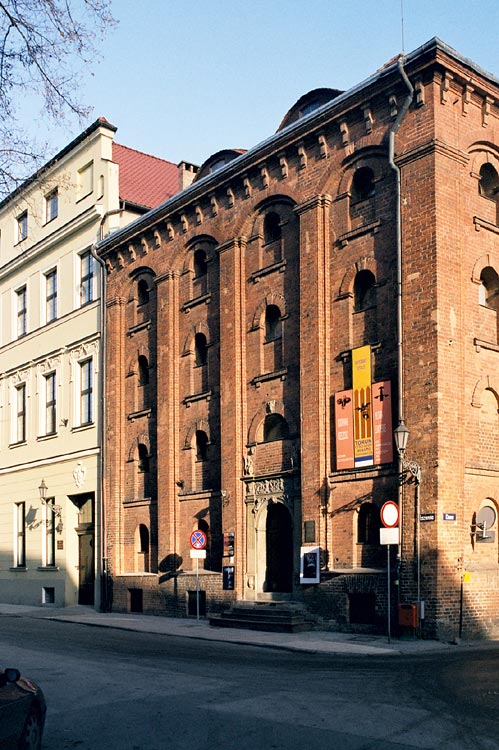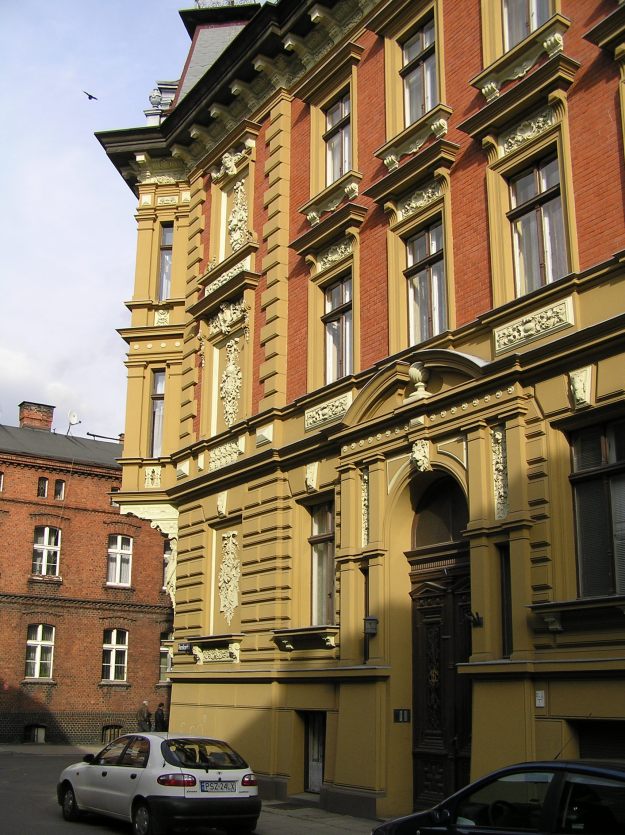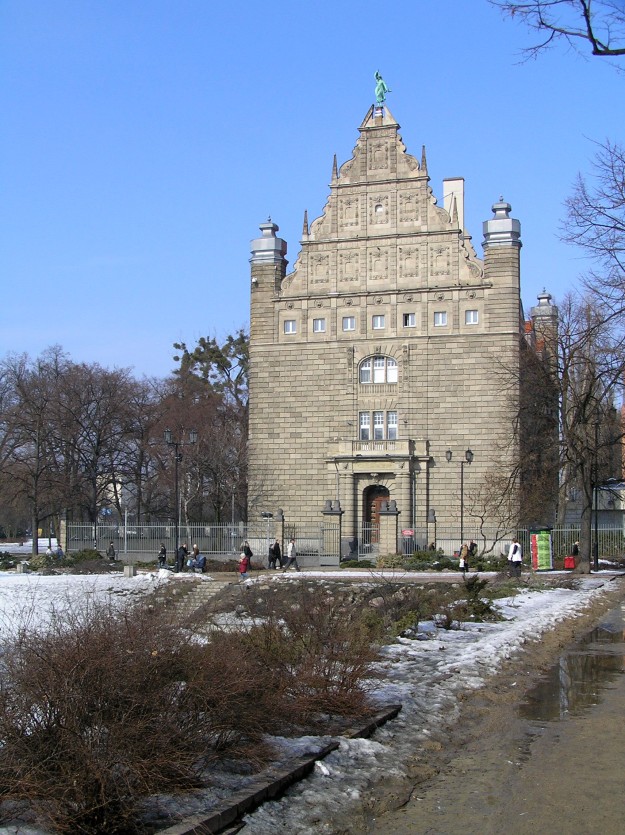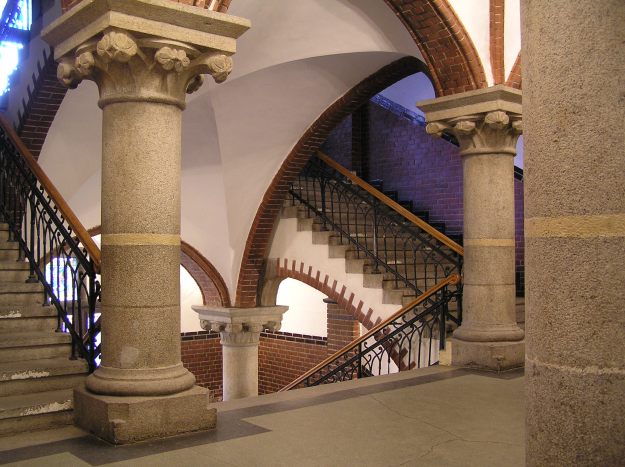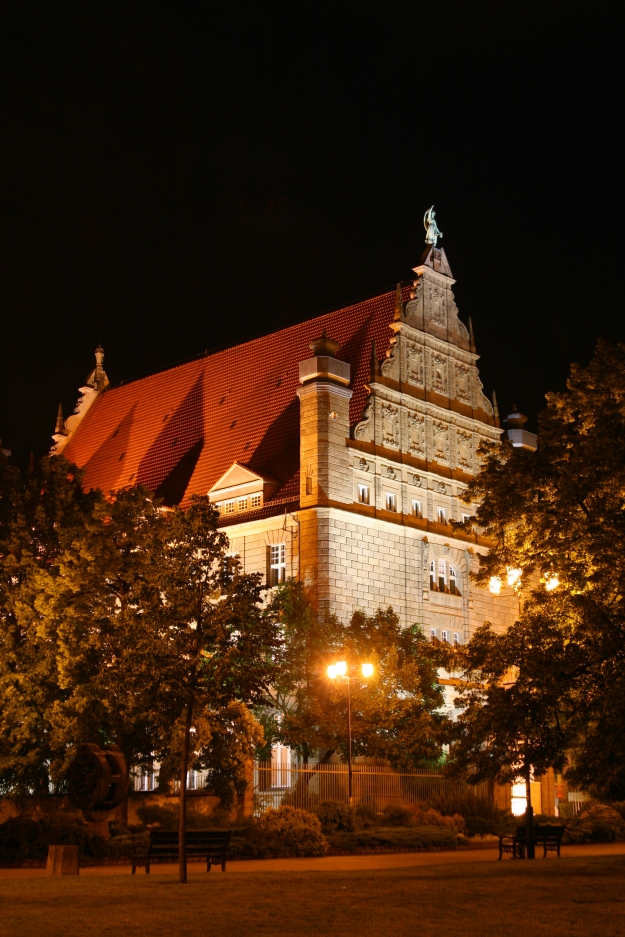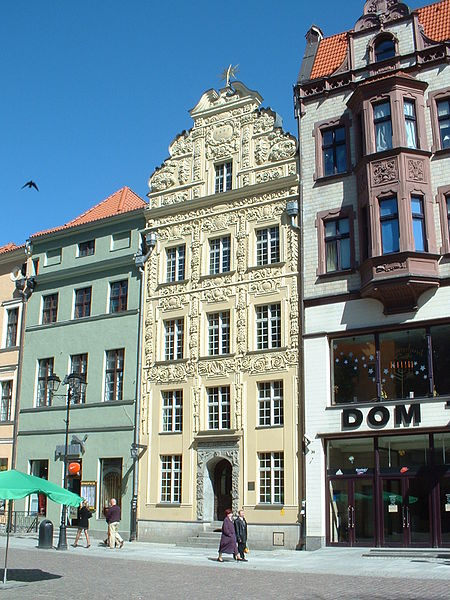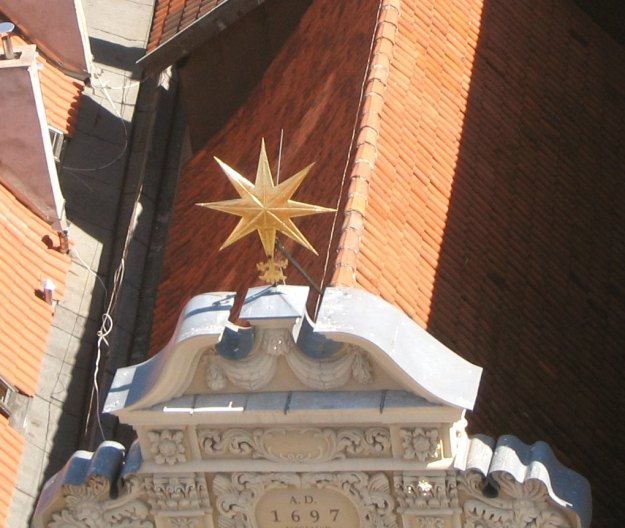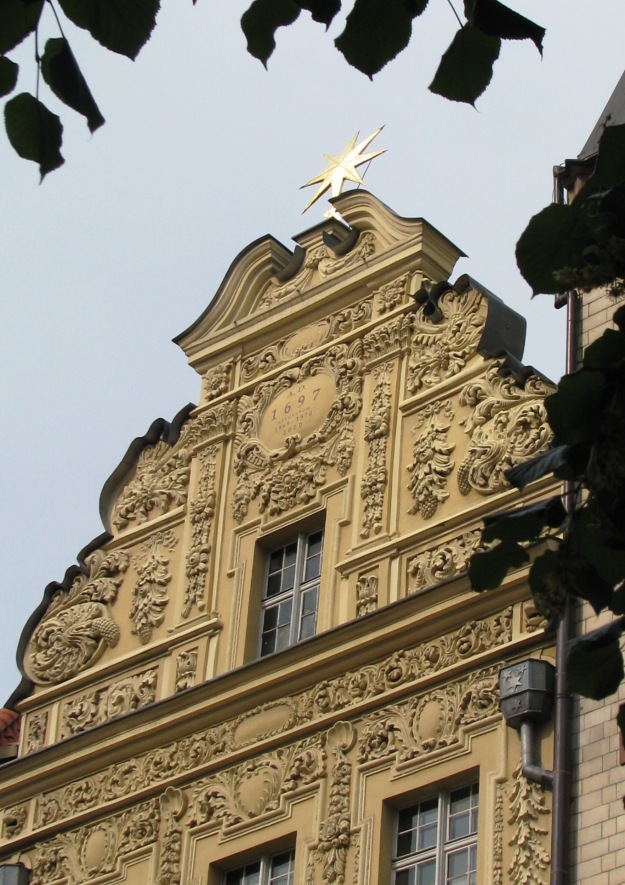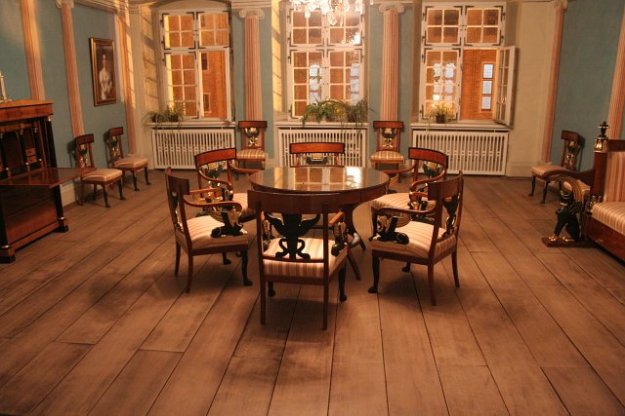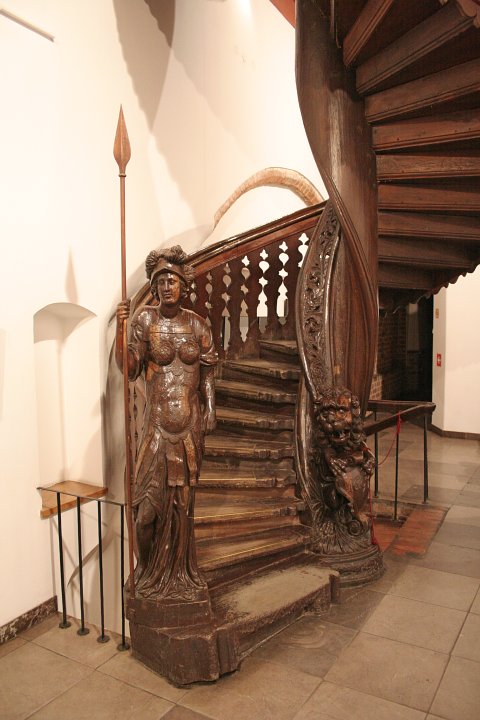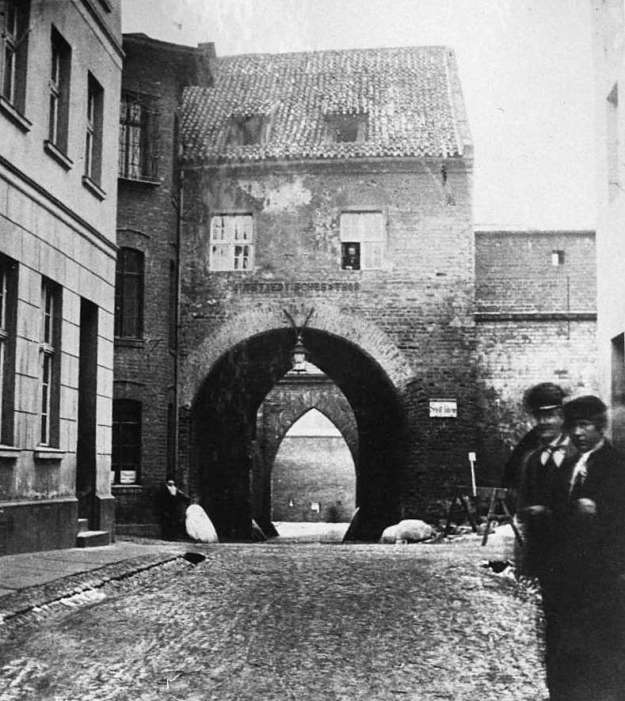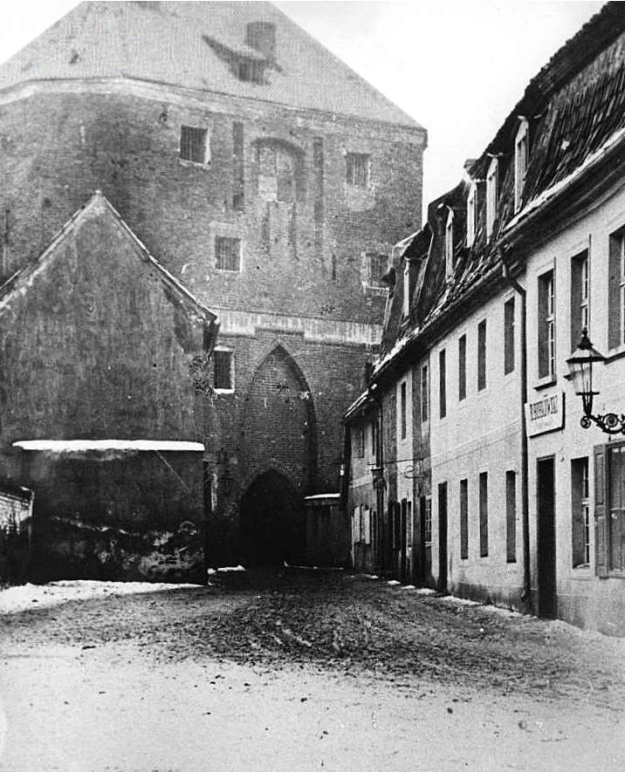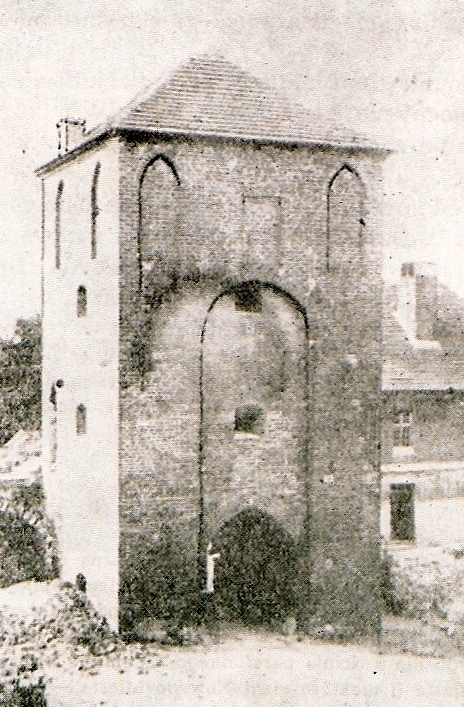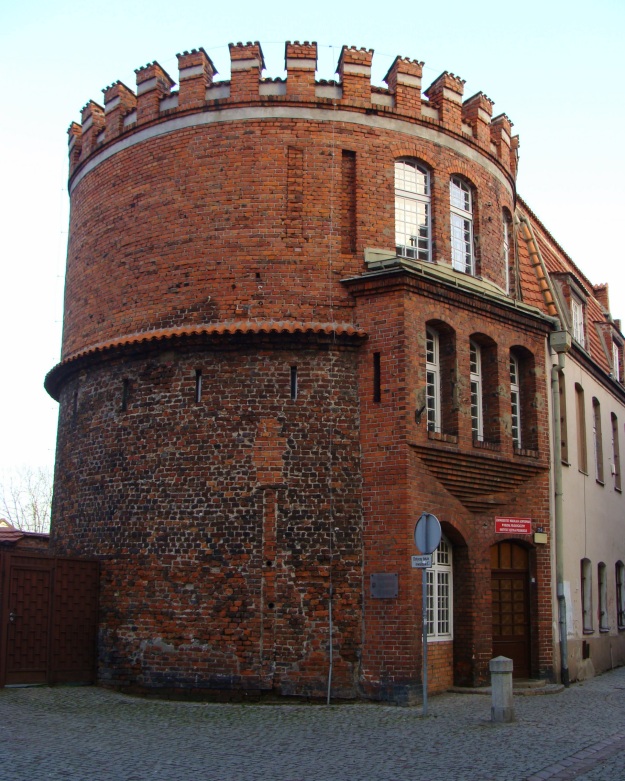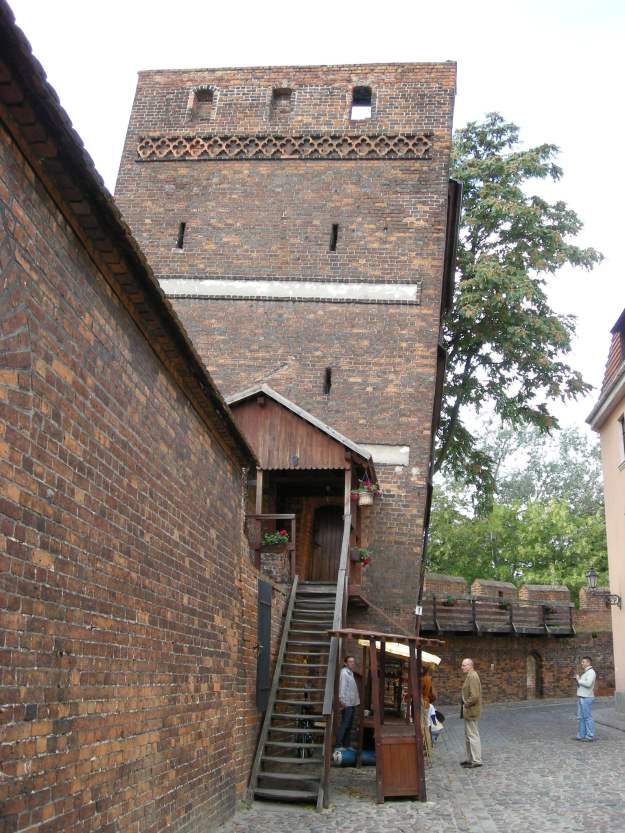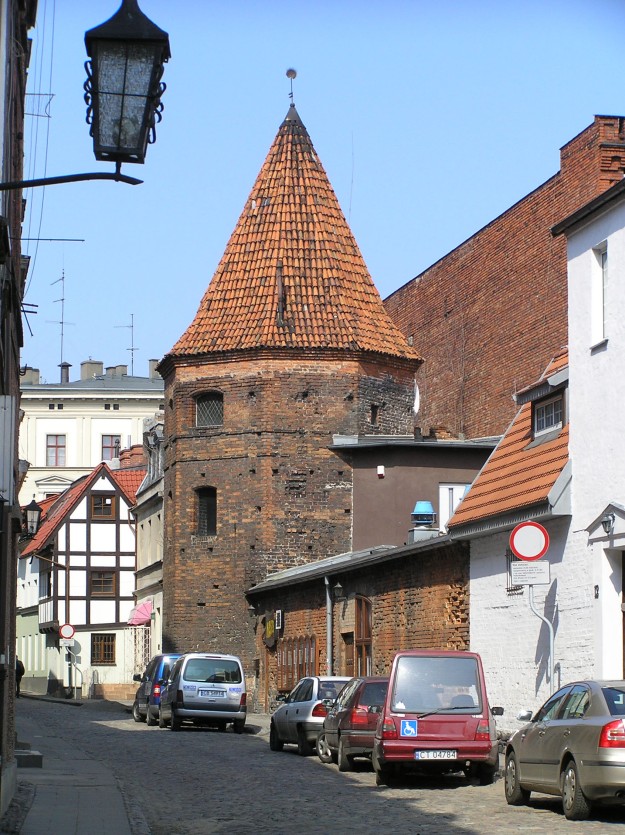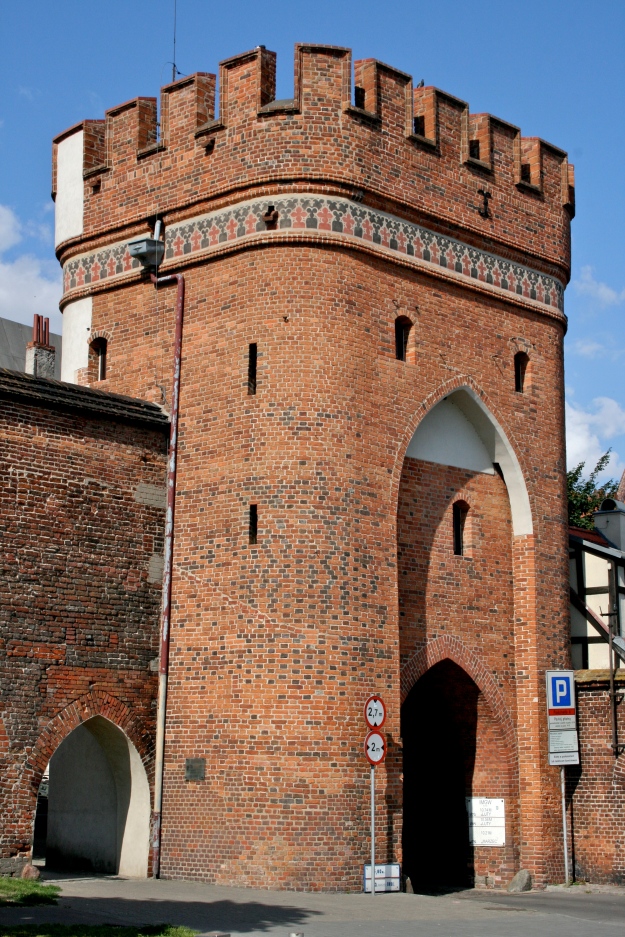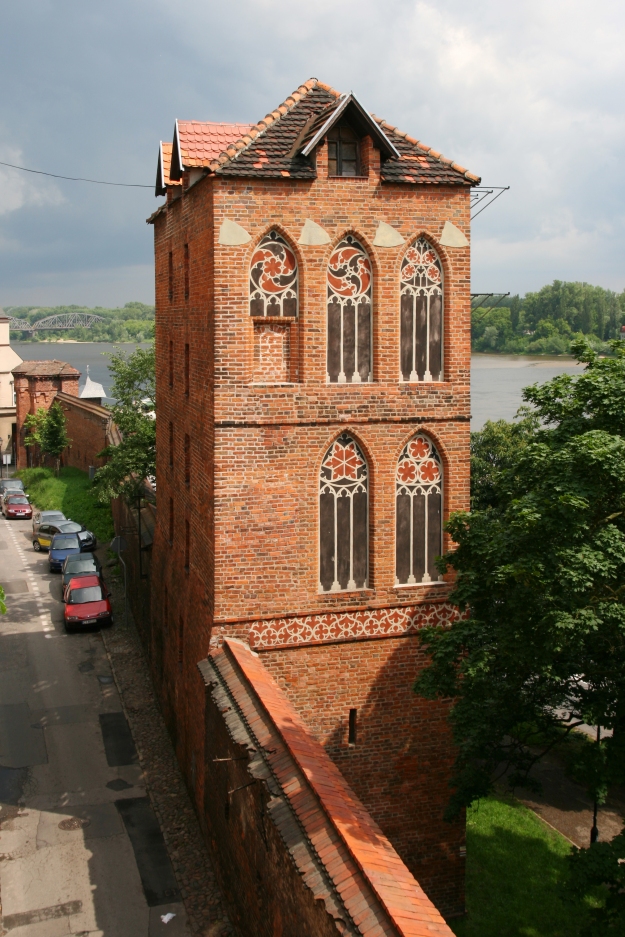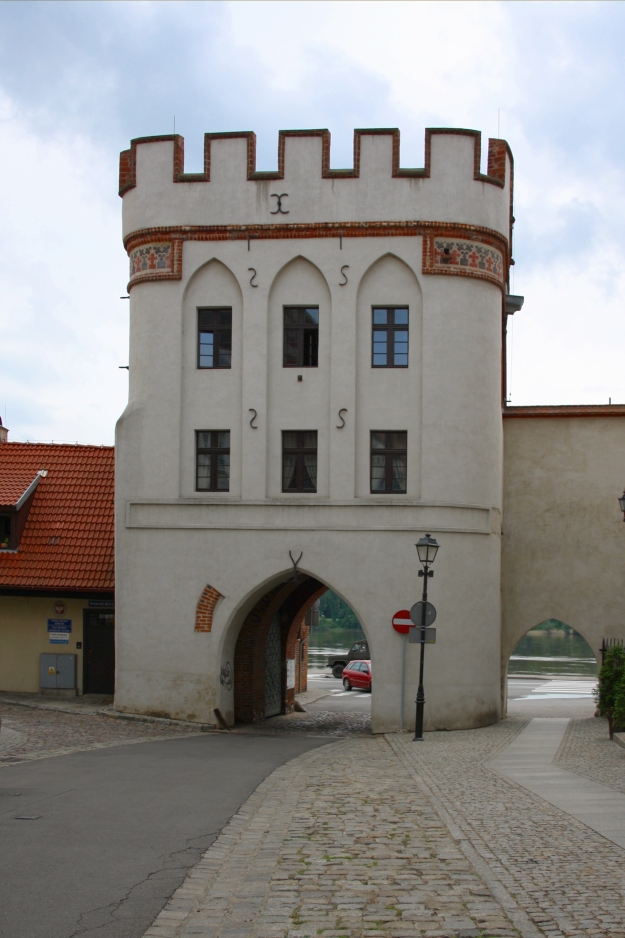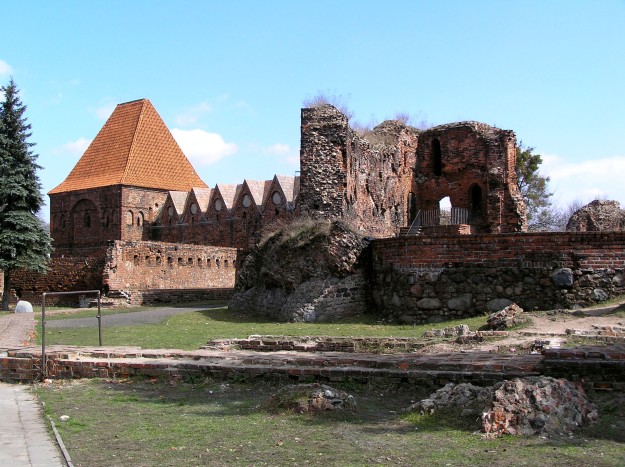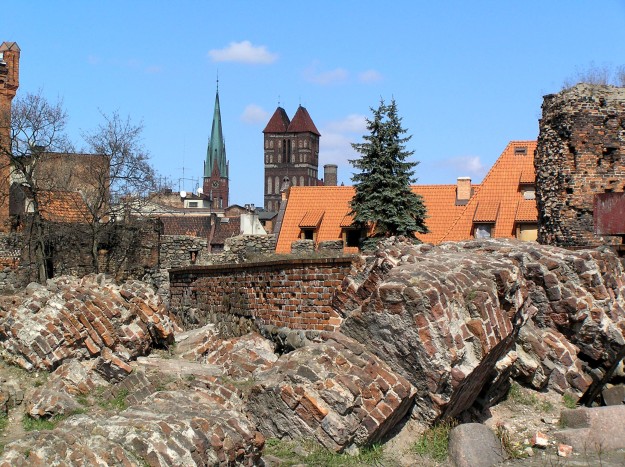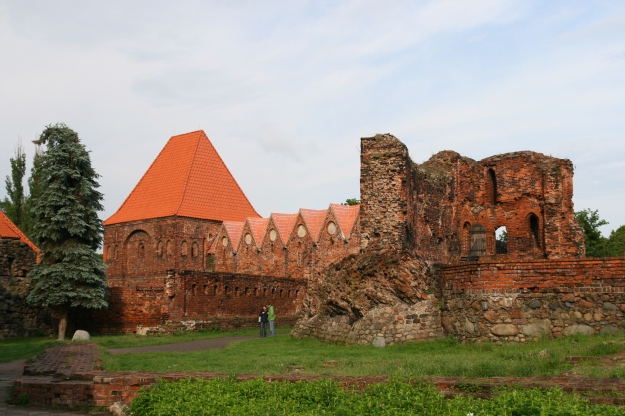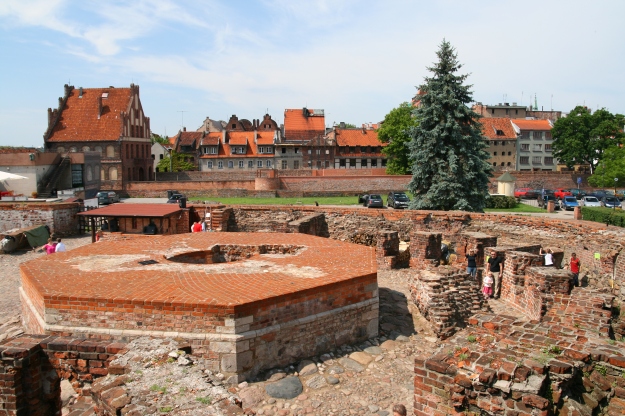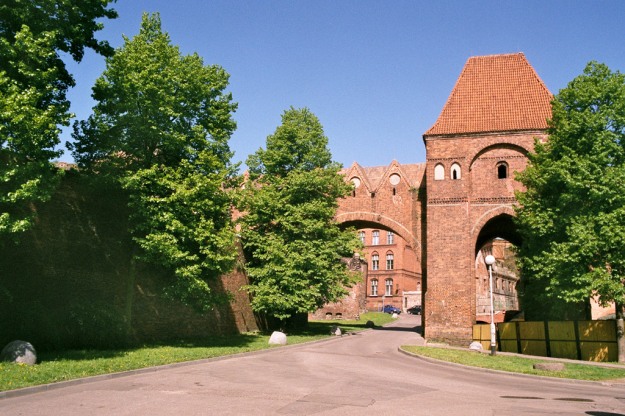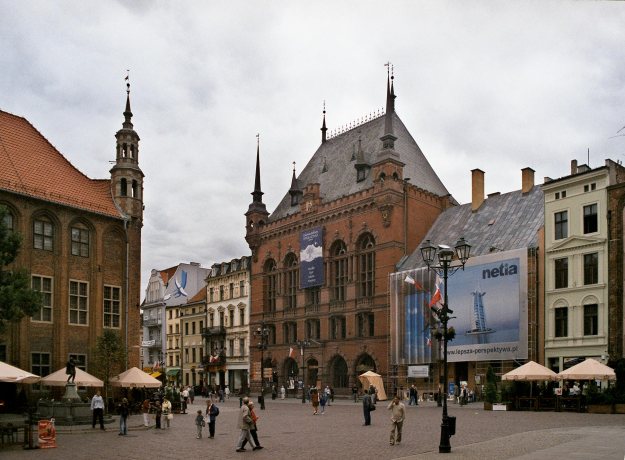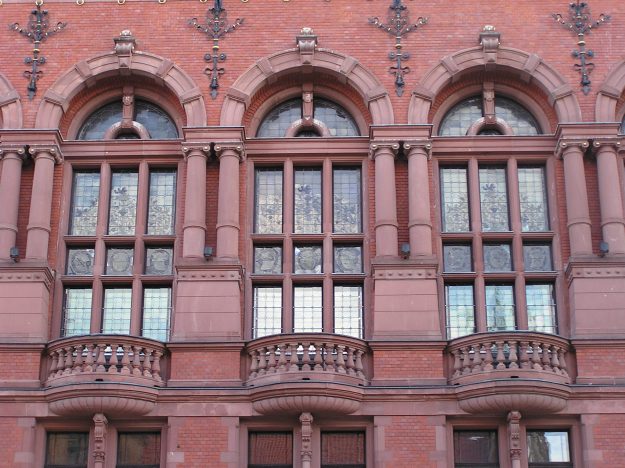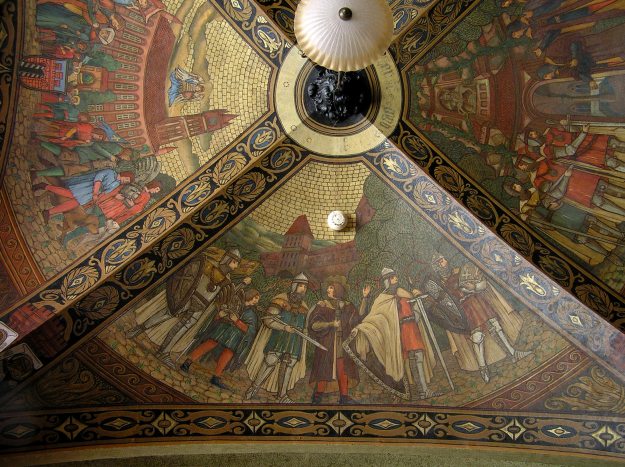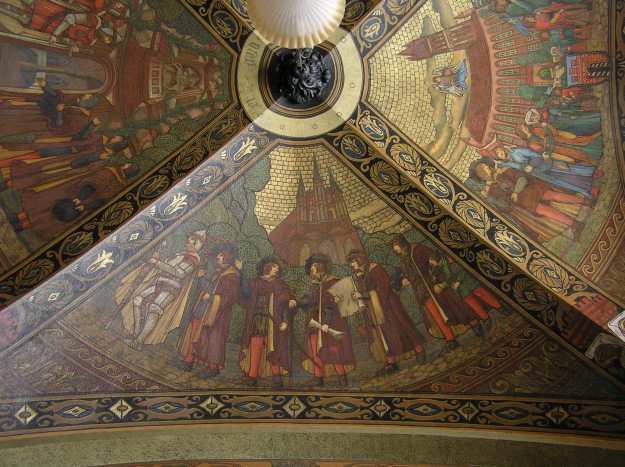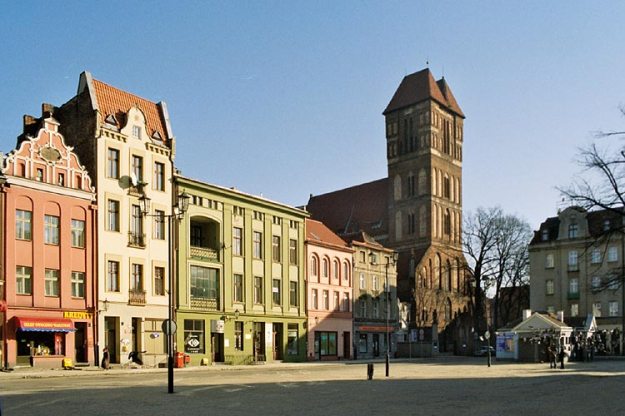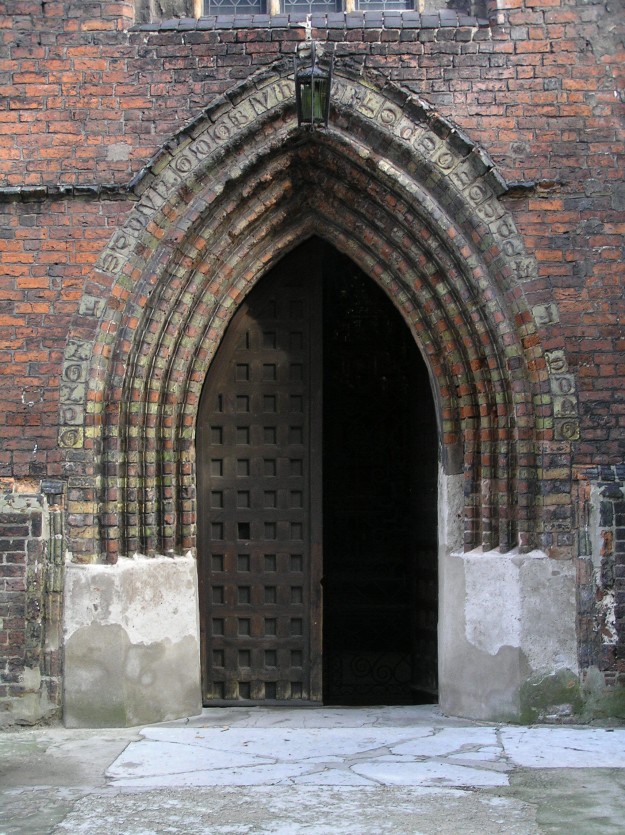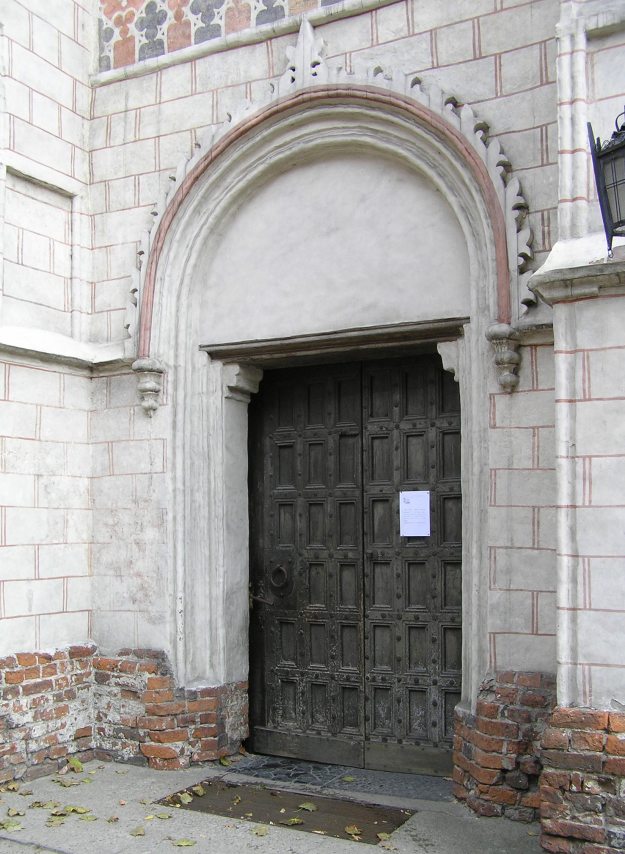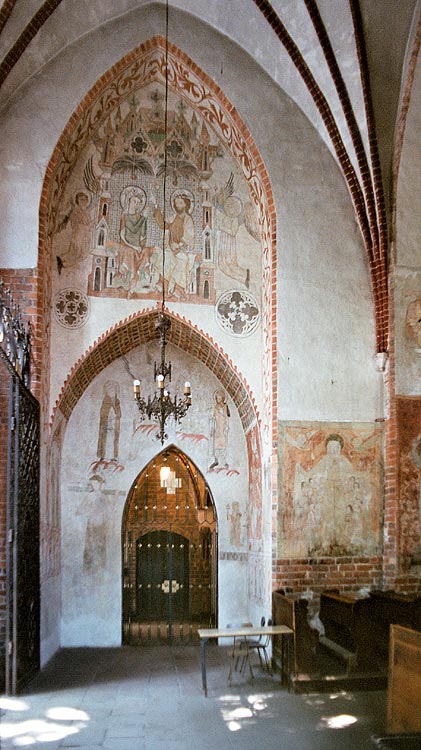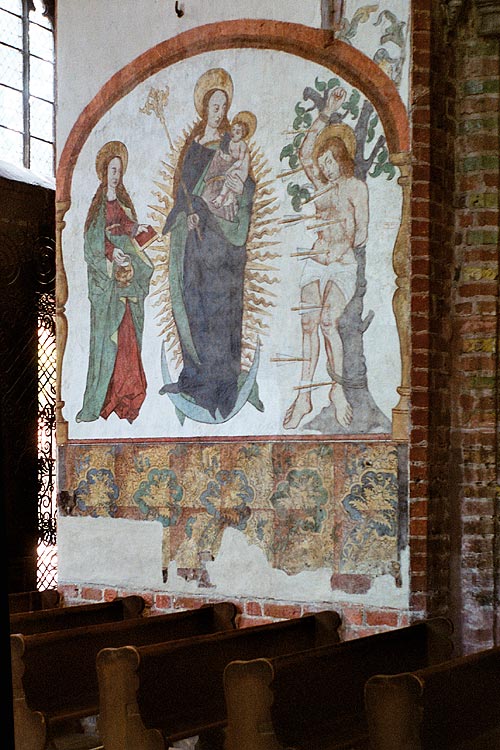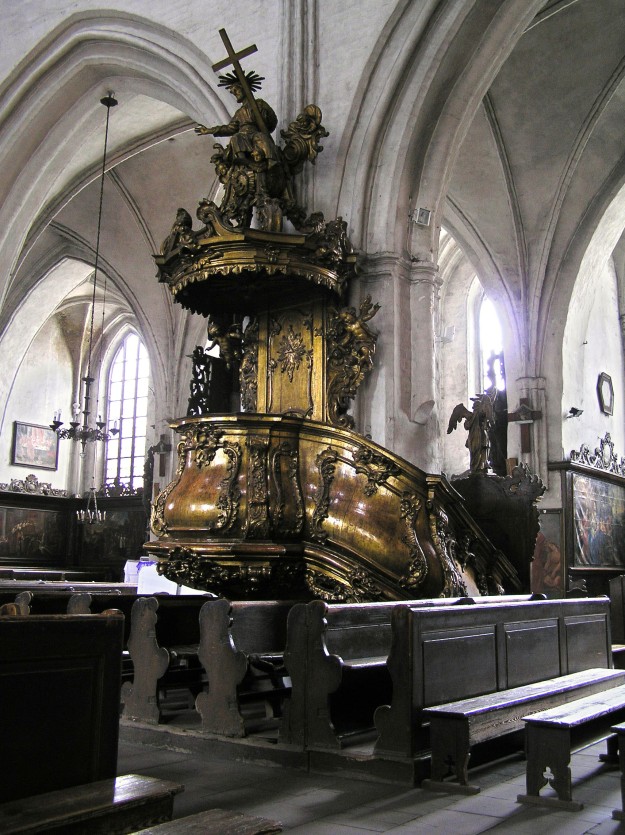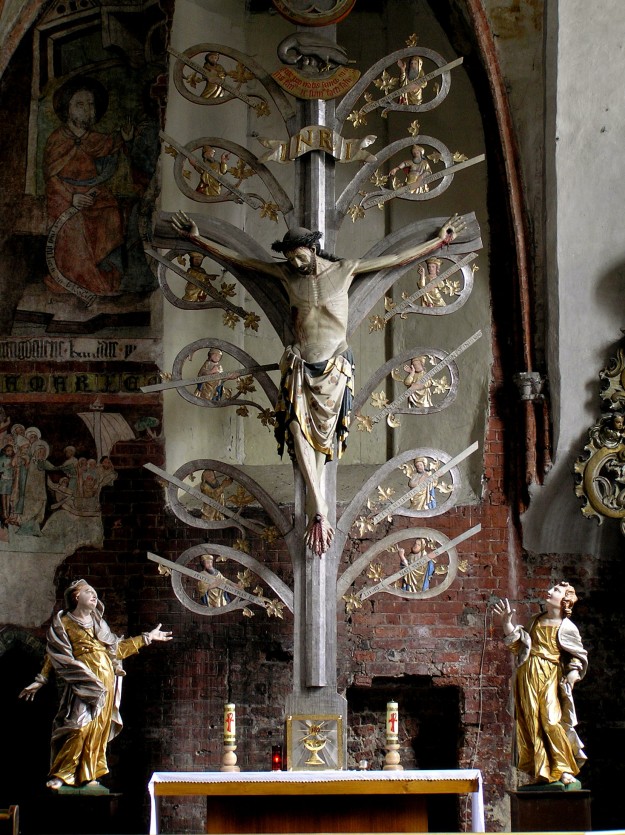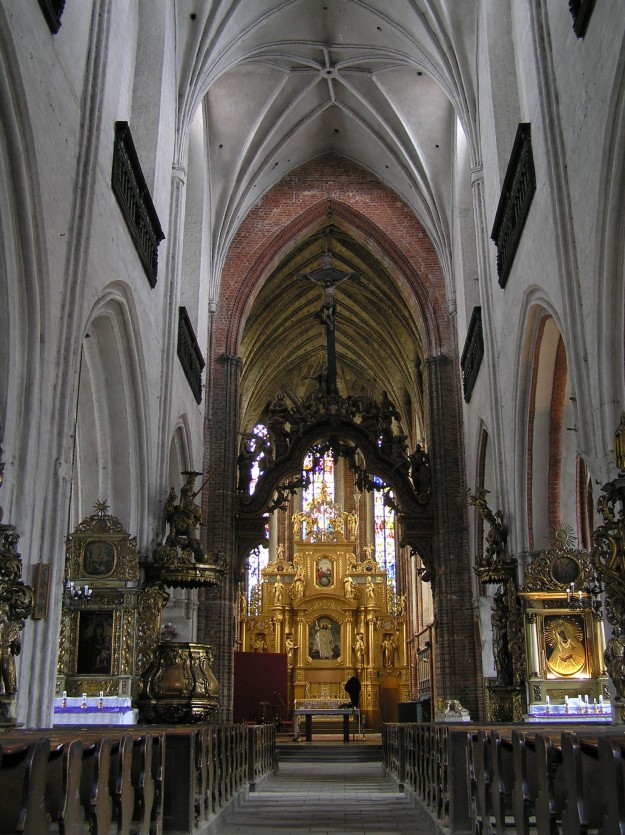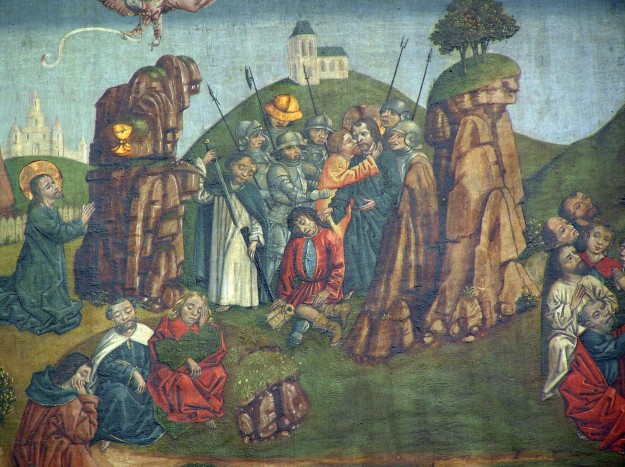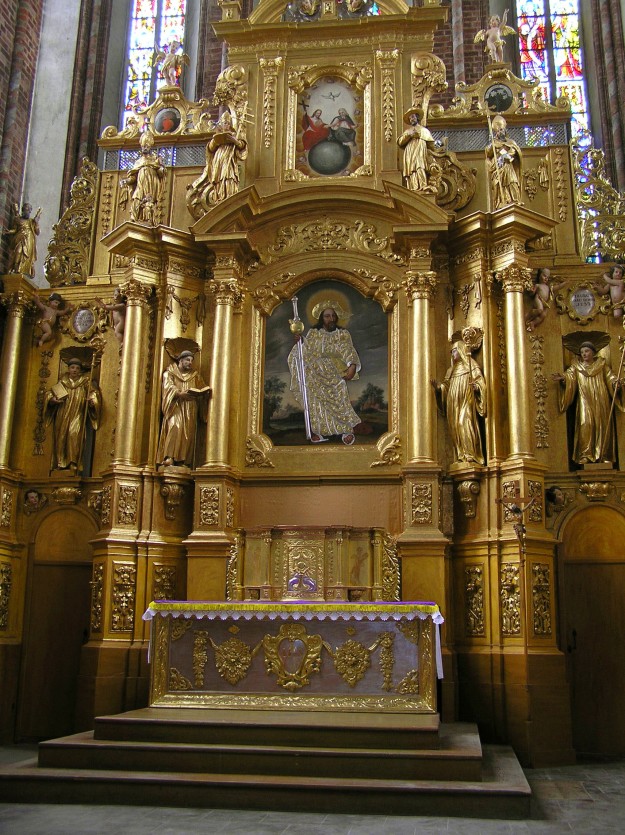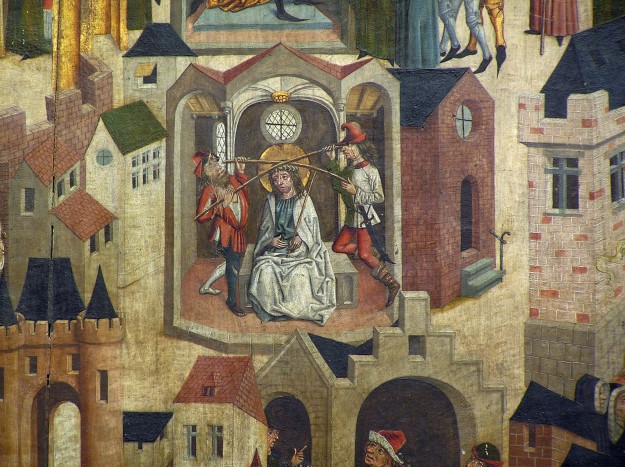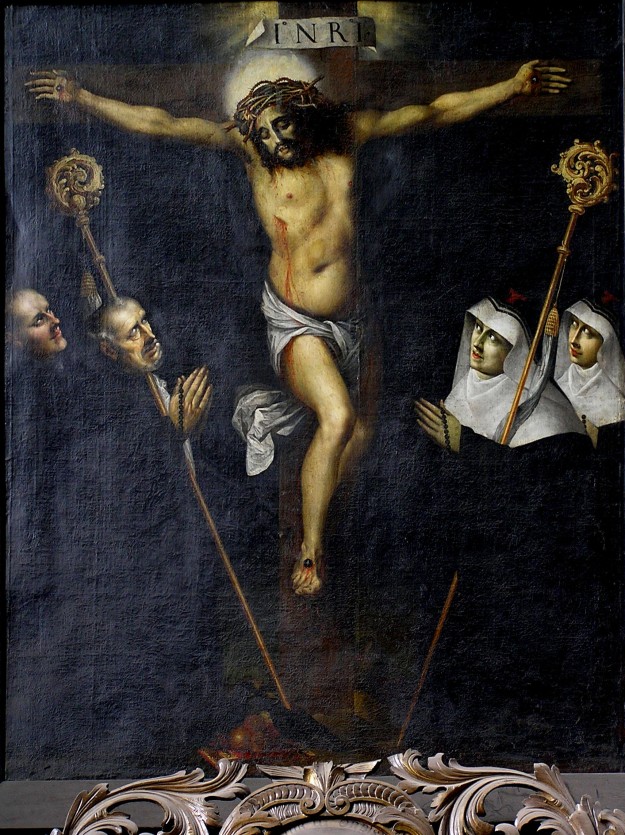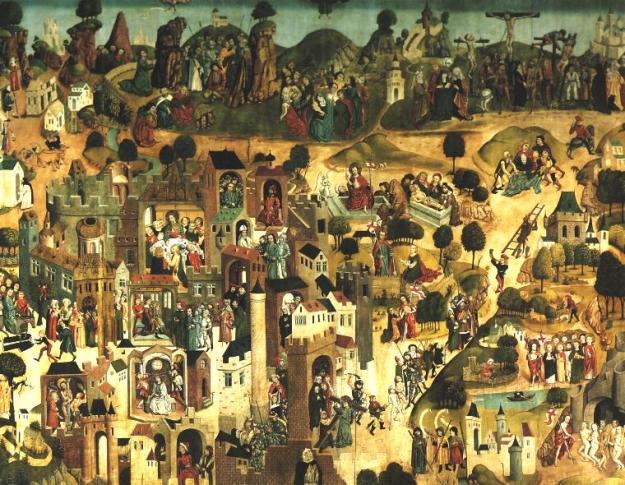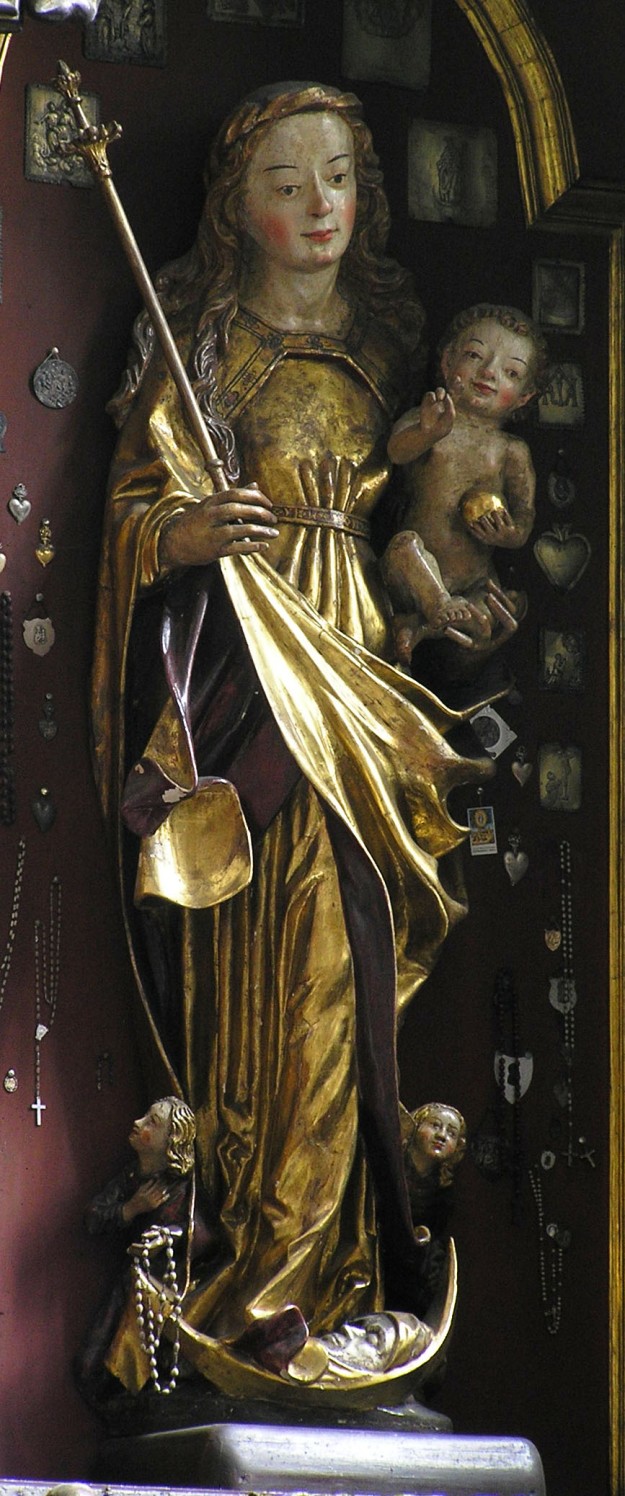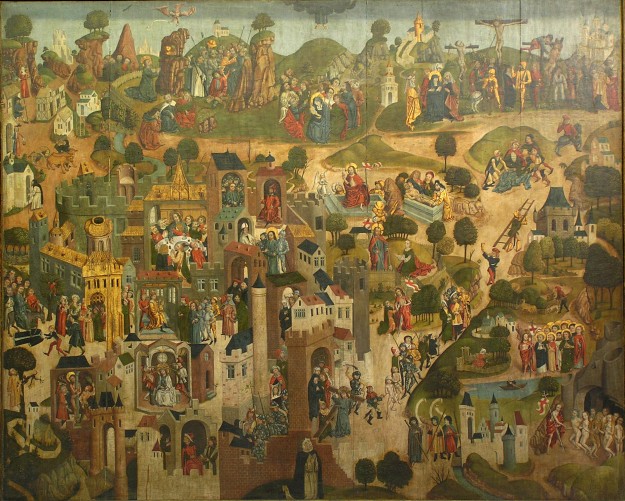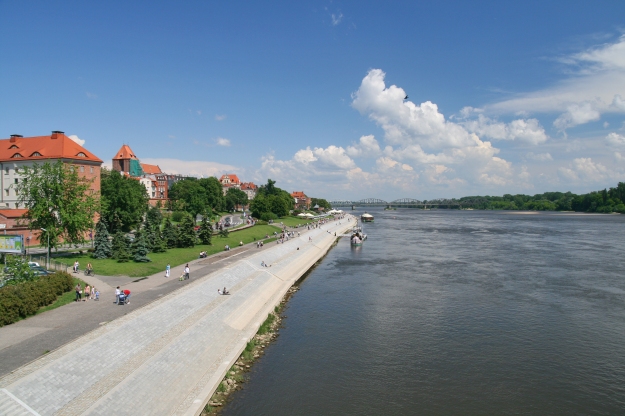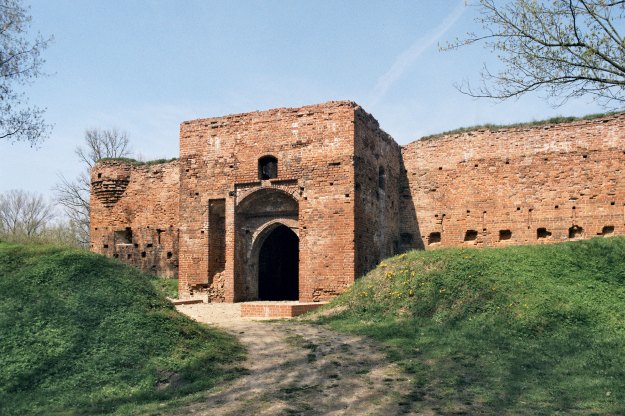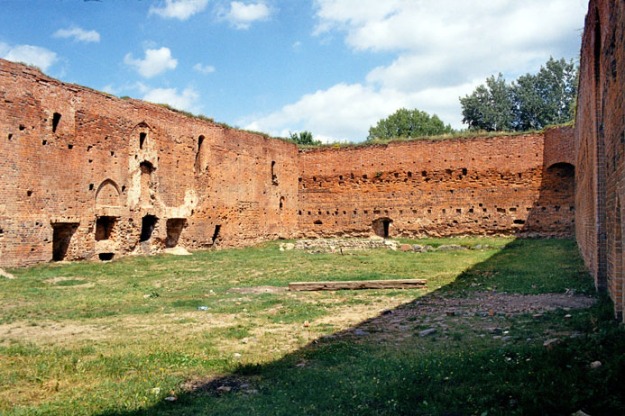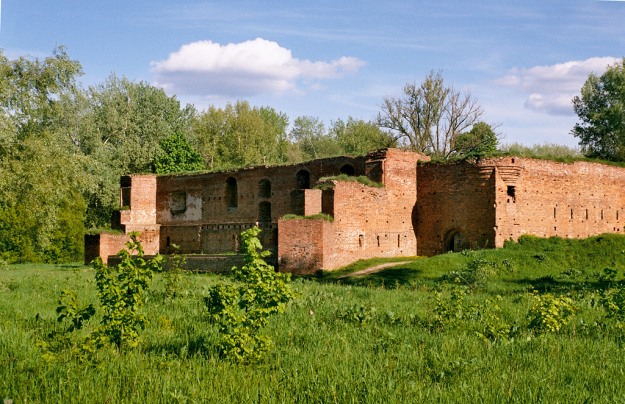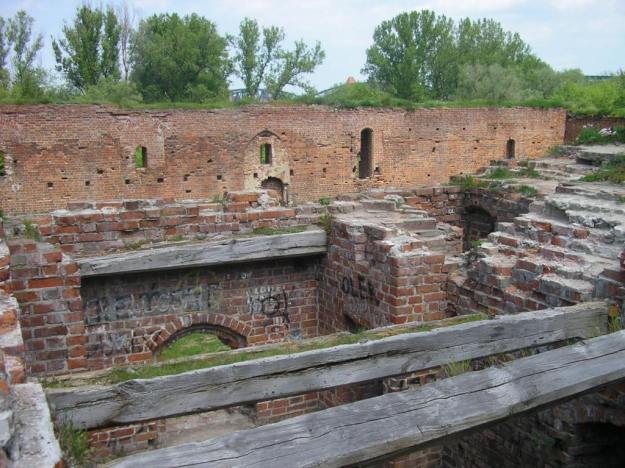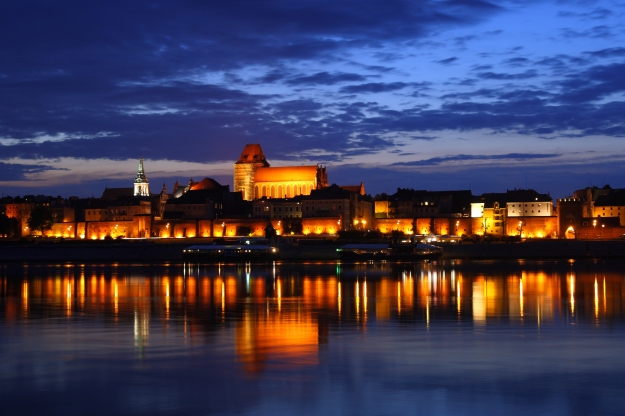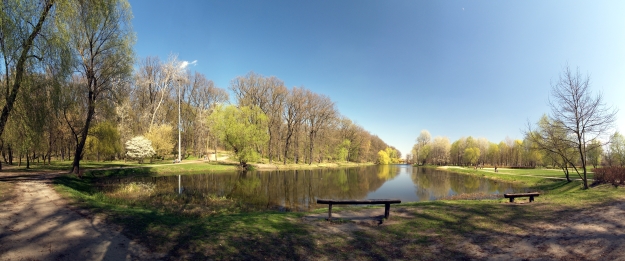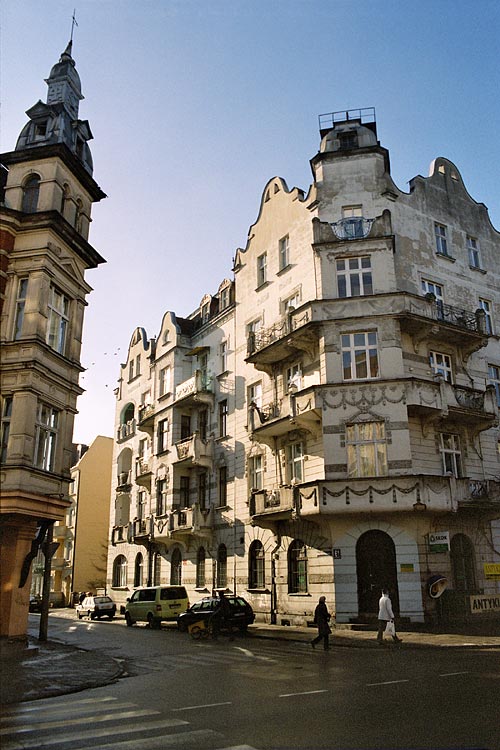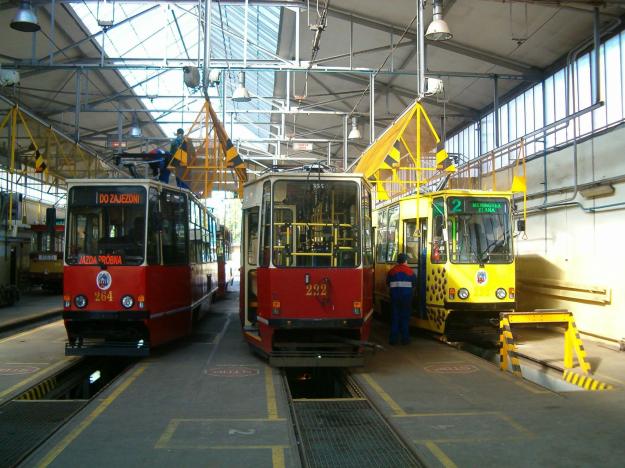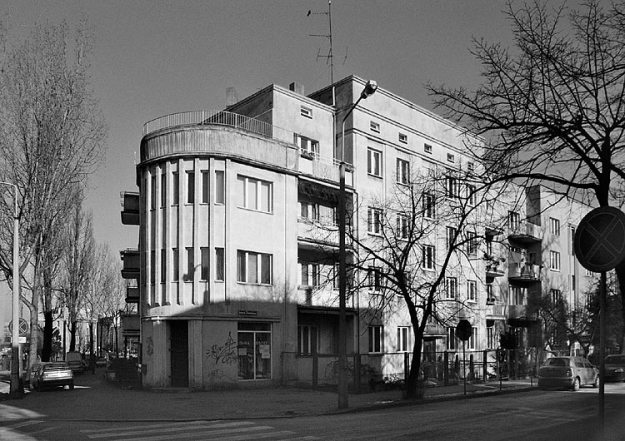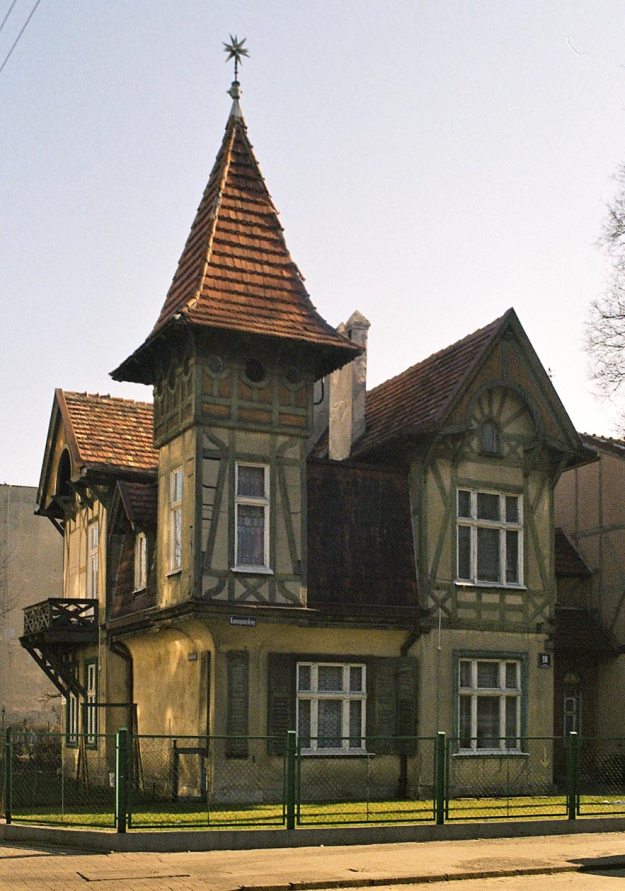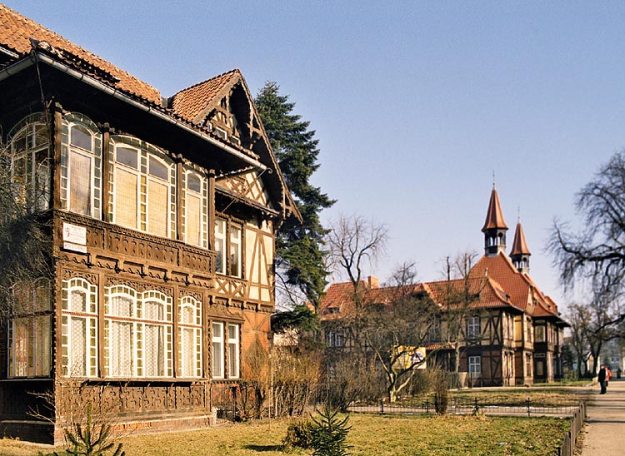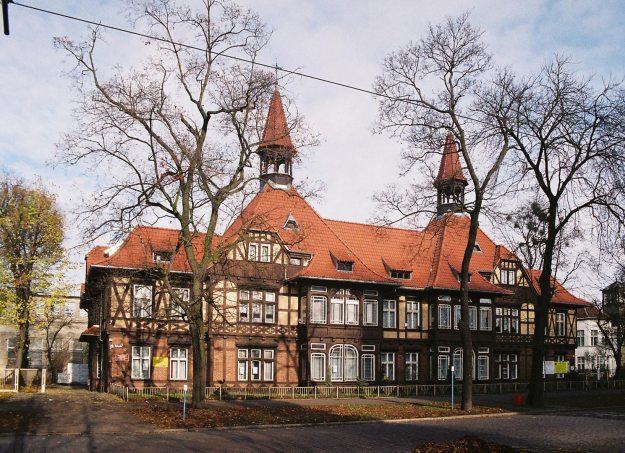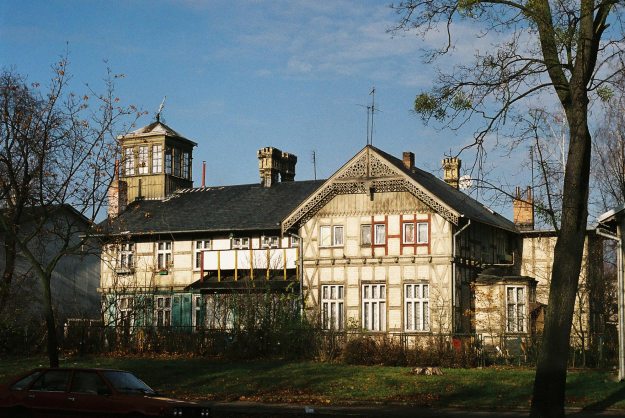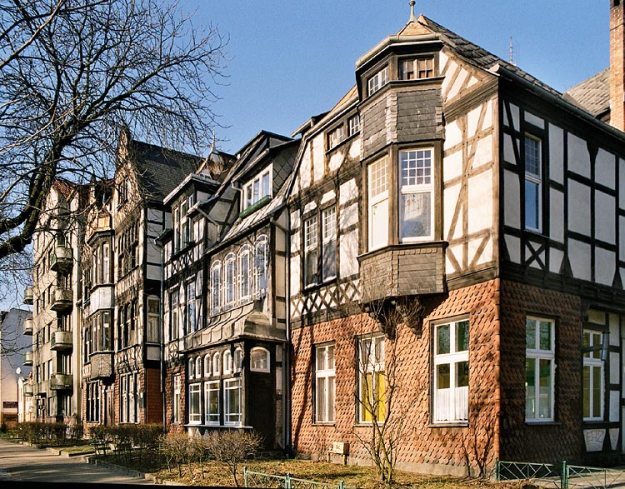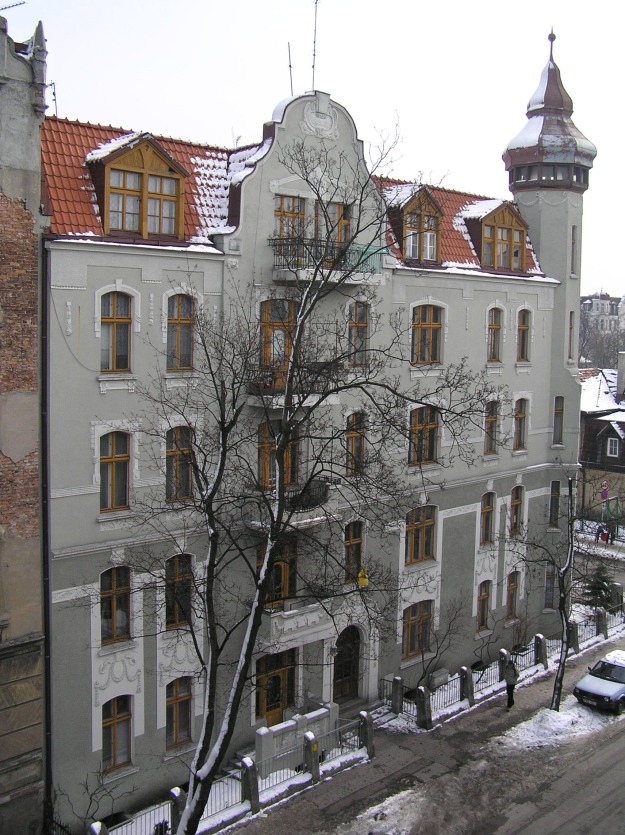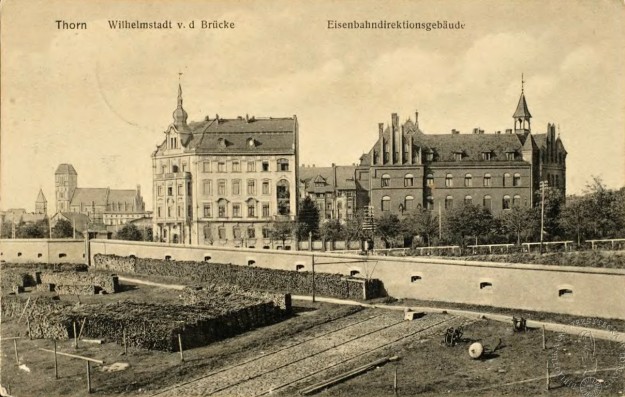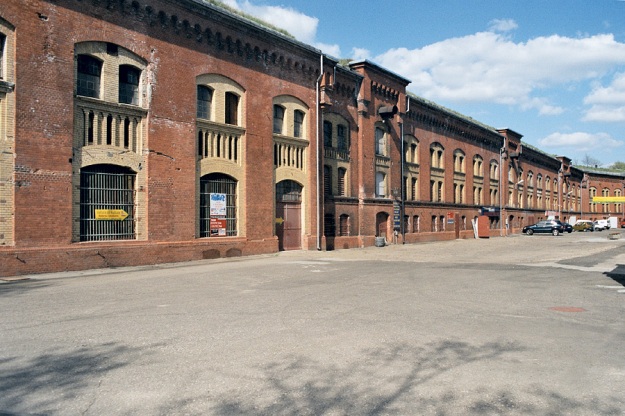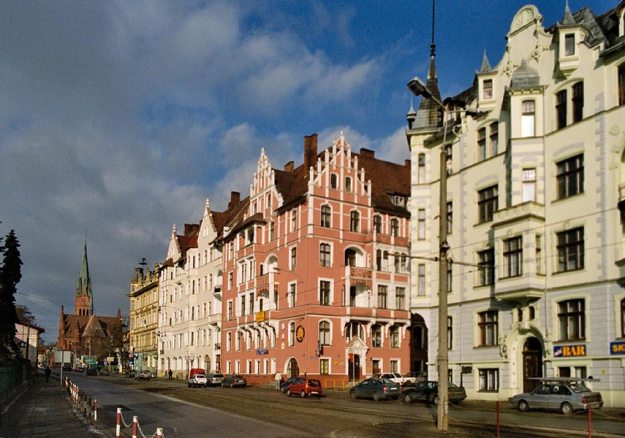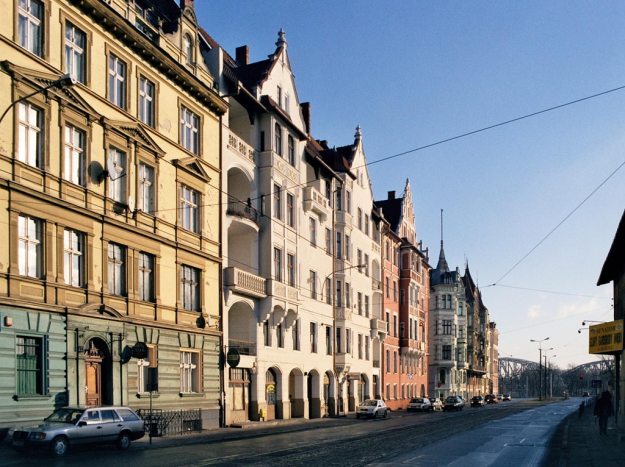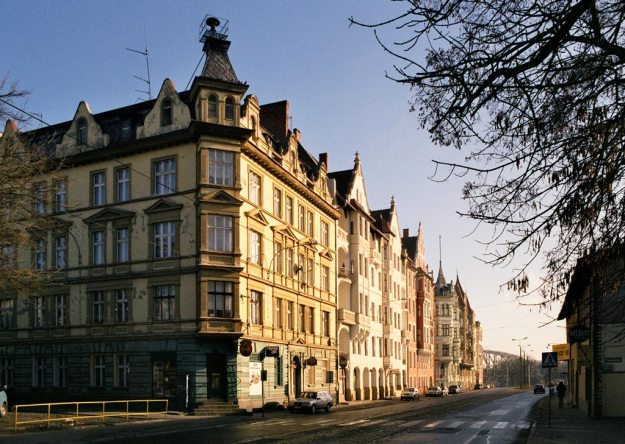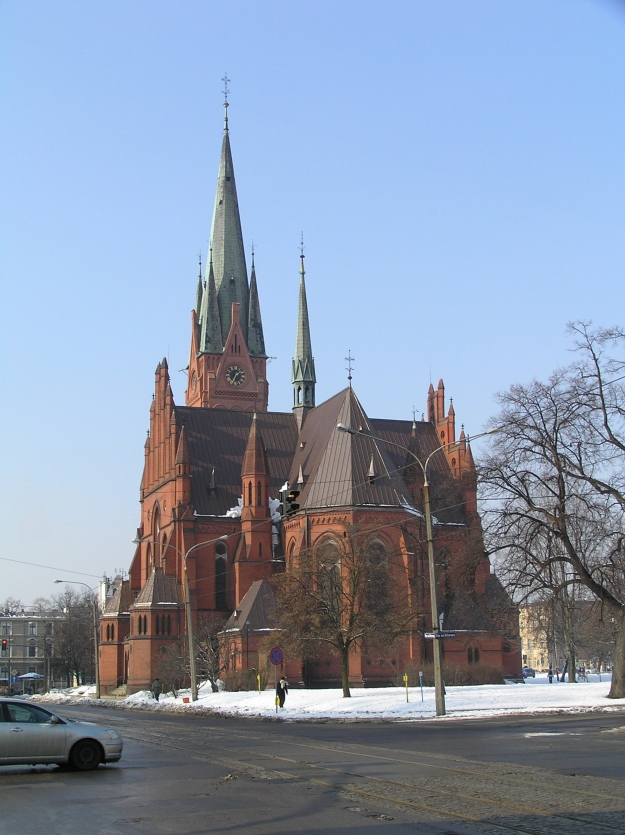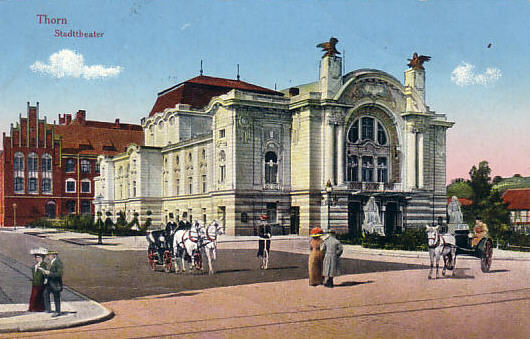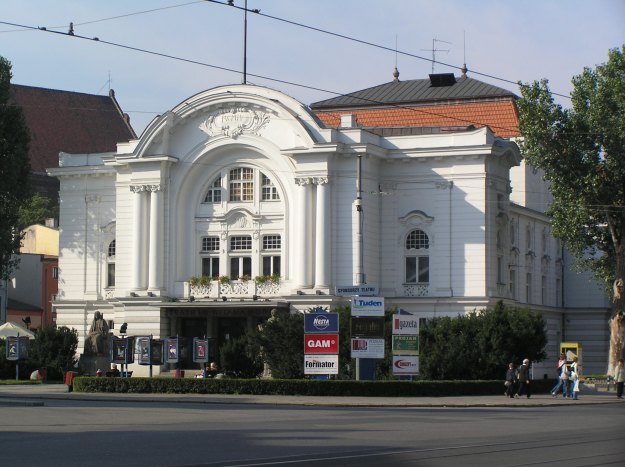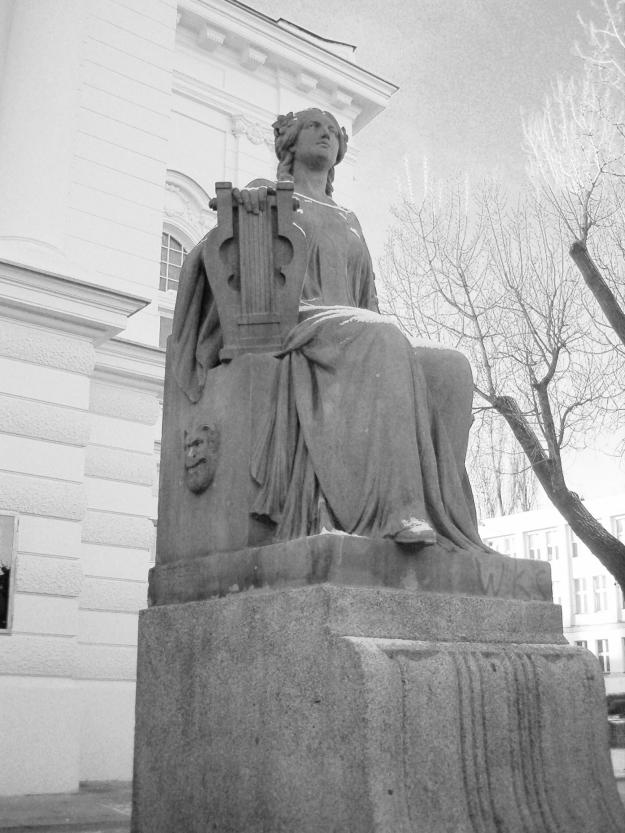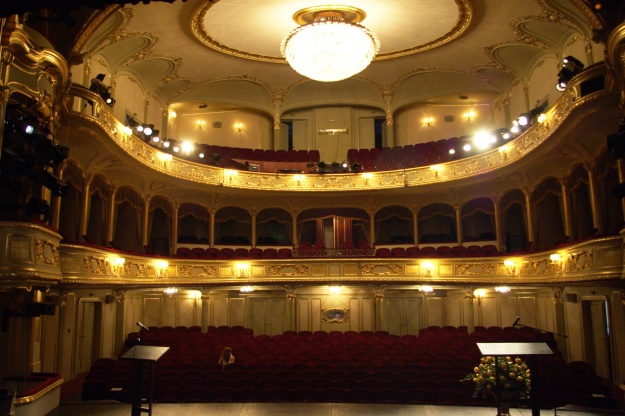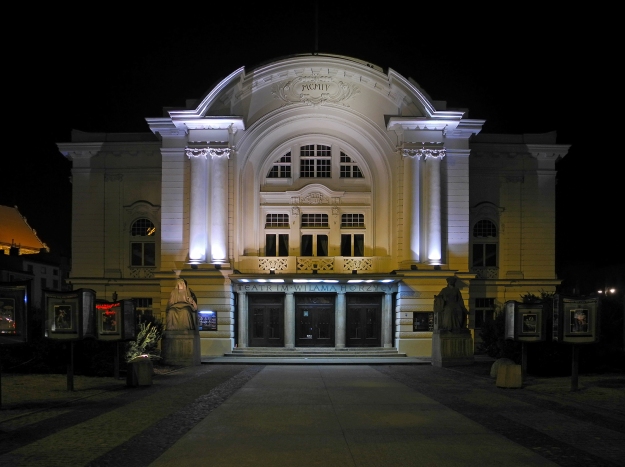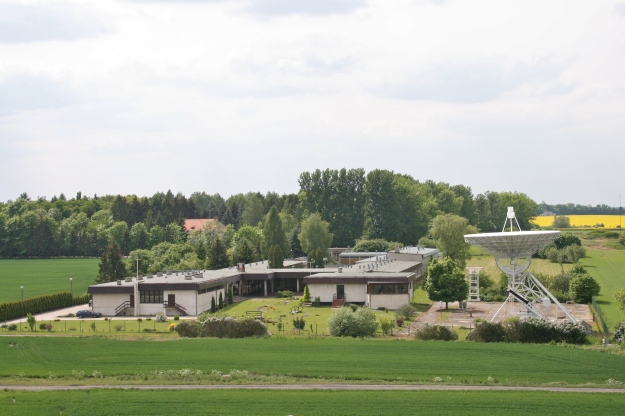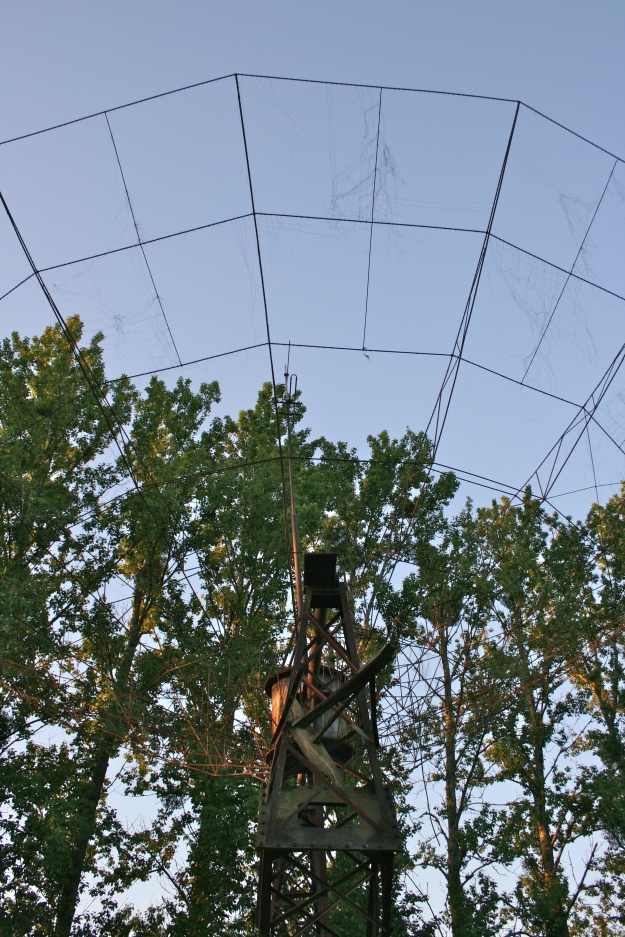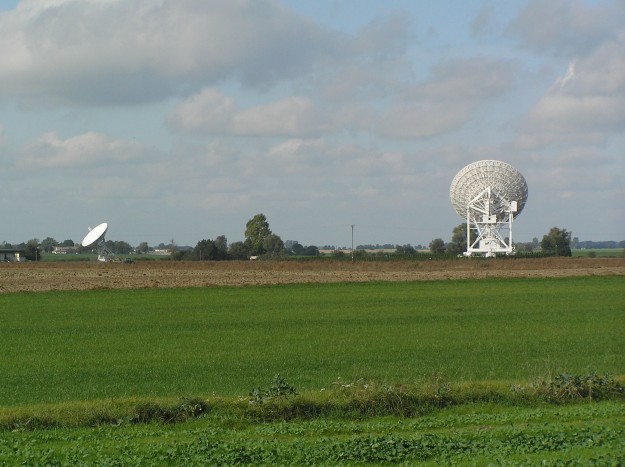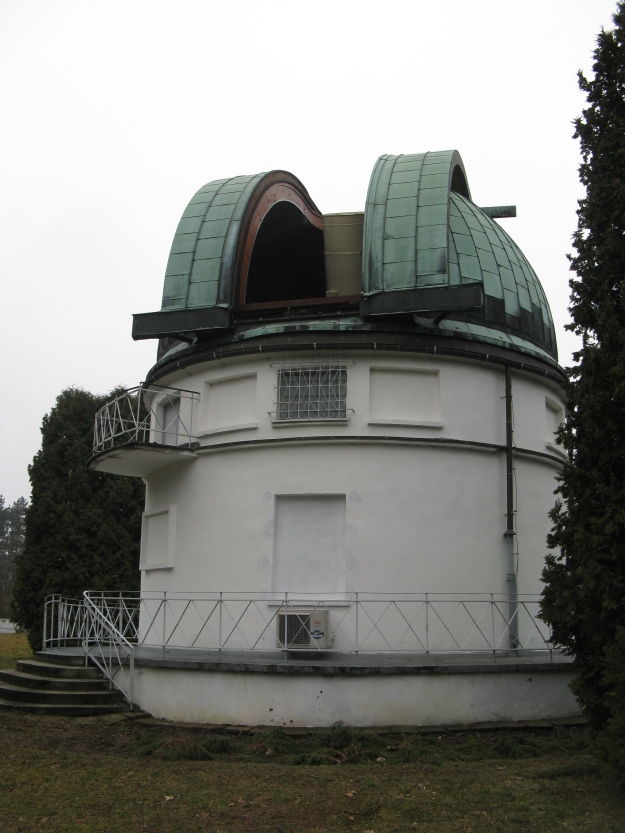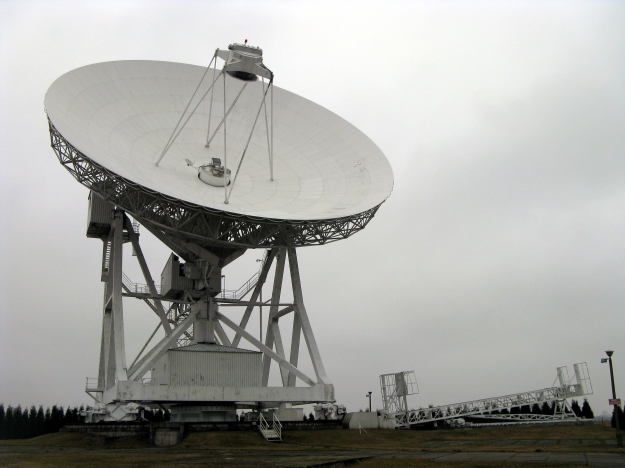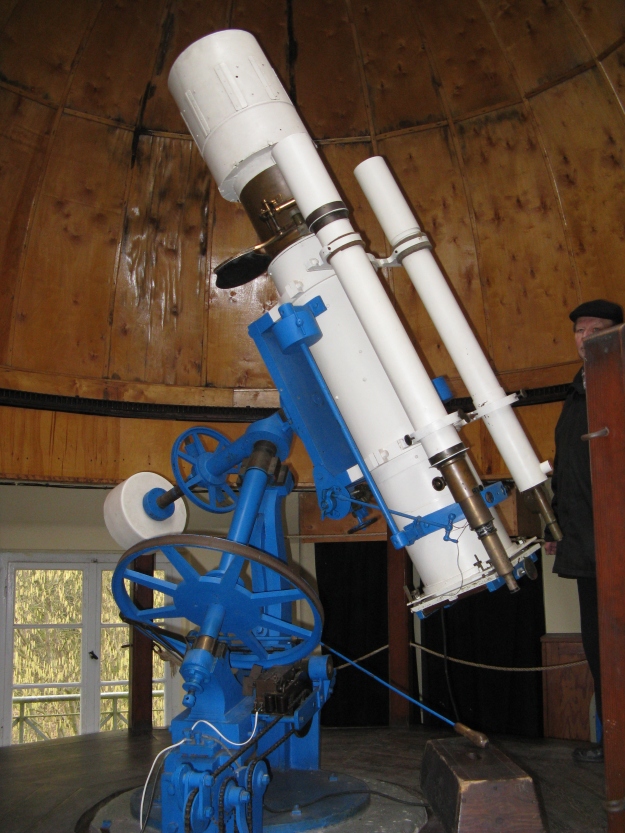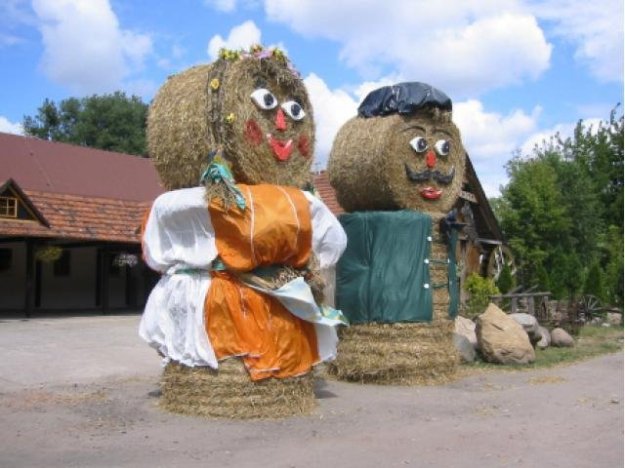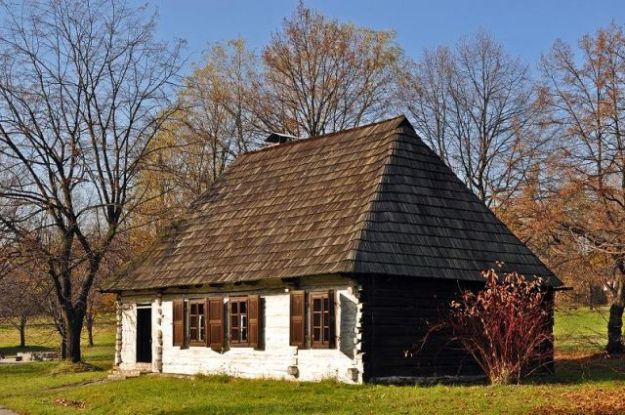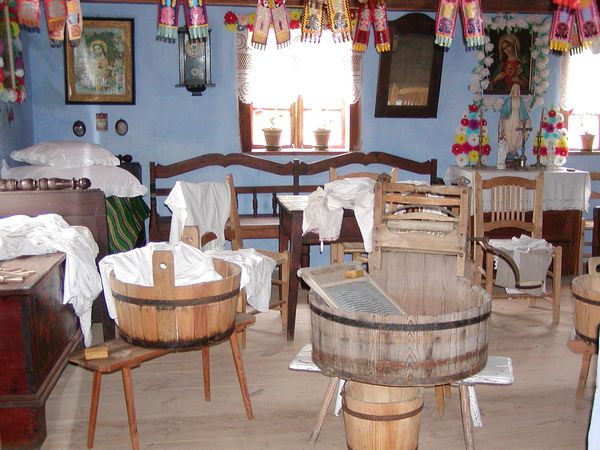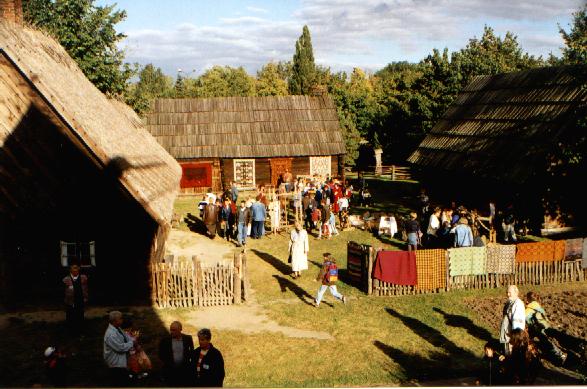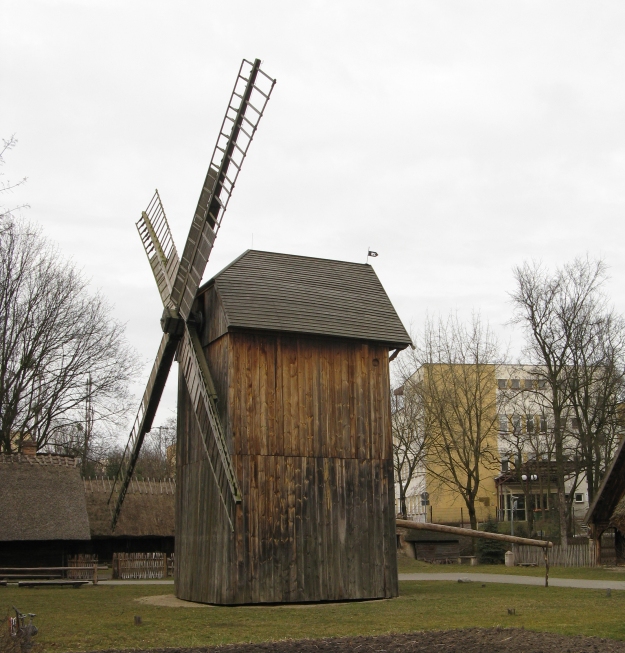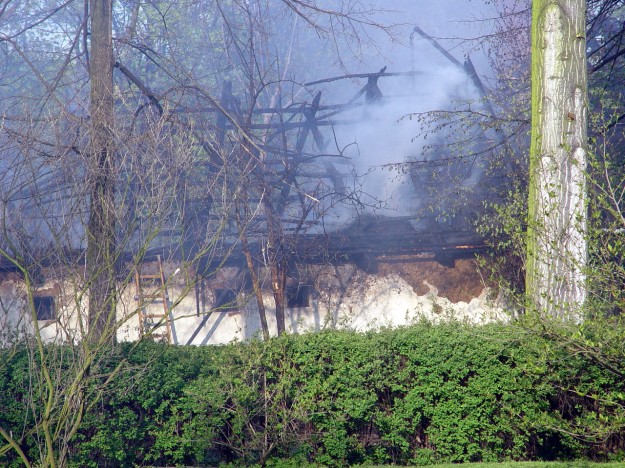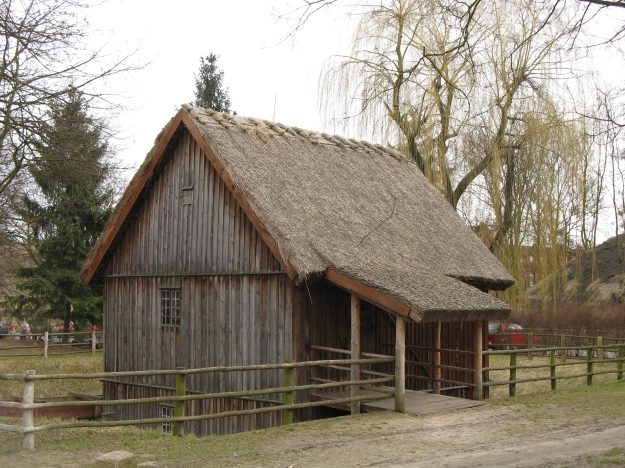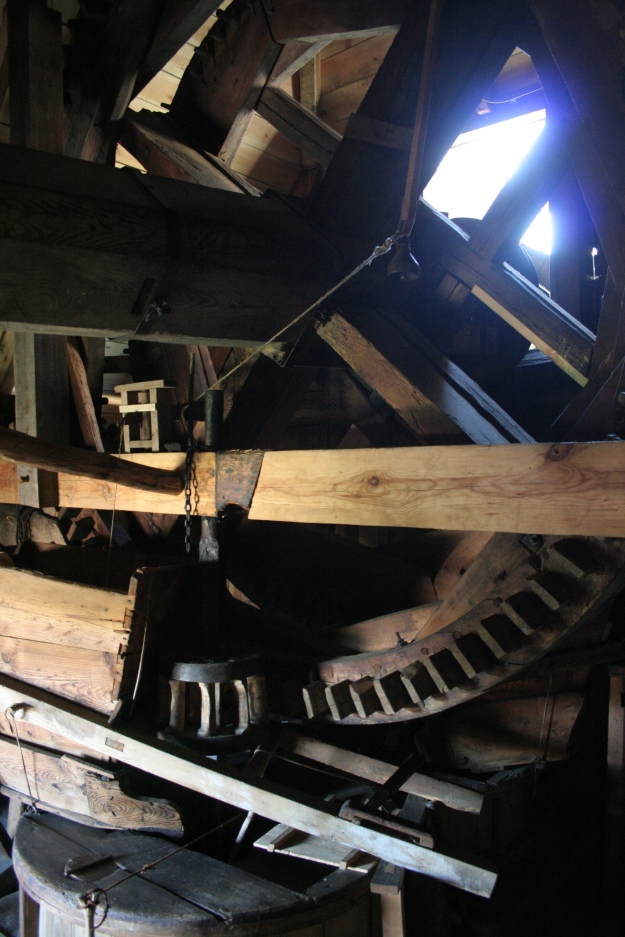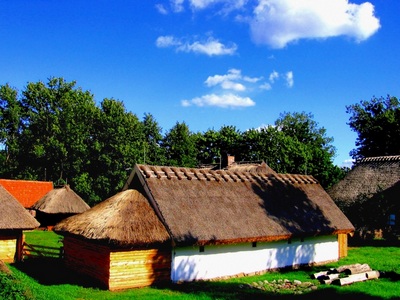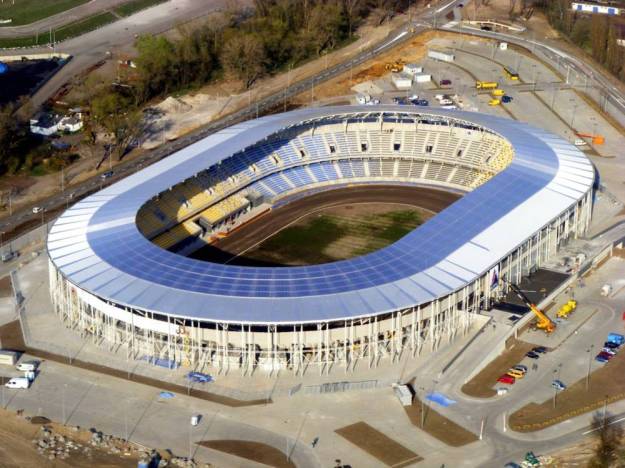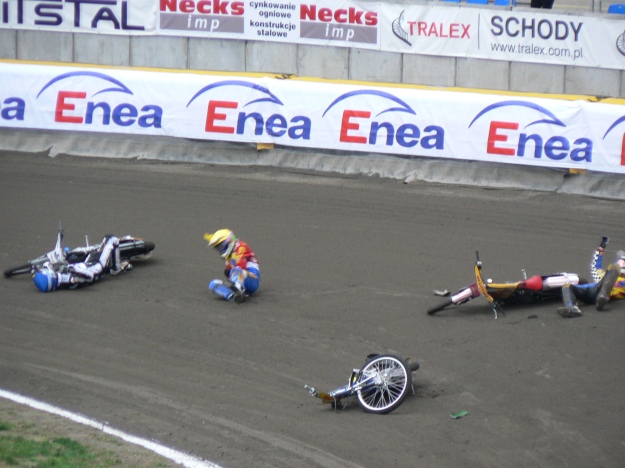Bydgoszcz–Toruń
Or, to give it its Sunday name, Bydgoszcz–Toruń metropolitan area, oraglomeracja bydgosko-toruńska. B-T is a “metroplex” – no, not a big cinema, a slowly integrating pair of cities, with their individual centres 30km apart, 850,000 inhabitants, and sharing one airport – Bydgoszcz Ignacy Jan Paderewski Airport or Port lotniczy im. Ignacego Jana Paderewskiego Bydgoszcz-Szwederowo (locally, the short name is Bydgoszcz-Szwederowo).
The airport is only 3.5km from the centre of Bydgoszcz – its only scheduled flights are Ryanair, though there are lots of seasonal charters taking annual passenger numbers over 340,000. It’s close to 60km by road to the centre of Toruń.
The No 80 bus runs from the terminal to is Bydgoszcz station – going the other way, the bus stop is right in front of the station. There are also a number of car hire operators at the airport, including Aviz, Hertz and National-Alamo.
Bydgoszcz started out as a fishing settlement on the Vistula and develo[ed into a stronghold on the Vistual trade routes. From 1331 to 1343 it was occpied by the Teutonic Knights.
The town was given city rights in 1346 and grew into a centre for wheat trading. It also attracted an influx of Jews. (Poland had the largest population of Jews in Europe).
Next conquerors were the Swedes, who occupied Bydgoszcz three times – 1626-29, 1656 and 1657. After their third visit, the Swedes destoyed the castle and left only 94 houses inhabited – 103 stood empty and 35 were burned down.
The city came under the Prussian rule in 1772, when it was renamed Bromberg. Under Frederick the Great the town was rebuilt. German settlement and Germanization increased in C19 in the German push eastward. A canal was built during this time from Bromberg to Nakło nad Notecią, which linked Bromberg from the Vistula, via the Brda, Noteć and Warta to the Oder.
In 1807 Bromberg became part of the Duchy of Warsaw. In 1815 it returned to Prussian rule and in 1871 it became a part of the German Empire.
After WW1 it was assigned to Poland. The local populace had to acquire Polish citizenship or leave the country. This led to a significant decline of ethnic Germans, whose number within the town decreased from 74,292 in 1910 to 11,016 in 1926.
Bloody Sunday
The Nazi German invasion of Poland began on 1 September 1939. On 3 September, a contingent of the Polish Army was withdrawing through when it was attacked by German irregulars from within the city. According to a British witness, a retreating Polish artillery unit was shot at by Germans from within a house; the Poles returned fire and were subsequently shot at from a Jesuit church. In the ensuing fight both sides suffered some casualties; captured German non-uniformed armed insurgents were executed on the spot and some mob lynching was reported. A Polish investigation concluded in 2004 that Polish troops had been shot at by members of the German minority and German military intelligence agents; around 40–50 Poles and between 100 to 300 Germans were killed.
The killings were followed by German reprisals and oppression. In an act of retaliation for the killings on Bloody Sunday, a number of Polish civilians were executed by German military units. According to German historian Christian Raitz von Frentz, 876 Poles were tried by German tribunal for involvement in the events of Bloody Sunday before the end of 1939. 87 men and 13 women were sentenced without the right to appeal. There are thought to have been 120 executions in relation to Bloody Sunday, and the execution of 20 hostages after a German soldier was allegedly attacked by a Polish sniper.
According to a German version, Polish snipers attacked German troops in Bydgoszcz for several days (Polish sources and witnesses do not confirm this). The German governor ordered the execution of 80 Polish hostages over the next few days. By September 8, between 200 and 400 Polish civilians had been killed. A number of Boy Scouts were set up in the marketplace against a wall and shot; a devoted priest who rushed to administer the last rights was shot too, receiving five wounds. Murders continued all week; 34 of the leading tradespeople and merchants of the town were shot, as well as many other leading citizens.
Many Poles, particularly members of the intelligentsia (again, eliminate future leaders) and the Jews, were singled out for deportation, or killed outright. More than 20,000 Polish citizens of Bydgoszcz (14% of the population) were either shot or died in concentration camps during the occupation.
The Jewish inhabitants of Bromberg fared as they did elsewhere – they were sent to death camps or executed in the city itself. Stutthof set up a sub-camp for women – Bromberg-Ost – and a deportation camp was set up in nearby Smukała.
37,000 citizens of the city, Polish and Jewish, died during the war.
Bydgoszcz was liberated by the Red Army in 1945, the same year it was made seat of the Pomeranian Voivodeship. The north of the province was soon split off to form the Gdansk Voivodeship and the remainder was re-named Bydgoszcz Voivodeship in 1950.
March 1981 saw violent suppression of Solidarity in the city.
Today Bydgoszcz serves with Toruń as the joint capital of the Kuyavian-Pomeranian Voivodeship.
Visiting Bydgoszcz
Erected between 1466 and 1502, the Church of St Martin and Nicolaus, commonly known as Fara Church, is the oldest building in the city. Look for a late-Gothic painting entitled Madonna with a Rose or the Holy Virgin of Beautiful Love from the 16th century and the colourful 20th-century polychrome.
Another church worth visiting, and only a bit younger, is the Church of the Assumption of the Holy Virgin, commonly referred to as “The Church of The Poor Clares”. This famous landmark was built in 1582 – 1602. The interior is rather austere – the church was stripped of its furnishings when the C19 Prussian authorities dissolved the Order and turned the church into a warehouse. It’s still worth a visit, though, especially to see the original wooden polychrome ceiling dating from C17.
Mill Island (Wyspa Młyńska ) is among the most spectacular and atmospheric places in Bydgoszcz. What makes it unique is the location in the very heart of the city centre, just a few steps from the old Market Square. It was the ‘industrial’ centre of Bydgoszcz in the Middle Ages and for several hundred years thereafter, and it was here that the famous royal mint operated in the 17th century.
Most of the buildings which can still be seen on the island date from the 19th century, but the so-called Biały Spichlerz (the White Granary) recalls the end of the 18th century. However, it is the water, footbridges, historic red-brick tenement houses reflected in the rivers, and thegreenery, including old chestnut trees, that create the unique atmosphere of the island.
The Hotel pod Orłem (Hotel Adler or The Eagle Hotel), an icon of the city’s 19th-century architecture, was designed by the distinguished Bydgoszcz architect Józef Święcicki, the author of around sixty buildings in the city.
Completed in 1896, it served as a hotel from the very beginning and was originally owned by Emil Bernhardt, a hotel manager educated in Switzerland. Its façade displays forms characteristic of the Neo-baroque style in architecture.
Saint Vincent de Paul’s Basilica, erected between 1925 and 1939, is the largest church in Bydgoszcz and one of the biggest in Poland. It can accommodate around 12,000 peopleThe most characteristic element of the neo-classical temple is the reinforced concrete dome 40 metres in diameter.
The three granaries in Grodzka Street, picturesquely located on the Brda River in the immediate vicinity of the old Market Square, are the official symbol of the city. Built at the turn of the 19th century, they were originally used to store grain and similar products, but now house a wonderful series of museums (art, history, ethnography) as the City’s Leon Wyczółkowski District Museum.
Also see
The Main Post Office, Jagiellońska 6
The Town Hall, Jezuicka 1. Built in the 1650s and extended in C18
The man crossing the river, a sculpture, balancing on cords (left from the bridge as you walk towards old town).
Botanic garden, ul. Gdańska 173-175 (east of the city). Close by is a leisure park, a zoo and an amusement park
Open all year from 9:00 am until dusk. Admission is free
Pomorskie Muzeum Wojskowe (Army Museum), ul. Czerkaska 2, 85-641 Bydgoszcz (at ul Gdanska).
Exceptional war museum for its outdoors arsenal of tanks and rockets. In addition to that there is lots of information on 6th and 8th century history.
Admission 5/2.5zł, Sun free
Camerimage. The International Film Festival of the Art of Cinematography usually starts in the last week of November.
And catch the water tram
Finally, a few more pictures to encourage a visit to Bydgoszcz
Bydgoszcz to Toruń is about an hour by bus – or you can drive from the airport in the same time (roughly 60km by road), if Toruń is your first destination or base for the area – so that’s where we’re going next.
The Old Town of Toruń is a UNESCO World Heritage site, so you’re in for a treat.
Toruń is also the Polish capital of gingerbread – count us in! Especially good is the version with jam in the centre and coated with chocolate, or the honey version.
Before we get going, scroll back up to the Bydgoszcz flag and check the doors. I read the two flags as both offering places of refuge and trade, but Bydgoszcz is on the left bank and Toruń is on the right.
Toruń is one of the oldest cities in Poland. The medieval old town of Toruń is the birthplace of the astronomer Nicolaus Copernicus.
The first settlement in the vicinity of the modern city has been dated to 100BCE and the Lusations. In C7 to C13 there was a Slavonic settlement. Spring 1231 saw the arrival of the Teutonic Knights, who built a fortress but, due to flooding, the settlement was moved to the present site of the Old Town. In 1264, the adjacent New Town was founded, and in 1280 the cities joined the Hanseatic League and became an important medieval trade centre as Thorn.
Early C15 saw more action, not least the First Peace of Thorn which ended the Polish-Lithuanian-Teutonic War. In 1440 the gentry of the cities of Thorn formed the Prussian Confederation which, in 1454, rose against the Teutonic Knights. After almost 200 years, the New and Old Towns amalgamated in 1454. The Poles destroyed the Teutonic castle. The Thirteen Years’ War ended in 1466 with the Second Peace of Thorn in which the Teutonic Order ceded their control over western provinces, which henceforth became part of Royal Prussia, and Toruń became part of the Kingdom of Poland.
During the Great Northern War (1700-1721) Tsar Peter the Great worked in Toruń to prepare the restoration of Augustus the Strong as King of Poland. The second half of C17 and early C18 also saw tensions between the German-speaking Protestant gentry and middle class and the Polishspeaking Roman Catholics.
Like its neighbour, Toruń was annexed by Prussia following the Second Partition, leading to later attempts to Germanise the province. The Poles of Toruń resisted the take-over by Germans and German culture and started a Polish language newspaper, Gazeta Toruńska.
After WW1, Poland had access to the Baltic only through a narrow corridor of land, which included Toruń. During WW2, the city was administered by Nazi Germany as part of Danzig-West Prussia.
The Polish Corridor – Germany to the east AND west, and the (German) Free City of Danzig nearly closing the top. In the space that remained, Poland built its own seaport – Gdynia – and the spa town of Sopot. The Hel Peninsula was the last part of Poland to surrender in 1939 – it’s a hugely popular destination these days for beach lovers, water sports, fishing and history buffs.
By the end of November 1939, those Jews who had stayed in the city had been shipped to the Łódź Ghetto and Toruń was declared Judenfrei. Poles were classified as untermenschen – sub-humans “barely fit for exploitation as slaves” – and rounded up to be used as slave labour, executed or expelled (More than 1.7 million Poles were expelled from German-occupied territories in WW2, to create the Lebensraum Hitler had promised to the German people. A “purely German area” within 15–20 years, as explained by Hitler in March 1941.
By that time, too, the General Government was to be cleared of 15 million Polish nationals, and resettled by 4–5 million ethnic Germans. The chain of forts around Toruń became PoW camps, collectively known as Stalag XX-A.
When Toruń was returned to Poland at the end of WW2, the ethnic Germans were expelled.
Both population and industry grew in the post-War years. The Nicholas Copernicus University was founded in 1945. And Toruń now shares the position of provincial capital with its “megaplex brother”, Bydgoszcz.
Visiting Toruń
If you’re anything like us, you’ll head straight for the Gingerbread Museum (muzeum piernika) in ul Rabianska. Open from 9 a.m. to 6 p.m. from April to December (10 a.m. to 6 p.m. from January to the end of March). http://www.muzeumpiernika.pl/?page=home-english
In a one-hour tour/demonstration the museum takes you through the process of making Toruń gingerbread – groups (on the hour) need 5 guests to set out, except the 4 p.m. group which runs with fewer people if required. Most important – YOU GET TO MAKE YOUR OWN GINGERBREAD!
Ticket prices for a tour in polish:
children and students* – 8zl
adults – 9.50zl
disabled children and students – free
Ticket prices for tour in other languages(English, German):
children and students* – 9.50zl
adults – 11.00zl
Ginderbread moulds
*Point of info – in Poland, discounts are mainly aimed at people who can prove their entitlement. For students, that usually means an upper age limit of 25 and either Polish or attending a school in Poland. The full adult rate for the gingerbread museum is 11.0zl – about £2.50
Toruń Old Town
The UNESCO World Heritage site is what brings many people to Toruń. Unlike many other historic cities in Poland, Toruń escaped substantial destruction in World War II and all of the important architectural monuments in the Old Town are originals, not reconstructions.
Having said that, the city has put some major work into renovating and protecting the buildings of Old Town and to returning the streets and squares to their historical appearance, including efforts to plant trees and create appropriate street furniture.
Unique for Poland, due to the scale of the task involved, many buildings, boulevards and the city walls are illuminated at night.
The Nicolaus Copernicus Museum is at ul. Kopernika 15-17. The famous astronomer was born in Toruń in 1473. The museum is situated in Copernicus’s house which is a pretty building. Unfortunately the museum’s “collection” mostly comprises of copies and facsimiles with very few explanations. 10 zl.
The Old Town Hall (Ratusz Staromiejski), Rynek Staromiejski 1 is one of the most beautiful Gothic town halls in Europe. Despite its many treasures it is not too rewarding for foreign visitors as it is almost entirely explained in Polish. Translations are very sparse or non-existent. The Museum consists of Gallery of Gothic art, Exhibition of old Toruń 1233-1793, Exhibition of Toruń coins, Court hall, Hall of Polish kings etc. Climb the tower for a beautiful view. 10 zl
Work on the building began in 1274, extended and rebuilt between 1391 and 1399, and extended at the end of the 16th century, this is one of the most monumental town halls in Central Europe.
On ul. Żeglarska stands the Cathedral of Saints John (Evangelist and Baptist) (Katedra świętych Janów). Copernicus was christened here. On its tower hangs Tuba Dei bell from 1500, one of the largest medieval bells in Europe.
The interior is not as colourful as some, but the stonework and furnishings are well worth seeing.
Krzywa Wieża (The Leaning Tower) is on ul. Pod Krzywą Wieżą. Part of old Toruń’s defence system built in the C13. Poor foundations led the tower to lean at an angle soon after its construction.
St Mary’s church (Church of Assumption of the Blessed Virgin Mary or Kościół Wniebowzięcia Najświętszej Marii Panny) just off the rynek dates from C14
St George’s Guidhall is another fine example of Toruń’s gothic architecture, as are the houses around Copernicus’ house.
Kamienica Pod Gwiazdą, the house at the sign of the star, was for a time owned b Filippo Buonaccorsi, called “Callimachus” *(2 May 1437 – 1 November 1496), an Italian humourist and writer who later became tutor to the sons of the king of Poland and a diplomat in his service. The house was rebuilt in the 16th century and in 1697, with a richly-decorated stucco façade and wooden spiral stairs
Check out, too, the city fortifications. Begun in C13 and extended in C14-C15, they were mostly demolished in C19.
Remnants are now preserved – including some city gates and watchtowers … including the famous leaning tower
The ruins of the Teutonic Knights Castle, ul. Przedzamcze, areb open 10 am – 6 pm (2zl). An outdoor museum. The castle is almost completely destroyed except for one tower and a dungeon, but still pretty cool.
Dwor Artusa (Artus Court), Rynek Staromiejski 6 is a monumental building on the place of medieval Artus Court in the end of 19th century.
Elsewhere in Toruń
St. James’s church or Kościół św. Jakuba, a basilica with monumental wall paintings and Gothic stalls is just off the New Town rynek
Cross the river to take in the view and you can also visit the Dybowski Castle. From the bridge over the Vistula turn right and walk a cobblestone road you’ll find under the bridge
You’ll find and explore the skeleton of what is left of the old Castle, built by Polish king Władysław Jagiełło in C15.
Bydgoskie Przedmieście (Bromberger Vorstadt), (west of the Old Town). Mostly residential district build in the late 19th and early 20th century. It contains many monuments of architecture, as well as a tram depot, city park and zoo/botanical garden
Przedmieście Świętej Katarzyny (Wilhelmstadt), built in the late 19th and early 20th century east of the Old Town, combines residential and military architecture. St. Catherine’s church is located at Wilhelmstad’s main square; with its over 80 meter high tower it still remains the highest building in Toruń.
Thorn Fortress
Toruń – Thorn – was an important town located just north of the border between Prussia and Russia. By the late C19 the walls were no longer sufficient to protect the town from artillery and in 1872 the Prussian government began construction of the chain of forts surrounding the town of Thorn.
The initial plans called for five main forts and two medium ones to be constructed. In the period of 1877–1884, forts II and XI were constructed, followed by forts IV, V, VII, XV, XIII and IX. Continuing changes in artillery and siege techniques, especially the introduction of an anti-building shell in 1883, rendered some of the plans for the fortress obsolete even before it was finished. For that reason, the importance of the main artillery forts was lessened in favour of infantry forts; some artillery forts were redesigned into infantry forts and more small fortifications were constructed. Over time the number of objects to be built increased. In the years 1888–1893, forts III, VI, VIII, X, XII and XIV were added. The last to be constructed was fort I, which was the most technically advanced one. Within 32 years, about 200 fortifications were constructed. Primarily the fortress consisted of seven main forts, six medium-sized ones, six artillery batteries, 32 infantry shelters, and 52 mid-field shelters (used for artillery and ammunition sheltering).
The Thorn Fortress complex would be constantly modernised by the Prussian government, for the last time in 1914 – just before the start of WW1. The majority of the forts were equipped with wing artillery batteries – armour artillery batteries between forts XI, XII, XII and XII, XIII, XIV, and an experimental artillery battery in fort XI. New observation points for infantry and artillery were also added. Exits from them were designed in a labyrinthine scheme, to reduce the effects from the explosions’ blast waves.
About 30% of Thorns infrastructure was related to the fortress, and about 25% of the city’s population were employed by the fortress. Despite costs amounting to more than 60million gold marks it was never besieged by Russian forces and took no significant part in the First World War.
In September 1939 some of the forts were used as POW camps for Polish prisoners, specifically those captured after the surrender of the Polish fort at Westerplatte, at the mouth of the Vistula, and on the Hel Peninsula. In June 1940 additional forts were added to the camp to accommodate British soldiers. In 1941 and 1942 Soviet prisoners arrived. Prison population peaked at 10,000 in the main and sub-camps. Stalag XX-A was liberated on 1 February 1945.
Toruń has two drama theatres (Teatr im. Wilama Horzycy with three stages and Teatr Wiczy), two children’s theatres (Baj Pomorski and Zaczarowany Świat), two music theatres (Mała Rewia, Studencki Teatr Tańca), and numerous other theatre groups. The city hosts, among others events, the international theatre festival, “Kontakt”, annually in May.
About 15km north of Toruń is Toruń Centre for Astronomy – a radio observatory with two dishes (diameters: 32 metres and 15 metres) as well as the largest Polish optical telescope – the 90 cm Schmidt-Cassegrain camera, a 60 cm Cassegrain telescope and a 23 m interferometer.. The facility is operated by the Nicolaus Copernicus University.
The Ethnographic Museum (skansen) is an open-air museum of fold architecture, recovering from a fire in 2004
Finally, right up to date, the Motoarena Toruń. The biggest and most modern purpose build speedway stadium in the world, in use since 2009. It is one of the sites for FIM Speedway Grand Prix
